See Ireland Like A Local: Here's What The Perfect Itinerary Looks Like
The people who live in a city or country are always going to have the best information on food, things to do, and more.
Rolling hills, pubs on every corner, and friendly people. That's what we think of when we consider taking a trip to Ireland. While it's always possible to have a great vacation based on popular tourist recommendations and attractions, especially when the place we're going is just plain awesome, it's when we learn what locals love that we can really have a great time.
The people who live in a city or country are always going to have the best information on food, things to do, and more. Of course, you'll want to go to Dublin when visiting Ireland, but there are some other places to keep in mind.
Here's what the perfect itinerary looks like so you can see Ireland like a local.

Stay At A Bed And Breakfast Instead Of A Hotel
One way to have the perfect trip to Ireland is to stay at a bed and breakfast instead of a hotel. This recommendation comes from a local posting on Reddit . They wrote, "I hate when I see tourists staying at soulless hotels dotted around motorways" and said that they will be much cheaper than a hotel, too. They continued, "They're often family-owned and run by people who REALLY care that you enjoy your stay. They have their homes and livelihoods invested in that."
We love this idea because it just sounds so cozy and warm, and it sounds like a nice way to experience this country. One good choice is Adare Country House. It's located in Adare, Ireland , a County Limerick village. There are many local restaurants, and it couldn't be a more charming B&B. Trip Advisor reviewers love the owners. If you want to stay in Dublin, consider Pembroke Hall. It's a townhouse that offers up an amazing breakfast.
See The Sweet Dingle Peninsula
Locals know that the Dingle Peninsula is absolutely worth checking out during your trip to Ireland. According to Community.ricksteves.com , you can rent a car in Dublin and drive over. Trip Advisor describes the Dingle Peninsula as "A scenic stretch of land surrounded by rugged coastline."
There are so many fun places to check out here. You can go to the Dingle Distillery which makes gin, vodka, and whiskey, and you can take a tour. When you're hungry, grab a table at Out Of The Blue Seafood. This is a unique restaurant that only offers up fish, not meat, and the restaurant closes during the wintertime. That's a good reminder to travel to Ireland anytime but the winter since you don't want to miss out on certain cool spots.
Via Hero says that you have to go to Murphy's for ice cream when in this area. The company's website lists the available flavors as Smooth Chocolate, Elderflower, Honeycomb Caramel, Irish Brown Bread, and more, which sound delicious.
When you're in Dingle, you can also stay at Murphy's B&B. It's located on Strand Street and there are only six rooms, so it's definitely going to be cozy. You'll get breakfast, free Wi-Fi, and can walk over to a number of pubs. The staff often sing and perform music.
Check Out A Traditional Irish Pub Plus Some Restaurants Locals Recommend
You'll want to spend some time in Dublin, and a popular thing to do is head over to a pub. A local recommended The Flowing Tide on Reddit. They wrote that it's "good if you're looking for a proper Dublin pub close to everything. Pubs of its kind are starting to disappear from the city centre so have a look in if you can." It's on Abbey Street and has a really comfortable feeling to it. Grab a pint of beer and also try the pizza.
Thanks to a forum on Trip Advisor about the restaurants where locals enjoy going to in Dublin, we know about two places: The Duke and Avoca. The Duke is great for the kind of grub that you find in pubs, such as fish and chips, as we can see from the left side of this photo.

How To Get Around Ireland: The Pros + Cons To Cars, Tours and Public Transport
By Author Keith O'Hara
Posted on Last updated: December 29, 2023
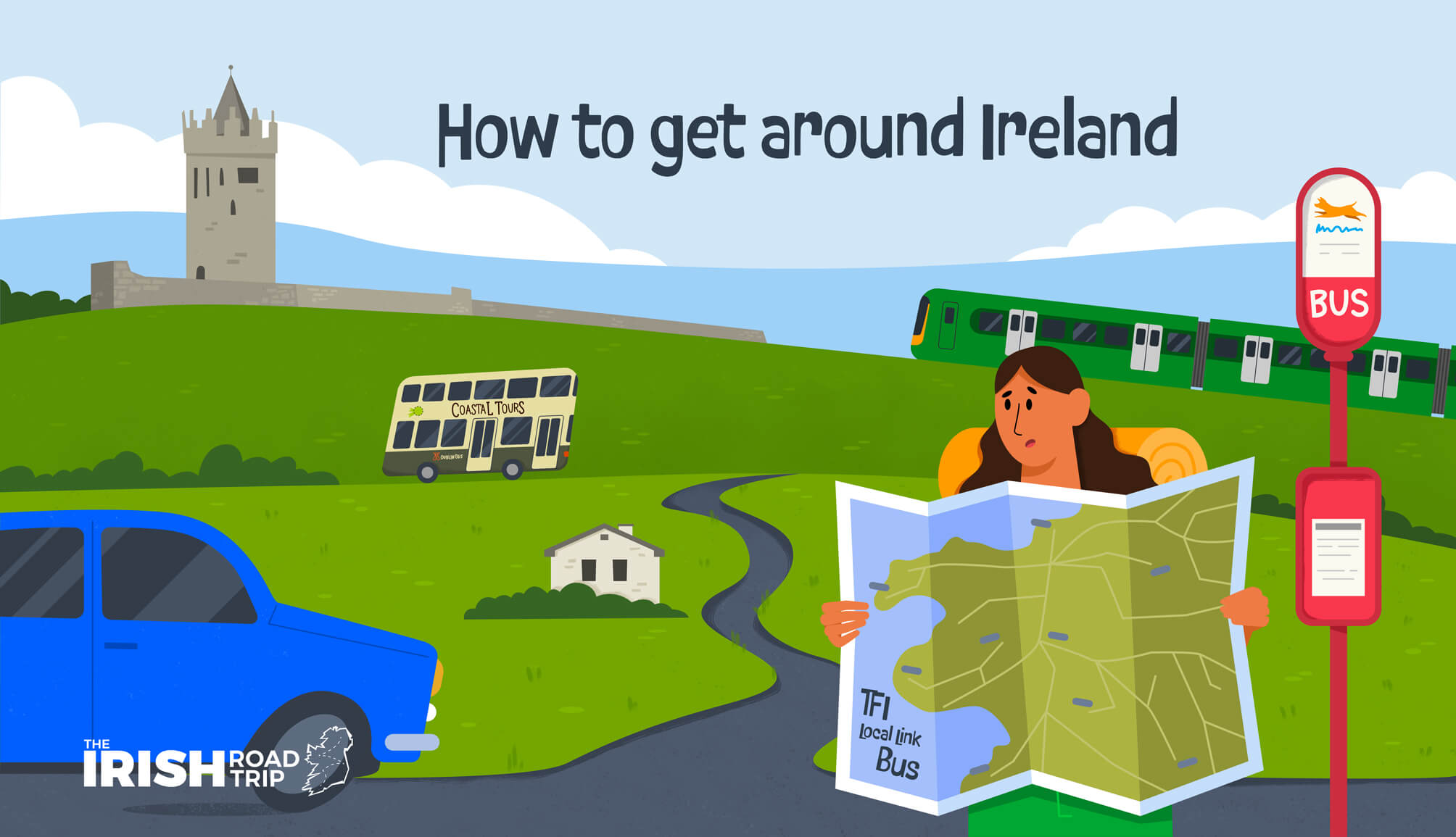
Deciding how to get around Ireland can be stressful.
Especially if this is your first time visiting and you don’t know the lay of the land.
Over the 34+ years that I’ve lived in Ireland I’ve travelled about by car, train bus, bike and everything in between.
The guide below leans on my many years of getting around Ireland while making every mistake imaginable along the way!
Table of Contents
Some quick need-to-knows about how to get around Ireland
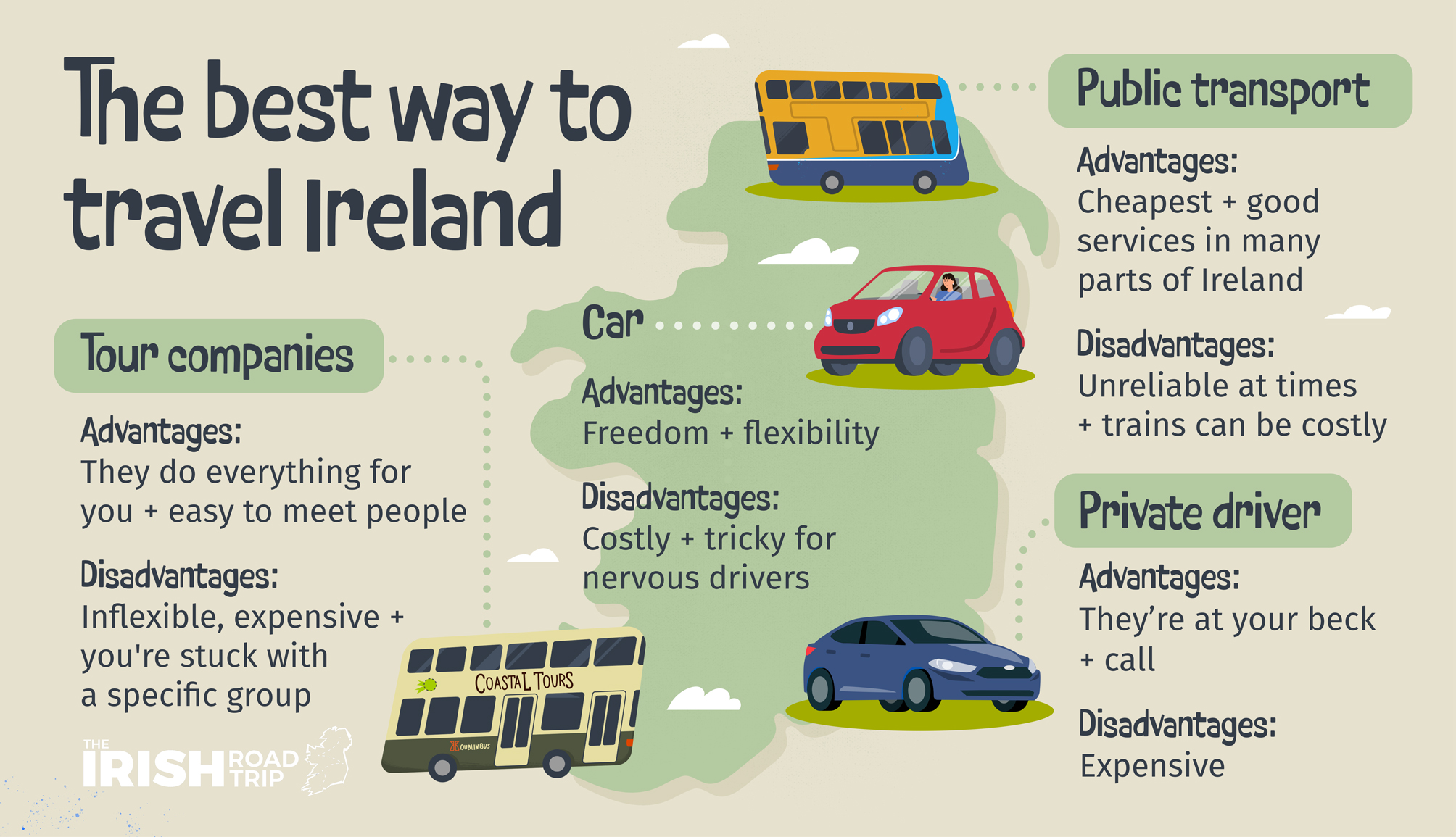
Click to enlarge
Take 30 seconds to read the points below as they’ll get you up-to-speed on how to get around Ireland quickly:
1. Your options are car, bus, train, tour and tram (kinda)
Public transportation in Ireland varies by county-to-county. You’ll find all of the above in Dublin (the capital) and most ‘main’ cities and towns (e.g. Killarney) will have the first four. More info below.
2. If you’re unsure, focus on your planned route
I’d recommend that you don’t even think about how to get around Ireland until you’ve at least mapped out a rough Ireland itinerary . The reason for this is that it may not be possible to do what you want to do without a car (of course, it may turn out that your road trip is completely doable via public transport).
3. There are pros and cons to every mode of transport
Most people (myself included) say that the best way to get around Ireland is by car, but there’s pros and cons to it and every mode of transportation. It’s worth weighing up the pros and cons of each as they’ll ultimately help you decide.
4. Budget will often be a decider
9 times out of 10 budget is the decider to how visitors end up travelling around Ireland. Renting a car in Ireland is often pretty expensive and, if you’re doing Ireland on a budget , the cost of your trip to Ireland will drop dramatically by using buses and trains.
The best way of getting around Ireland boils down to 3 things
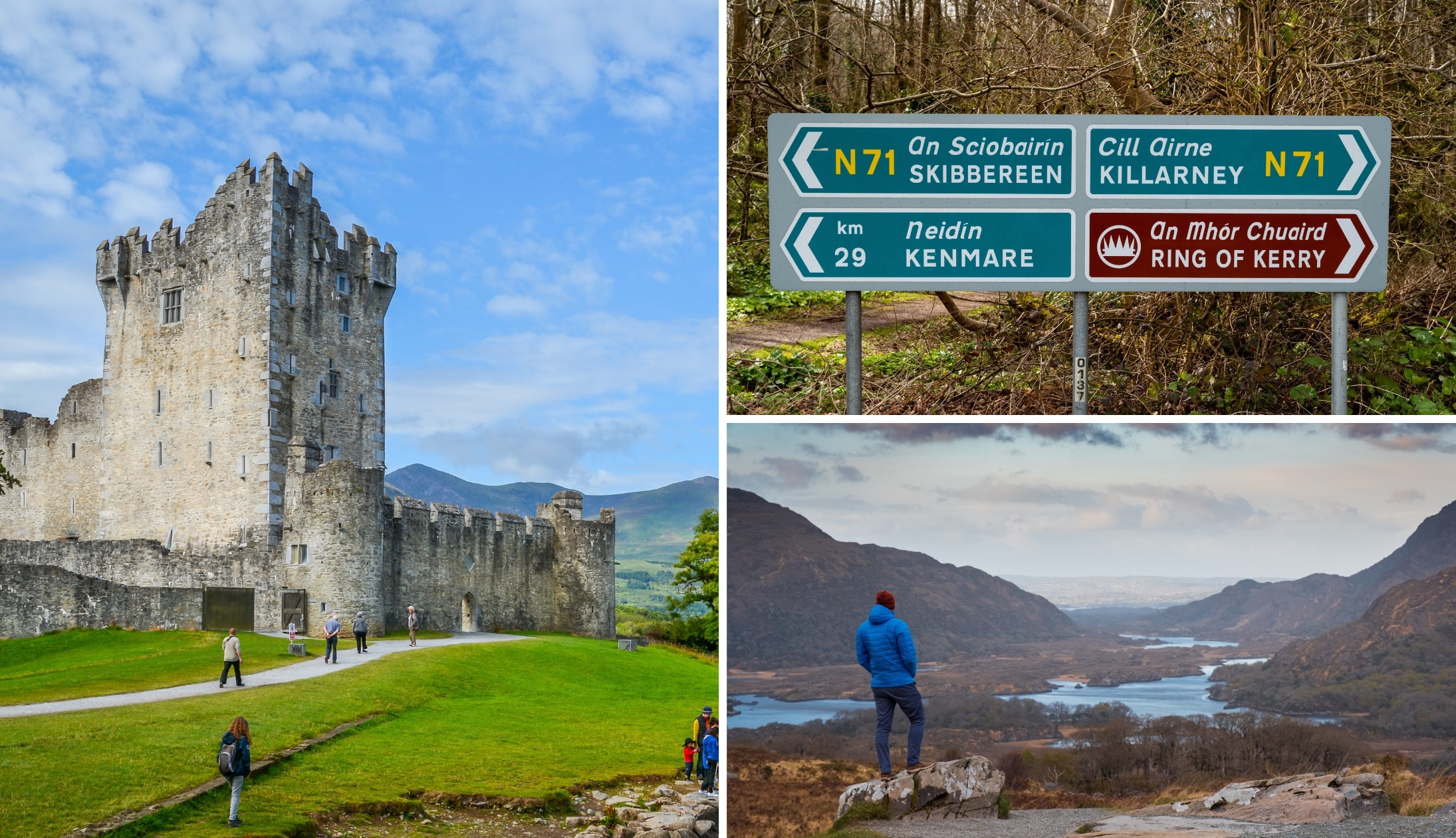
Photos via Shutterstock
Deciding how to get around Ireland isn’t a decision to take lightly. Your main mode of transport, where it be a car or a bus, is going to have a massive effect on your trip.
There are three different things to consider when making your decision:
- Your experience
- Your budget
- What you want to see
1. Your experience
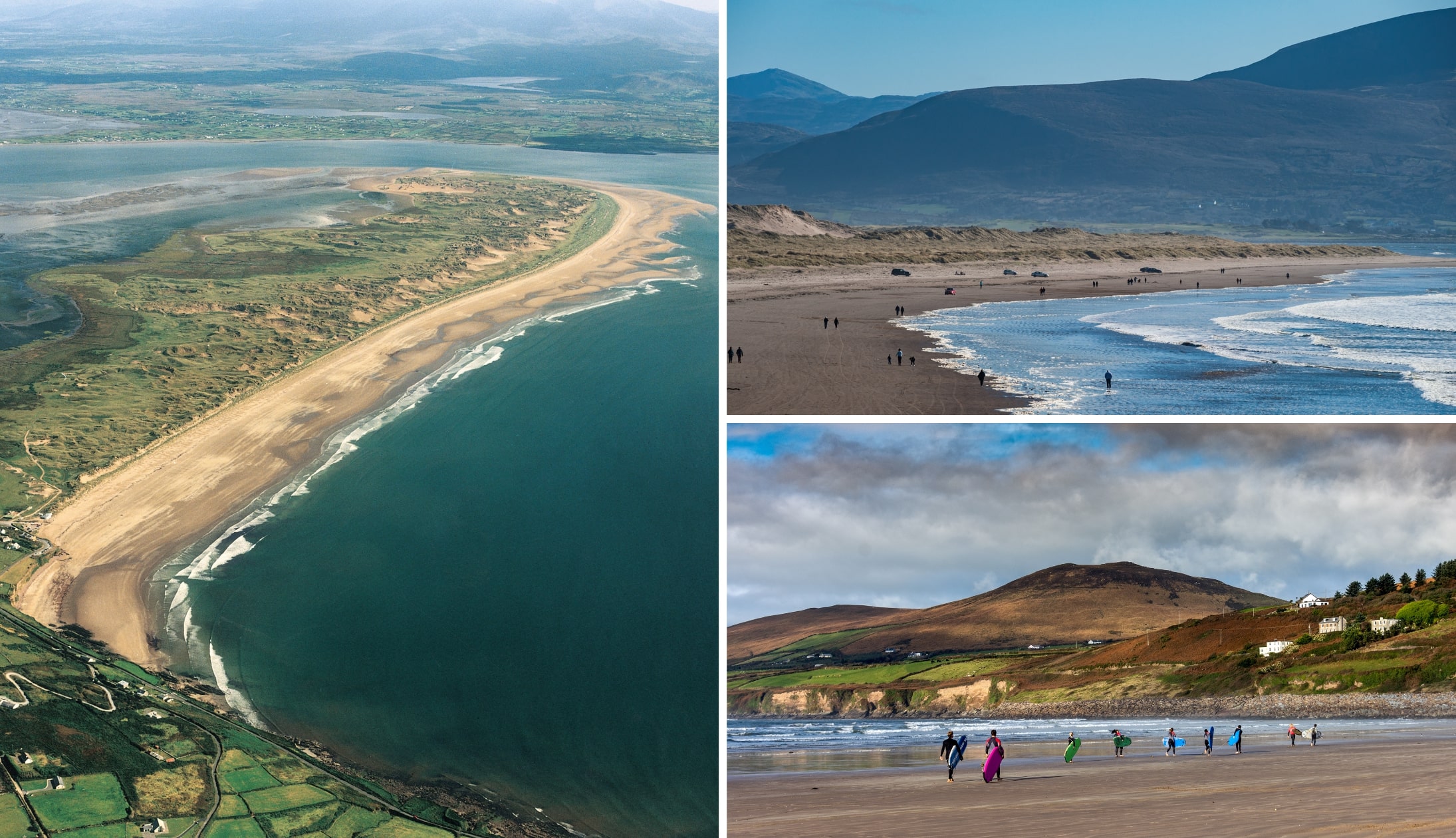
The biggest thing to consider about how to get around in Ireland is how the chosen mode of transport is going to affect your overall experience while travelling.
If you’re nervous behind the wheel and you’re driving in Ireland for the first time , will having to drive each day cause you stress and ruin the trip?!
Or maybe you love driving and the thoughts of driving the Ring of Kerry or the Antrim Coast will be the highlight of the trip?!
Or , if getting around Ireland needs to be as stress-free as possible for you, maybe you’re better off booking on an organised tour!
2. Your budget
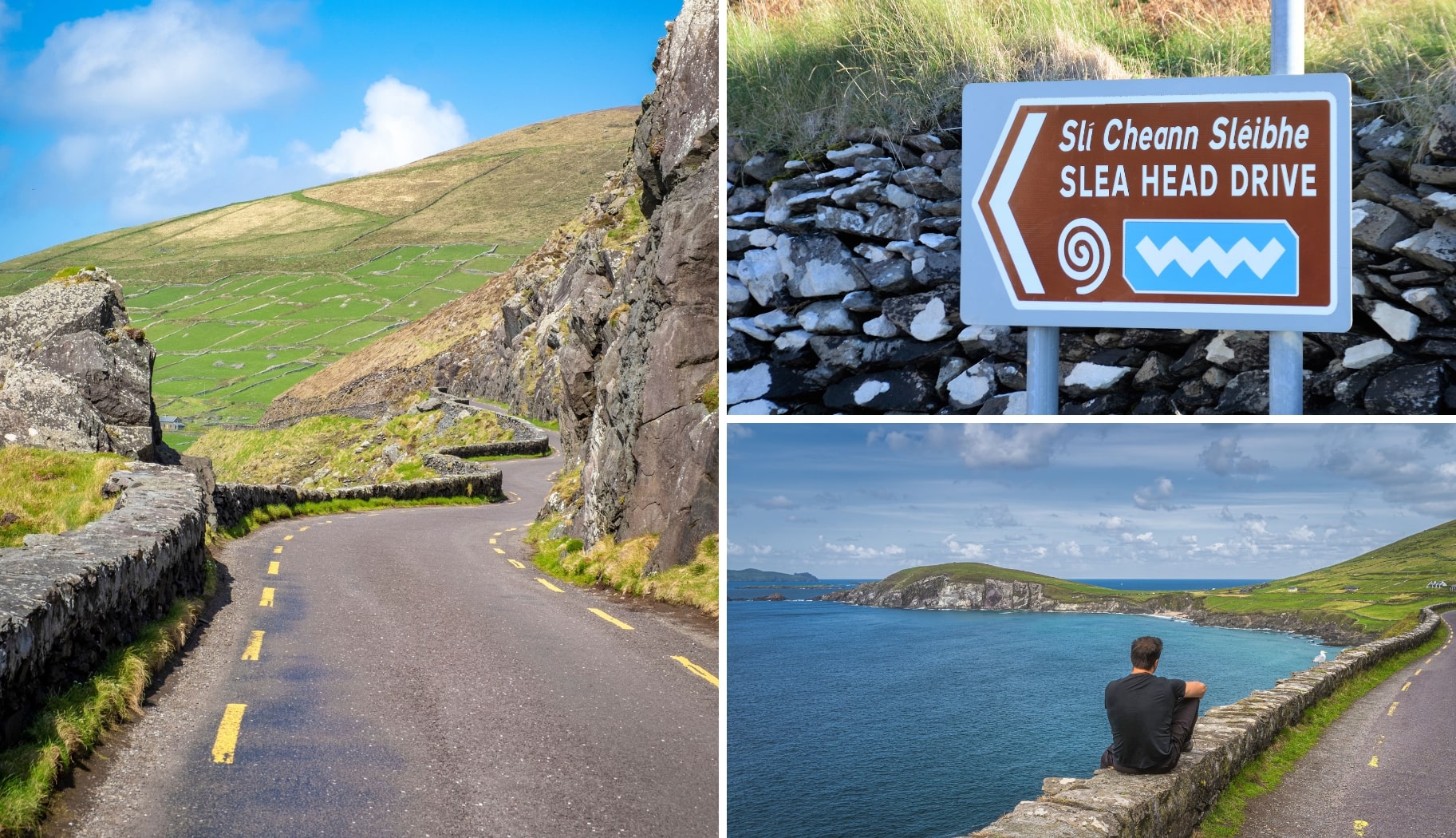
Another massive consideration for when you’re trying to figure out the best way to travel around Ireland is how much money you have to spend.
Car rental can be expensive if you’re travelling solo. However, it works out nice and reasonable if you’re travelling with a group. Big group tours can be pretty good price-wise, whereas smaller tours can be expensive.
If you’re looking at ways to save money when you visit, hop into our guide to Ireland on a budget . It’s packed with easy ways to save money.
3. What you want to see
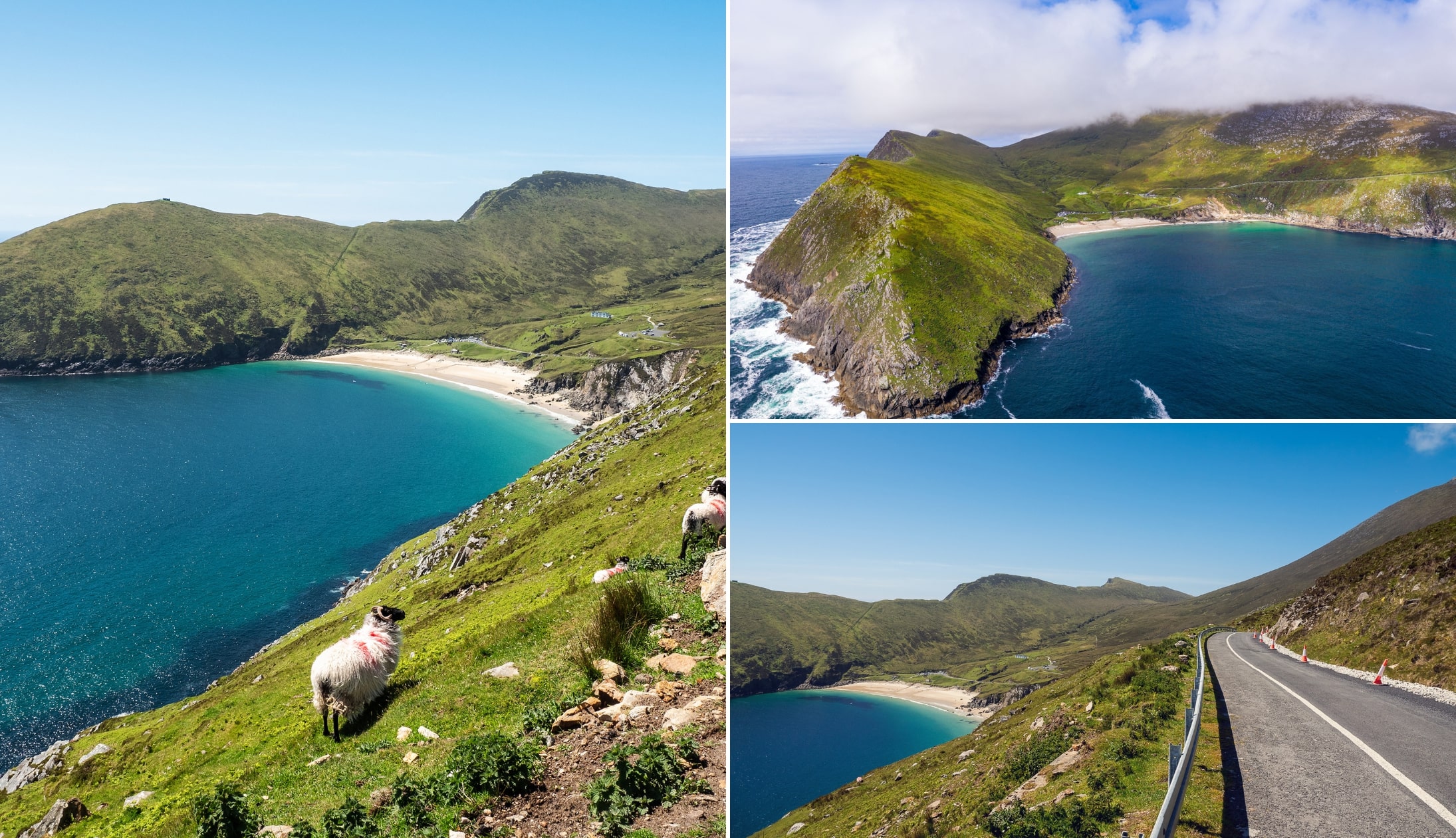
Another good way to help you pick the best way to get around Ireland is to write down all of the various places that you want to visit.
If, for example, you’re only visiting big towns or cities in Ireland , public transport will be fine (see our guide to getting around Ireland without a car ).
If you fancy visiting places off the beaten track, a rental car or a private driver (expensive) are your best bests.
At the end of the guide, I’m going to pop down a few different scenarios and recommend what I think are the best modes of transport for each example.
The pros and cons to getting around Ireland by car, tour and public transport
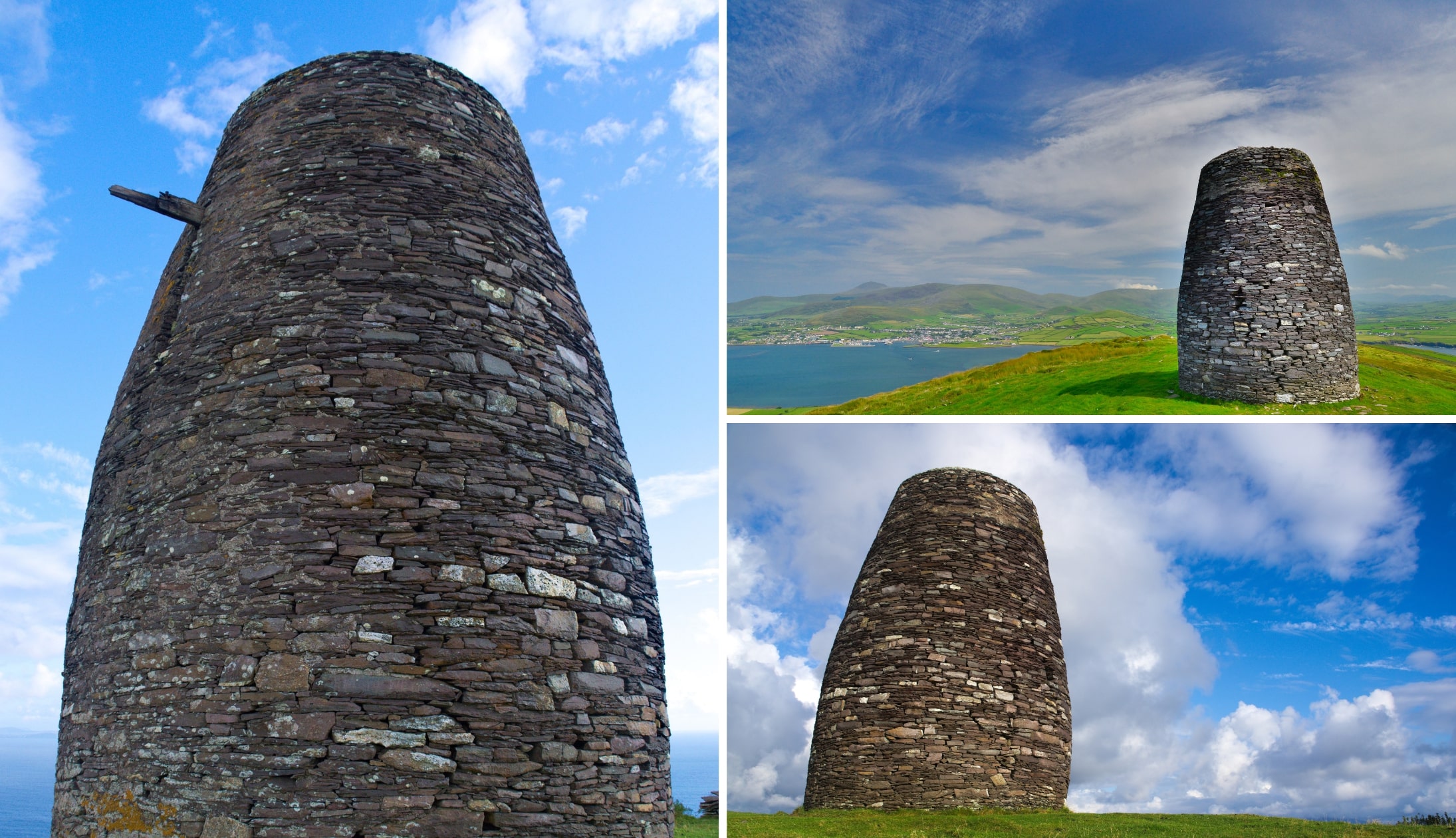
When deciding how to get around in Ireland, it’s worth weighing up the pros and cons to each mode of transport.
Below, you’ll find the advantages and disadvantages of getting around Ireland by bus, train, car and tour.
1. Travelling around Ireland by car
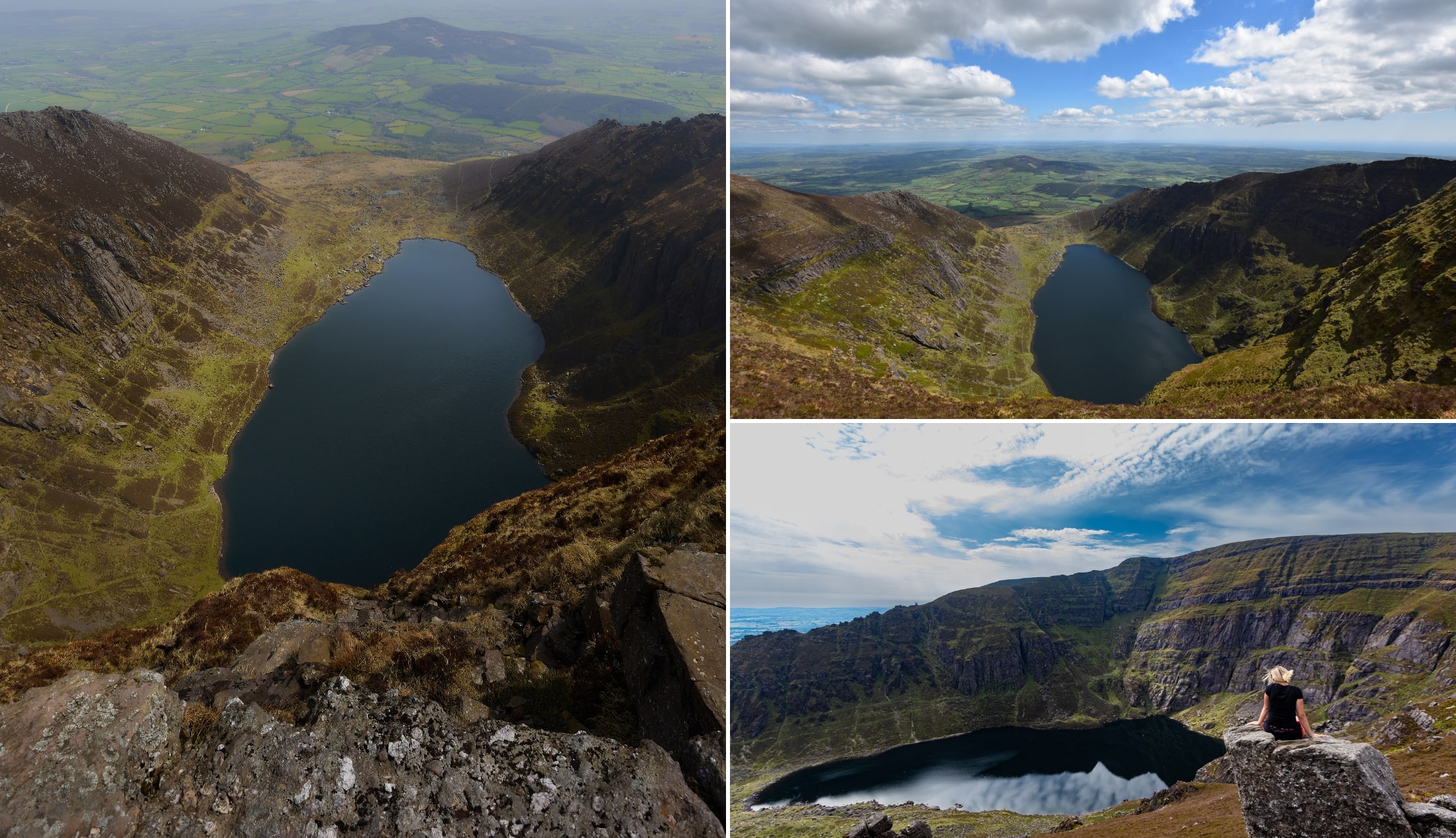
Arguably the best way to travel in Ireland is by car (it’s why our self drive Ireland tours are so popular!).
A car gives you the freedom to go where you want when you want, without having to rely on public transport or tour providers.
Getting around Ireland by car has far more advantages than disadvantages. The main advantage is freedom; being able to go where you want whenever it tickles you fancy makes this a very attractive mode of transport for many.
- Freedom and flexibility
- It makes planning a trip to Ireland more straightforward
- And you can change it as you go if you like
- It can work out cheap if there’s a group of you to share costs
Disadvantages
The biggest disadvantages of using a car for getting around Ireland is that it’ll be expensive for solo travellers and it’s likely to make the trip unnecessarily stressful for some drivers.
- If you’re on your own, it can be expensive
- If you’re a nervous driving, it can make the trip stressful
2. Getting around in Ireland using buses, trains and trams
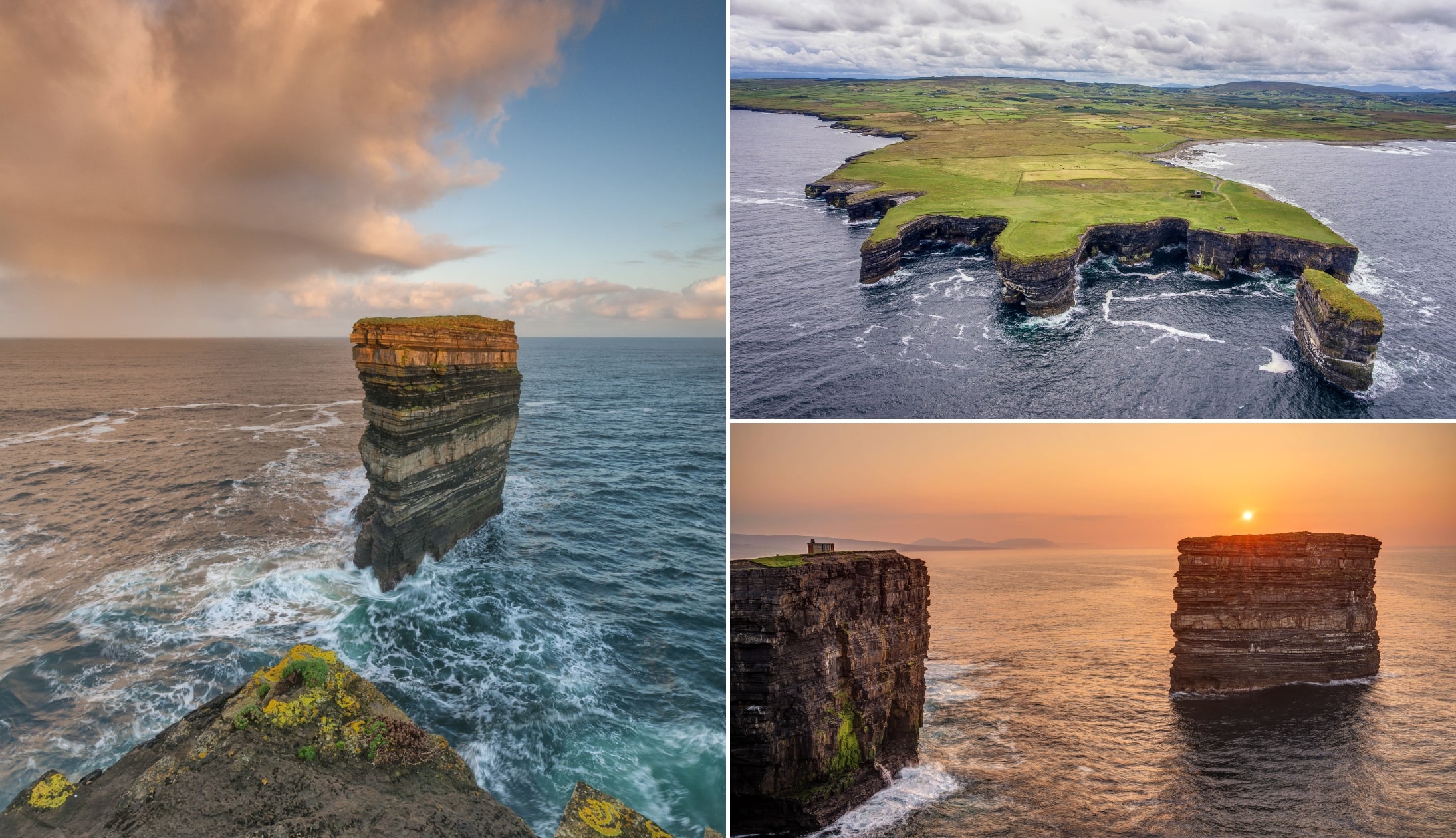
Public transport in Ireland can be very hit and miss. It’s generally good in the main towns and cities, but services get poorer the more off-the-beaten-path you go.
Now, we’ve published hundreds of Irish road trip guides using only public transport for those of you that want to avoid the planning pains. Here are the pros and cons:
- It can be the cheapest option if you’re travelling solo and plan on getting around Ireland on a budget
- Trains and buses run frequently in the busier towns and cities in Ireland
- It can work out well if you combine it with private tours
- Public transport can be unreliable
- Trains, in particular, can be expensive if they’re not booked in advance
3. Getting around Ireland with a tour company
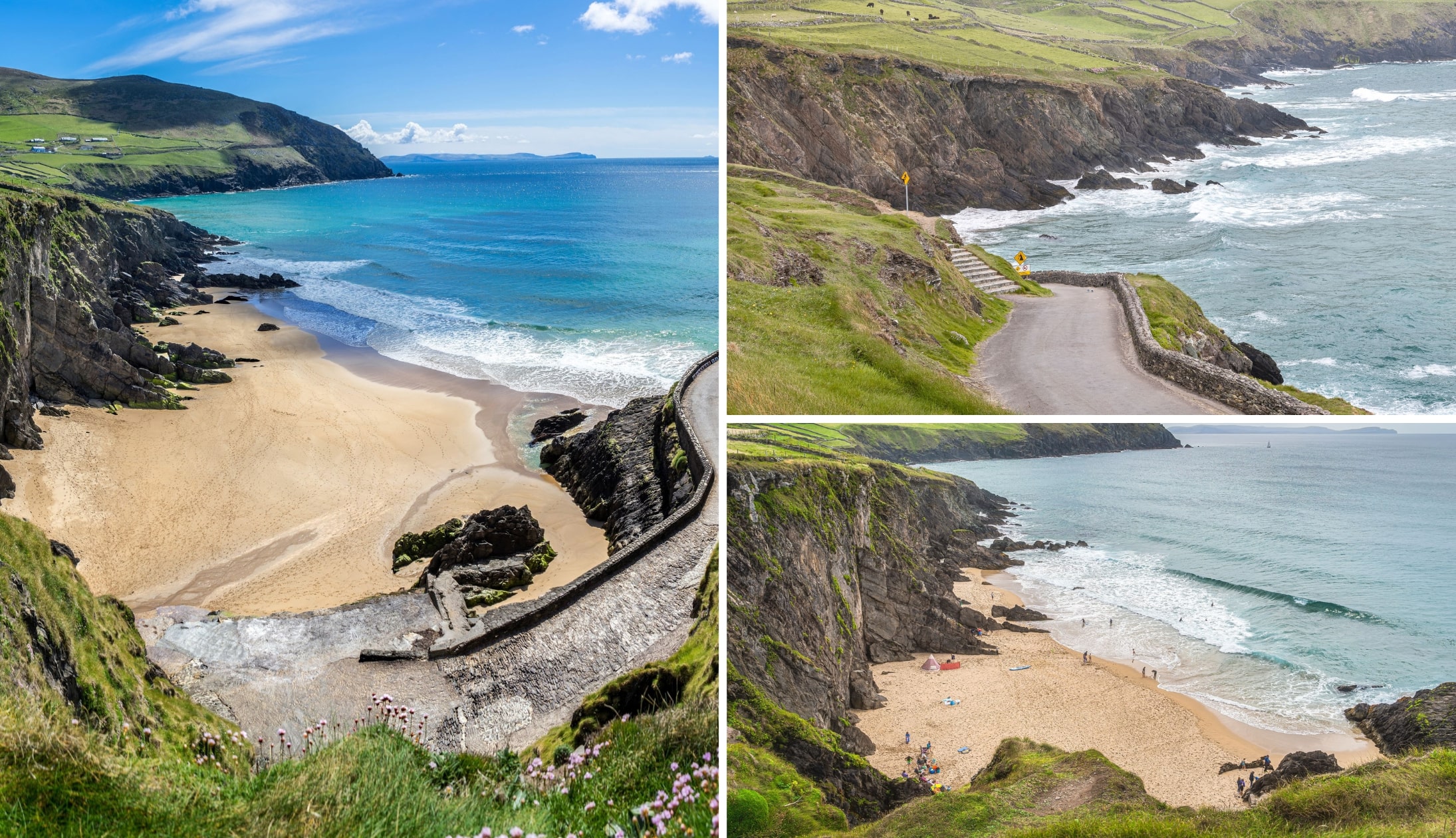
Another popular way for getting around Ireland is by using a tour provider that organises all-in tours of Ireland. These tend to be pretty popular and they vary in terms of group size and trip length.
One quick word of warning: if you’re booking a tour of Ireland in advance, make sure to do plenty of research in advance. Be crystal clear on what’s included and what’s left to pay for.
- They’ll do all of the hard work
- There’s no need to think about car rental, itineraries or any of that craic
- It’s less stressful
- You’ll be travelling around Ireland with a group of people that you’ll (hopefully) have a laugh with
- Most organised tours have experienced guides
- Tours, especially the larger ones, tend to be very inflexible
- They can be expensive (the smaller tours tend to be far pricier than the larger ones)
- You can get stuck with a load of people that irritate you (hopefully this won’t be the case)
4. Using a private driver
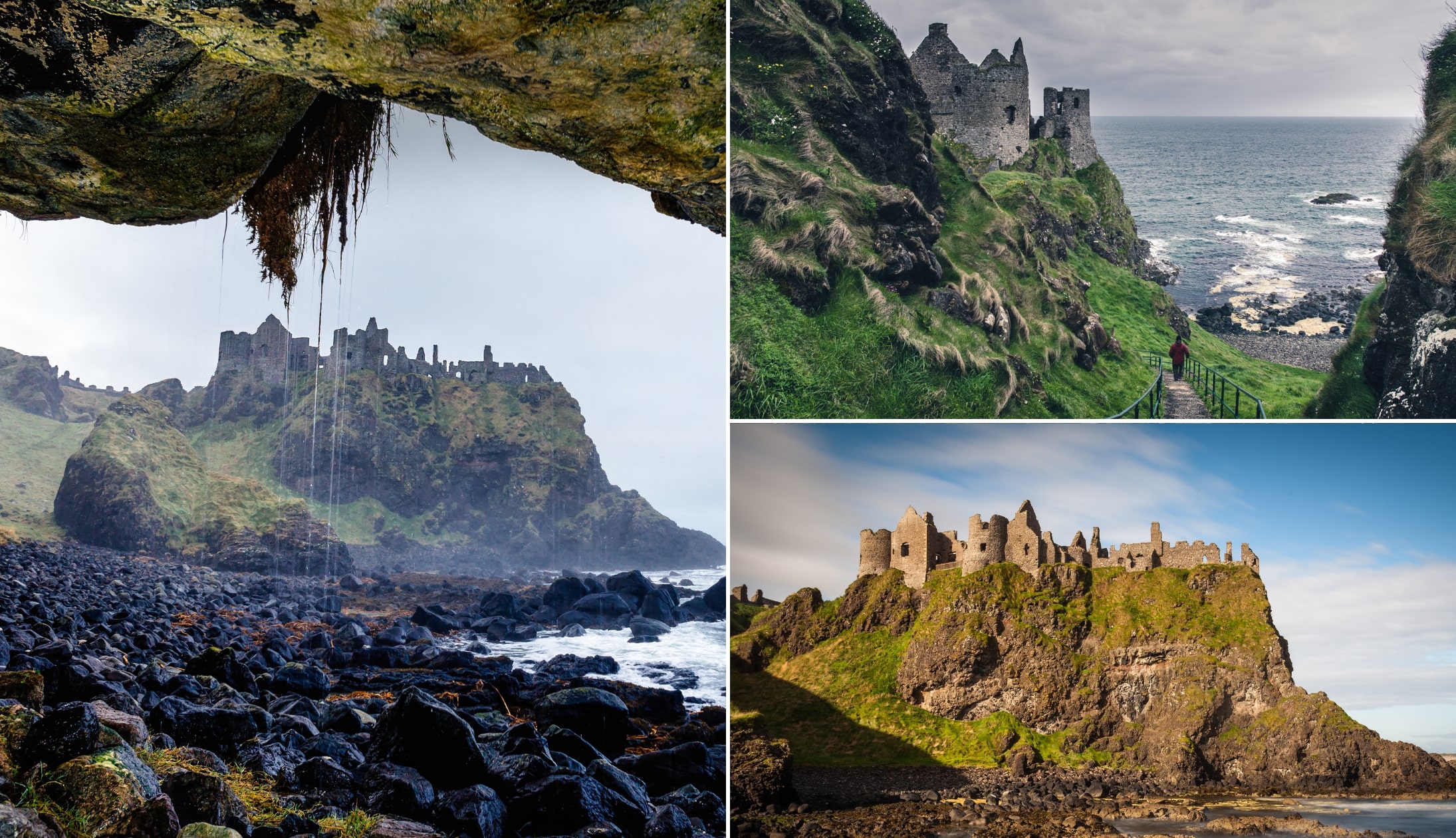
If you’re wondering how to travel around Ireland and you have a fat budget, a private driver is arguably the best way to get around Ireland.
If you fancy going down this route, do PLENTY of research – you’re going to be stuck in a very small space with this person for long periods of time – you need to find someone that’s going to enhance your experience and not hinder it.
- If you pick the right guide, you’ll tap into a wealth of knowledge
- The driver will generally follow your desired route
- A private driver is also a handy option for those of you that want to do part of a trip with a guide and part on your own
- The most expensive way of travelling around Ireland
- You need to do thorough research to ensure that you get the best bang for your buck
- If you end up getting a guide that you don’t gel with, you’ll be stuck in a very small space with them each day, which isn’t ideal
5. Combine modes of transport
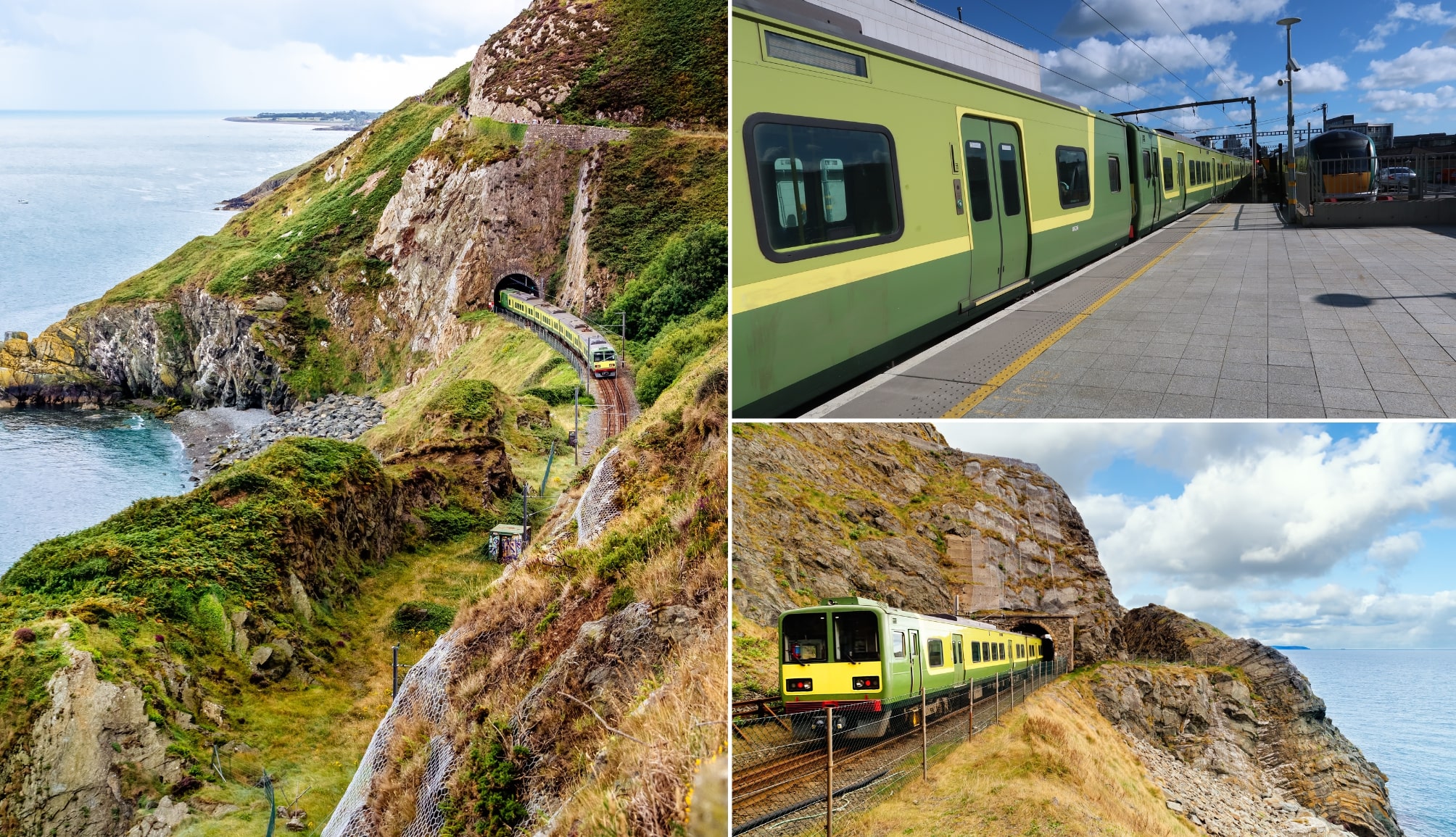
The best way to get around Ireland, in my opinion, is to combine modes of transport.
This is especially useful for those of you who want to avoid car rental.
1. The public transport and organised tour combination
A combination of public transport and organised tours is going to be a solid option for those of you that can’t (or that don’t want to) rent a car.
Example : you fly into Dublin and you’re there for three nights. You can get around easily on foot and by using buses, the LUAS (a tram) and the DART (train).
You explore the city for two days and take one of the many day trips from Dublin (e.g. Meath).
You take a train to Galway and spend several days there. You can spend day one exploring the city. Day two on an organised tour to Connemara and day three on a day tour to Clare.
2. Rental car and public transport combination
Another solid combination is by using a rental car and public transportation. Let’s say you fly into Belfast. You spend the first day exploring the city.
Then you rent a car for a few days and drive the Causeway Coastal Route and then head on to Donegal.
Or, let’s say you fly into Shannon. You rent a car near the airport and then drive to Kerry. You explore the various peninsulas for a few days before dropping off the car and heading to Killarney.
You spend the day in the national park before taking the train to Dublin and exploring the capital. Or you could take the train to Waterford or Tipperary.
My 2 cents on picking the best way to get around Ireland
Deciding how to get around Ireland can be stressful, as it has such a massive impact on your overall trip.
The easiest way to decide the best transport type for you is to consider:
When you’ve taken the above into account, you’ll then want to map out a rough itinerary ( follow the steps here – they’ll remove stress from the process).
Once you have your route, you’ll be able to determine how to get around. Or, if you don’t want the hassle of planning the itinerary, follow one of our detailed road trip guides .
FAQs about how to get around in Ireland
We’ve had a lot of questions over the years asking about everything from ‘How to get around Ireland on public transport?’ to ‘What’s the cheapest option?’.
In the section below, we’ve popped in the most FAQs that we’ve received. If you have a question that we haven’t tackled, ask away in the comments section below.
What is the best way to get around Ireland?
In my experience, based on 33 years of living here, the best way to get around Ireland is by car. However, if you’re only visiting main towns and cities, you could easily use public transport.
Is it easy to get around in Ireland?
Yes and no. For example, without a car, getting around Donegal can be a nightmare. With a car, you’ll have no hassle. Main towns and cities are well served by buses, also.
What is the cheapest way to travel around Ireland?
If you’re looking to keep costs low, getting around Ireland via buses and trains is the cheapest option. You can reduce costs further by booking tickets in advance.
Keith O’Hara has lived in Ireland for 35 years and has spent most of the last 10 creating what is now The Irish Road Trip guide. Over the years, the website has published thousands of meticulously researched Ireland travel guides, welcoming 30 million+ visitors along the way. In 2022, the Irish Road Trip team published the world’s largest collection of Irish Road Trip itineraries . Keith lives in Dublin with his dog Toby and finds writing in the 3rd person minus craic altogether.
This site uses Akismet to reduce spam. Learn how your comment data is processed .
Kevin, Shelley, Aidan and Josh
Monday 6th of March 2023
My wife and I are coming to Ireland for 2 weeks at the end of July with our two teenage boys. Our first four day are in Dublin using public transportation. Then we would like to tour, at a pace that is our own, without having to be on a schedule with booked B and B's or hotels. What we are pondering is renting a camper van for our time outside Dublin. Is using a camper van a viable option, if so would you recommend a maximum size of camper van in width or legnth?
Keith O'Hara
Hey! Yep, plenty of people travel about by camper and, if you're used to driving one, then it's worth considering. It's just worth keeping in mind that there are restrictions about where you can park it up.
Mary Hankins
Tuesday 22nd of March 2022
Planning a trip in the Spring of 2023. So far plans include landing in Shannon, 2 days sightseeing Galway area, then on to Kenmare and seeing Ring of Kerry and the Beara Peninsula. Beara is primary objective as mother was born and raised there. However can't clarify if there's bus service to Kenmare or service from Kenmore to Castletownbere. Is there? Will have approx 2 weeks to sightsee and visit, cant decide if a car will be doable for second week. Your thoughts please.
Hey Mary! From what I can tell, you'd need to take a bus (the 286) from Castletownbere to Glengarriff and then take another from Glengarriff (the R51a) to Kenmare. When you say that you can't decide if a car will be doable, what do you mean?
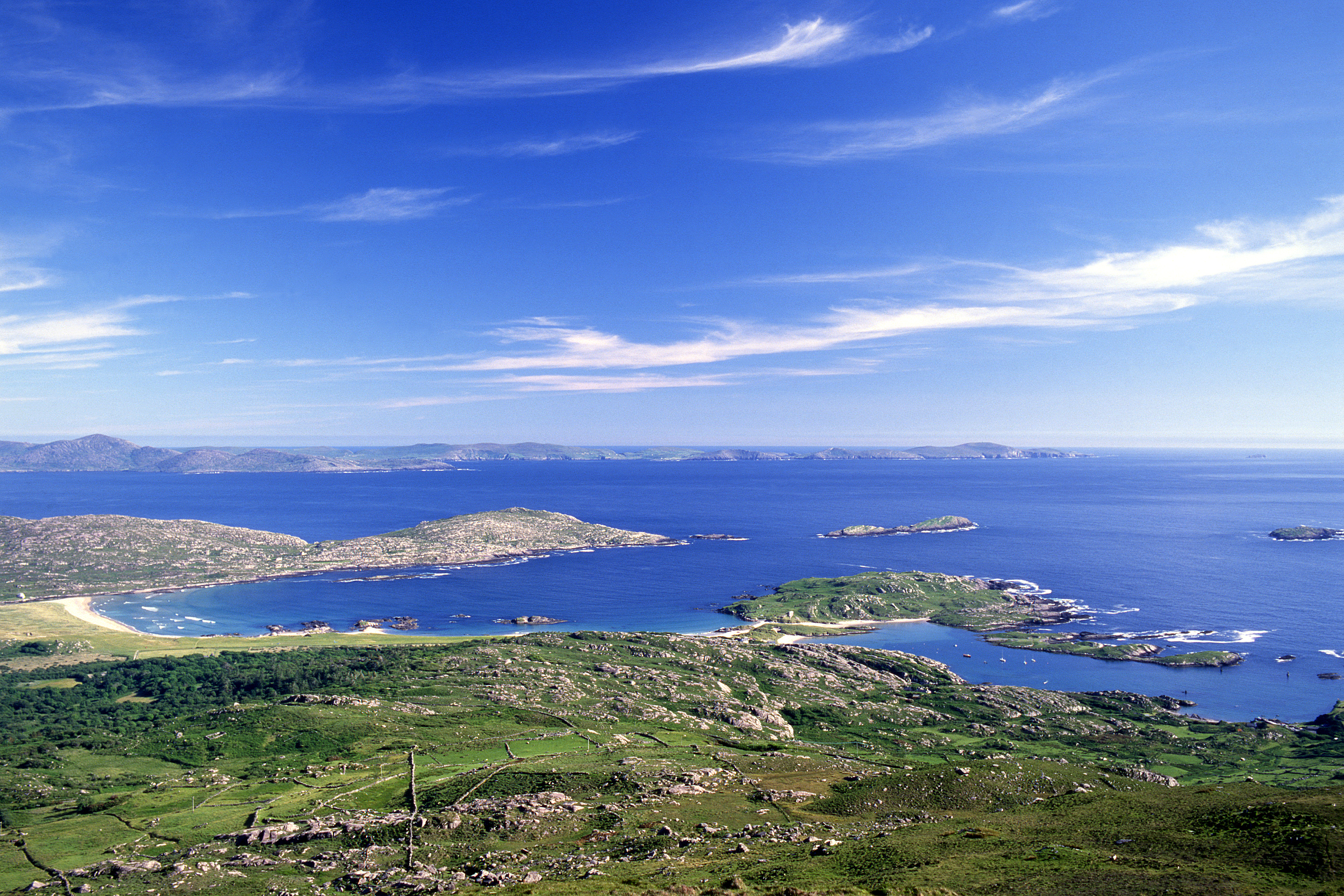
Experience Ireland like a Local
Our favourite things to see and do in Ireland!

- Category Christmas Family Activities Festivals Golf Halloween Honeymoon Ireland Tours Irish Culture Irish History Irish Landmarks Irish Scenery Knitting News Romance Self Drive Tours Ireland Specialized Tours St Partick's Day Destival St Patrick's Day Festival Uncategorized

10 Things You Didn’t Know About Saint Patrick
17th March is the day the world becomes Irish! Whether you call the special day...
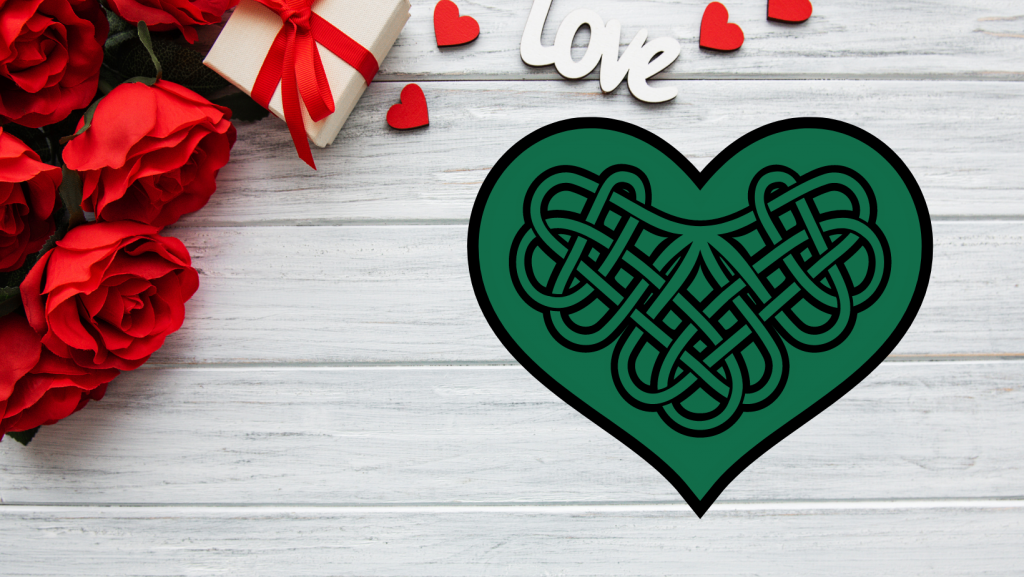
10 things you didn’t know about Ireland, love and Saint Valentine
Ireland is the home of love, romance and tradition. It may come as a surprise...
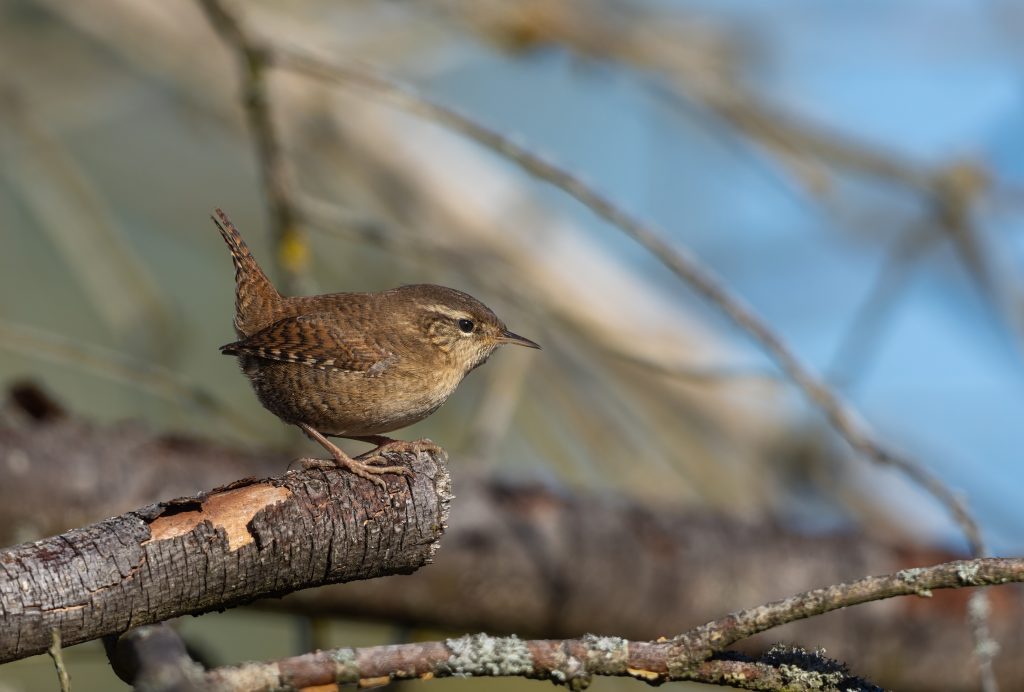
Ireland, St. Stephen’s Day and the Wren Boys
While many countries view 26 December as ‘Boxing Day,’ in Ireland it is St. Stephen’s...

The Irish Roots of Halloween
Did you know Halloween and all the associated traditions started in Ireland? If you look...
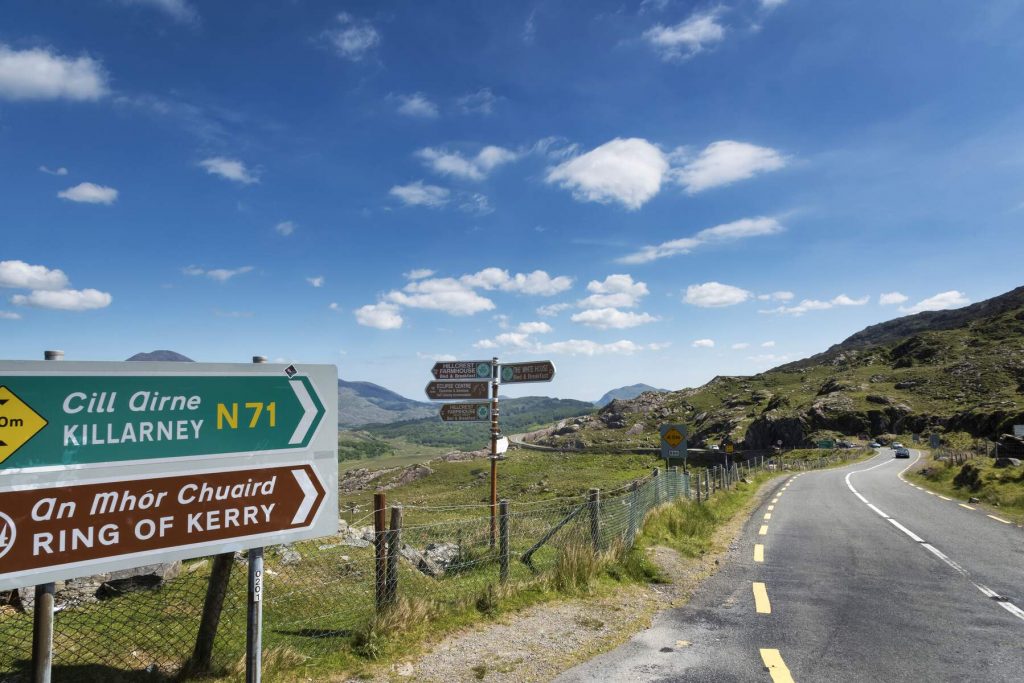
Ireland Ranks Number 1 Covid Resilience Report by Bloomberg
Great news for potential travel as Ireland ranks number one on Bloomberg’s Covid Resilience Report...
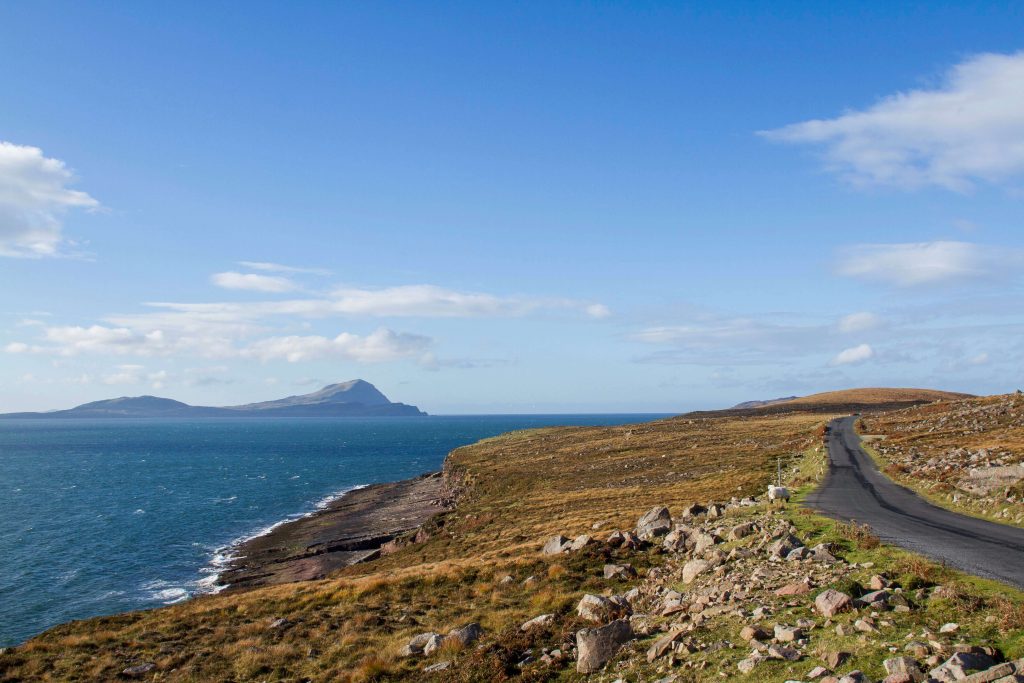
Wild Atlantic Way Ireland
The Ultimate Guide to the Wild Atlantic Way, Ireland The ULTIMATE ‘once in a lifetime’...
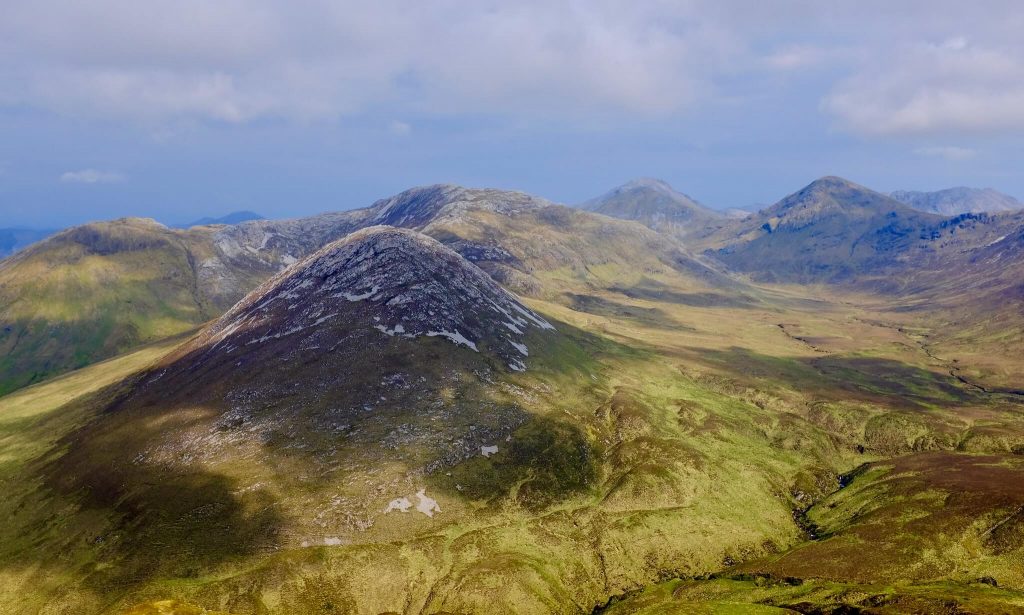
Ireland Off The Beaten Path
When one ponders about ‘the things to see and do in Ireland’, the first places...
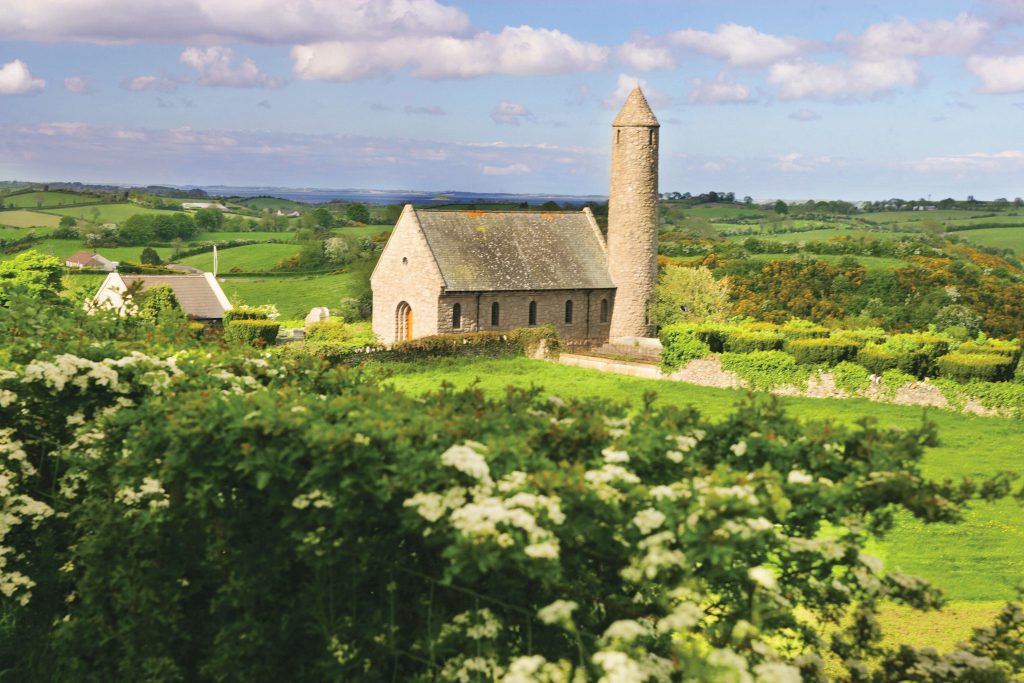
St Patrick’s Day in Ireland – Traditions
St. Patrick’s day in Ireland is a time of great traditions and customs, some going...

Ireland Family Vacations: Our Top Tips & Places to Visit
A review of the places that we think are the best for an amazing family...
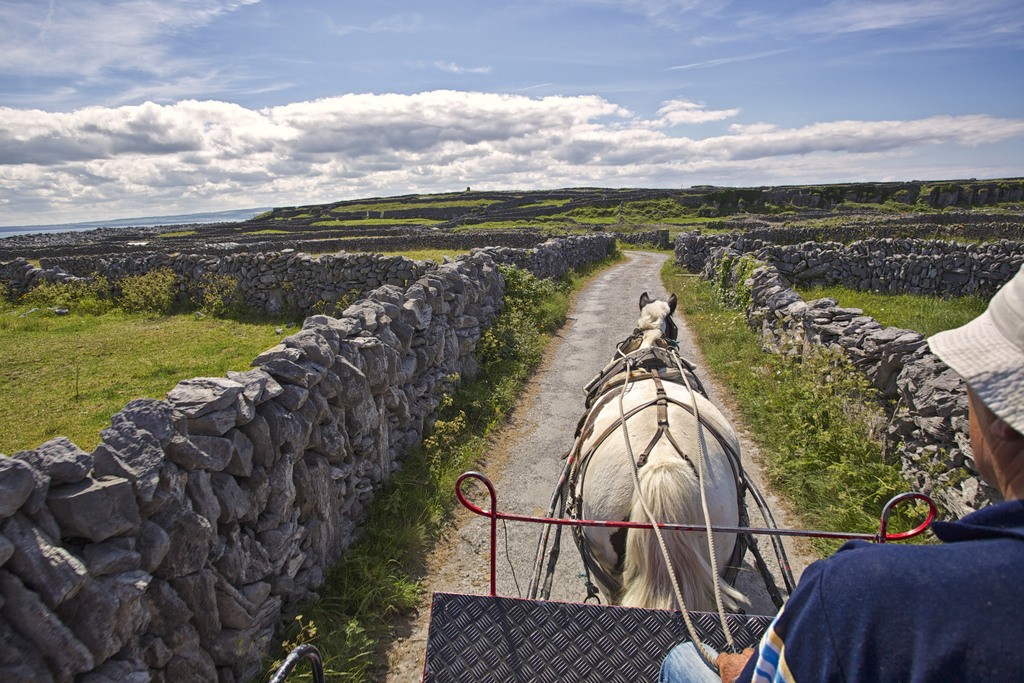
The Aran Islands – For A Unique look at Ireland’s Culture and Heritage
What are The Aran Islands and why are they interesting? The Aran Islands; Inishmore (Irish...
Subscribe to our newsletter
- Terms & Conditions
- Travel Agents

Site built by Granite Digital & Crafted by Artisan
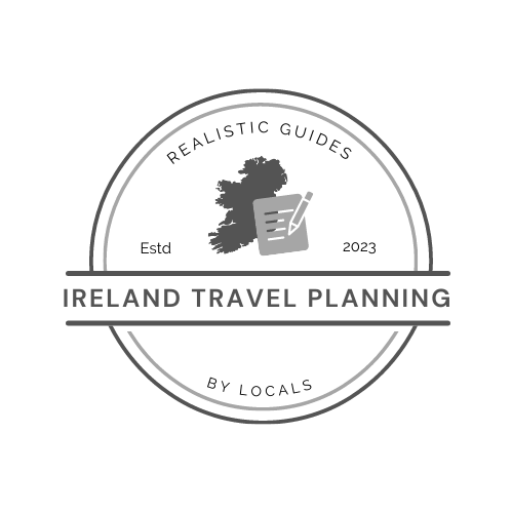
41+ Ireland Travel Tips: Things you SHOULD NOT do on your first trip to Ireland!
Tips for traveling to ireland for the first time – according to a local.
The more I venture around the world, the more questions I am asked about Ireland. Ironic isn’t it? But…If I am being honest, I don’t mind it all too much. In fact, I really love talking about my home country. We as a nation hold our heads up high, we take pride in welcoming our visitors with open arms and are more than happy to show them around. We are determined for international travellers to experience true Ireland, with all its craic and mighty. And…today is no different, I want to create the ultimate Irish guide, answer all your questions and provide you with an insider guide to the top Ireland Travel Tips!
I have divided this post into easy-to-navigate sections, so you can skip down to the areas that most relate to you.
- The People, The Culture & The Craic
- Social Customs & Expectations
- Money, Cards & ATM’s
- Transportation & Getting Around
- Driving in Ireland
- Food Glorious Food
- Weather, Packing & The Best Time to Visit
- The North & South of Ireland – Crossing the Border
General Tips for Visiting Ireland
Ireland travel tips: the people, the culture & the craic.
So, I want to kick start this guide with the main thing that makes Ireland so great, the people. There is no denying it, our mammies raised us far too well, the Irish are truly one of the politest nations you will ever meet. As mentioned above, we take pride in our helpfulness and would go out of our way to assist others. Below I will highlight some things you need to know before visiting Ireland, in relation to the people.
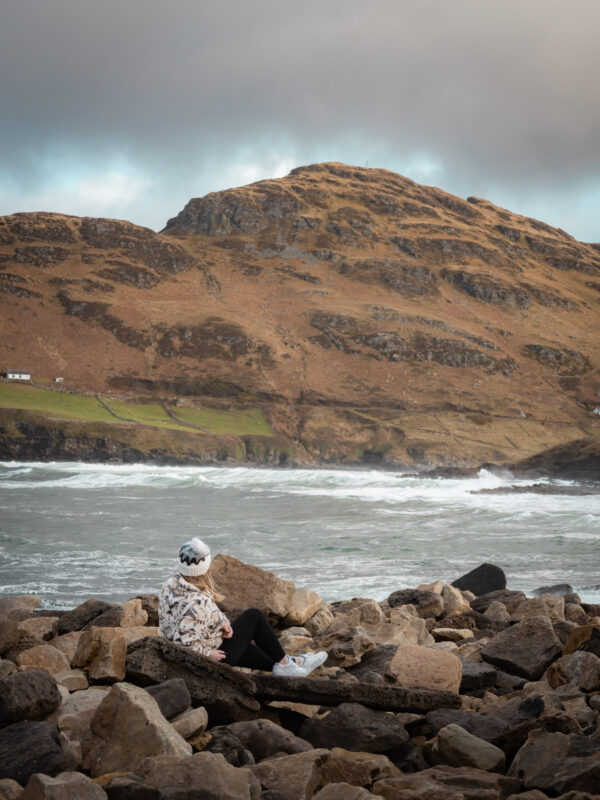
1. The Irish Language
When abroad, people often look at me with a puzzled expression when I mention the Irish language – but you speak English?
True, the vast majority of people in Ireland speak English , however, English is not our native tongue. Centuries ago, the main language spoken in Ireland was Gaeilge . Unfortunately, the Gaelic language was forced out during the British invasion. Which untimely led to most Irish people speaking English day to day. However, the Irish language is still taught in schools across the country, displayed on road signs and used in our everyday slang. There are also areas in Ireland that only speak Irish , these areas are known as the Gaeltacht.
One of the worse things to ask when an Irish person mentions that Irish language is: ‘Wait, is that just English with an accent?’ 🤦♀️ I’m sad to say that I have lost count at how many times I have been asked this!
2. Familiarise Yourself with Some Irish Slang:
Another thing that we Irish pride ourselves in is our ability to have fun or a ‘good bit of craic’ as we like to say. We don’t tend to take ourselves all too seriously and enjoy nothing more than a ‘bit of banter’. Nonetheless, we do have the tendency to speak mostly with slang words and that doesn’t change when tourists are about. It may be a good idea to familiarise yourself with some of the most common Irish slang before visiting Ireland. I’ll list some of the most common ones below:
Craic: The term ‘craic’ is an Irish word that directly translates to ‘fun’. Therefore, if an Irish person was to say ‘Ah sure, it was only a bit of craic’, what they mean is ‘It was a lot of fun’.
Yer Wan or Yer Man: This is one that I am guilty of using all too often. ‘Yer Wan’ refers to a woman in which you don’t know the name of or don’t want to use the name of and ‘Yer Man’ is in reference to a man.
Example: ‘What is yer wan doing over there?’ – meaning: What is the woman over there doing?
Grand: The term ‘grand’ is possibly the most used word in the Irish vocabulary. We use it ALL THE TIME! If I am being honest, there is no true meaning to the word as it can be used in many different contexts, but I will give you a few conversations example down below.
Person 1: ‘Would you like a cup of tea?’ Person 2: ‘Ah no, I’m grand sure’ – Meaning: No, I don’t want any tea.
Person 1: ‘How was the Movie?’ Person 2: ‘It was grand like’ – Meaning: The movie was ok, good but not great
Person 1: ‘How are you today?’ Person 2: ‘Ah yeah, I’m grand’ – Meaning: I’m feeling normal today, nothing unusual happening. It feels more than ok but less than great.
Person 1: What if it rains? The washing is on the line. Person 2: ‘Sure look, it will be grand’ – Meaning: The clothes will get wet, but there is nothing we can do about it, so let’s continue on with our day.
Basically, we just throw the word ‘grand’ into a sentence anytime we feel like it. You will notice it from the moment you arrive in Ireland. Odds are the passport control officer will hand you back your passport saying ‘You’re grand, off you go’. Which roughly means you have all the documents to enter the country, have fun. I know, all sounds a little crazy. But…it is one of the great things that makes us Irish.
Here is some slang that is easier to explain:
It’s Baltic Outside: It’s FRREEEEEZZZINNGGG outside(weather) It’s Roastin’ Outside: It is HOT outside(weather) Yoke: In relation to an object This yoke is ‘Banjaxed ‘: This thing is broken Yer Man is ‘doin’ my head in’: That man is driving me crazy The Place was ‘Jammers’: Referring to when a place or venue is full of people. You’re Takin the piss: Are you messing with me? You’re Havin’ a Laugh: Quite similar meaning to takin’ the piss. Means to mess, tease or joke around. My Mammy: My Mother, My Mum, My Mom The list goes on! I would be here all day listing slang Irish words. However, it is important to mention. If you do not understand what an Irish person is saying. Do not be afraid to ask them to repeat themselves or explain. We are used to it and happy to do so.
3. The Irish use of Sarcasm
Sarcasm is most definitely used regularly by Irish people. As I mentioned above, we don’t like to take ourselves or life all too seriously. We are also masterminds when it comes to stretching the truth.
It is important not to get offended on your first visit to Ireland if an Irish person reply’s to you with a sarcastic comment or remark. Odds are that it just means that they like you and are comfortable in your company. In fact, most Irish people will answer a question in a sarcastic tone or manner without even realising it. It’s just our way of life.
For example, if you ask an Irish person to do something or help you with something and they reply with ‘I will, yeah’. That is a sarcastic way of saying no, in reality, they have no intention of moving from their current position. Now, don’t get me wrong, nine times out of ten an Irish person is more than happy to help. But…just don’t be surprised if you get a sarcastic response instead.
4. Our Ability to Stretch the Truth
Another thing to note on your first trip to Ireland is the Irish uncanny ability to stretch the truth. Here’s an example, while giving directions if an Irish person says ‘yeah, sure it is only down the road’ that could mean that the destination is anywhere from a 5-minute walk to a 45-minute walk. Either way, to an Irish person that is only down the road. Or, if an Irish person says ‘sure, we will just go for one’ when deciding if they are going to go to the pub ‘one’ never really means ‘one’. It can either translate to ‘two or three’ or you’ll be dancing the night away until the early hours of the morning. There is really no in-between. So, the moral of the story is to never take an Irish literally.
5. Understanding Irish Accents and the Counties of Ireland
Ok, another thing worth noting before setting off on your Irish adventure is our accents. For such a small nation we sure as hell have many different accents and dialects . For starters, each county in Ireland (and there are 32), has their own ‘slang words’ and ‘sounds’. At times, it even gets confusing for Irish people from different parts of the country to understand each other. I guess, what I am trying to say, is if you don’t understand what someone is saying, don’t be afraid to ask them to repeat themselves . Trust me, we are well used to it. Sometimes we just need a gentle reminder to talk a little slower.
To expand on that note, there is a little bit of friendly rivalry that goes on between each county in Ireland. This is mostly due to our competitiveness when playing our national sports. Nonetheless, it is common to hear say a person from county Dublin and a person from county Kerry share a bit of banter over who has the better county. Clearly, the Dubs are the winners in this scenario 😉
Ireland Travel Tips Video Guide
Tips for Visiting Ireland for the First Time: Social Customs and Expectations
Ok, so there are some things Irish people expect to see, and some things we expect people to do. And…I would like to dedicate this section to talking about them.
6. Use your Manners
Once you arrive in Ireland it is super important to remember your manners. This is something that is very important to the Irish people. We never go anywhere without remembering our please and thank yous. And…if we come across someone who doesn’t behave politely or mannerly we are less likely to go out of our way to help them. A simple thanks goes a long way.
7. Hold the Door Open for Those Behind You
In most public areas Ireland still has swingy-style doors. It is expected of the person who first goes through the door to look behind them to see if anyone is following them. If so, they should either hold the door open for them or let it go gently into their hands. Letting a door slam behind you doesn’t swing in Ireland. – sorry, excuse the pun I just had to.
8. Hanging Up the Phone
If you do happen to ring someone on the phone while visiting Ireland. Even if it is a restaurant to make a reservation, a tour company to book a tour or just for general chit-chat. It is important to always say goodbye. This is something I didn’t know was an ‘Irish Thing’ until I lived abroad for a few months. Irish have the tendency to say goodbye more than once when on the phone. It is common for our conversations to end something like this ‘bye, bye,b,b,b, bye’. I promise I’m not even joking. You, of course, don’t have to say bye 7 million times like an Irish person, just be sure to officially end the conversation before hanging up.
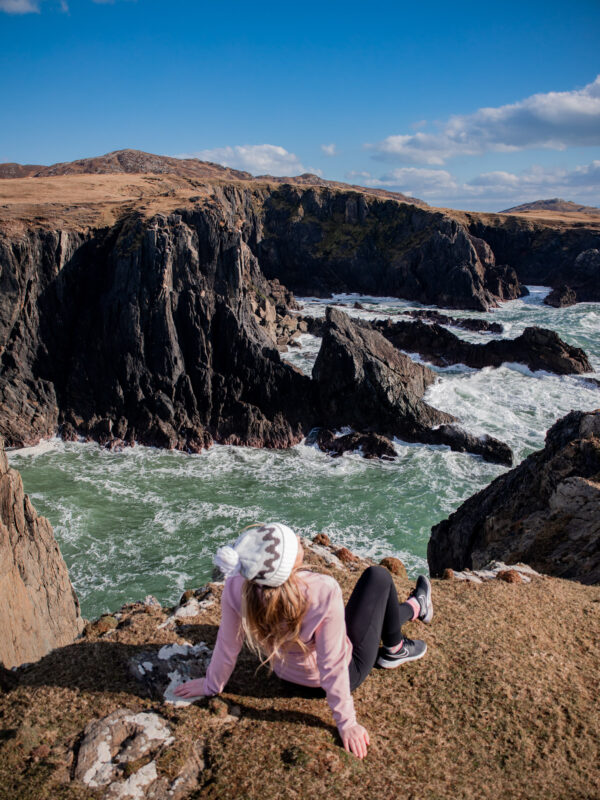
9. Hiking and Walking on the Stree t
When hiking in the mountains it is common to give a person passing you by a friendly, wave, nod or smile and a quick hello. This can also happen when walking in the street. It is not so common in the cities but certainly in more rural and suburban areas. In Ireland, if you make eye contact with a stranger it is polite to engage with them in some way, even with a gentle smile.
10. Tipping Culture:
I get this question quite often, is it required to tip in Ireland ? To answer the question quickly, no. It is not a requirement to tip in Ireland. In other words, you don’t have to but it is certainly appreciated. Now, the Irish wouldn’t go tipping 20% of the bill but it is common to round the bill up to the nearest 5 or 10 or leave 10%. I personally always tip, particularly, in restaurants, when getting a taxi or say getting my hair done. It is just a nice way of saying thank you for the service.
11. If an Irish person says no they don’t always mean no
HUH?! I know, does that sound confusing? Well, that’s because it is. We Irish are raised to be so polite that the first time we are asked do we want something, we almost always automatically say no. It is polite to decline on the first offer. This…however…does not mean we don’t want the thing that is on offer…it just means that we don’t want to come across as greedy or expecting. So, the moral of this story is to always ask an Irish person do they want something more than once.
Person 1: ‘Will I buy you a drink?’ Irish Person: ‘Nah, I’m grand thanks’ Person 1: ‘Are you sure?’ Irish person: ‘Nah, honestly I’m good’ Person 1: Are you sure last offer Irish Person: ‘Oh, yeah, go on, I’ll have one’
The above example is how the conversation normally goes. I know, what can I say, we are one confusing bunch. This is something I struggle with big time when abroad because I have to say yes straight away if I want something 🤣
12. How to Greet Someone in Ireland
Ok, so we Irish stray a little bit away from the typical European greetings, like kissing on the cheek or a hug. If we don’t know someone, we are far more likely to either shake their hand or give them a gentle wave before introducing ourselves. We save hugging for our close friends and family.
13. Swearing and Curse Words
The use of swear and curse words in Ireland is definitely more tolerated in day-to-day life than in other cultures. It’s just not really something we frown upon. We also have some curse substitutes that are a lot lighter on the tongue like ‘feck’ and ‘shite’. Now, don’t get me wrong, it is impolite to curse in front of your parents or someone older than you.
Planning a Trip to Ireland: Money, Cards & Paying for Things
In this section of our Ireland Travel Guide, I want to talk to you about paying for things while visiting Ireland. We will address, currency, cash, card payments & ATM’s.
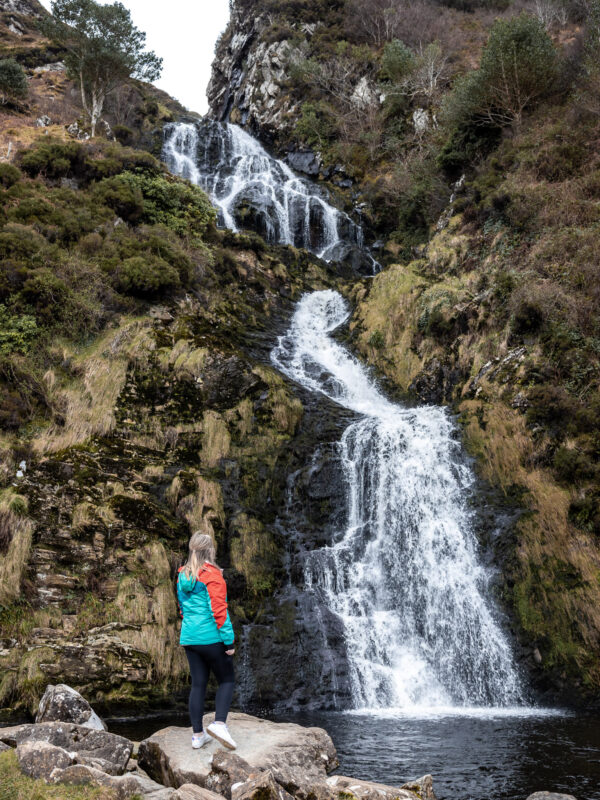
14. What currency is used in Ireland ?
In the Republic of Ireland, we use the Euro and in the North of Ireland, the British Pound is used . It is quite common for shops positioned near or on the border to accept both currencies but gives change back in the respective currency. For those of you using a card, I would suggest requesting to pay in the currency of the area you are in, that way you will avail of the best exchange rate.
15. Should I bring cash with me to Ireland?
Cash is not 100% needed, as there are card machines readily available on the Island. However, if you plan on using toll bridges, tipping or visiting market-style shops then it is also a good idea to have a small bit of cash just in case.
16. How do card payments work in Ireland?
Card payments in Ireland actually work quite differently from the likes of the United States. The person taking the payment is not supposed to handle your card at all, it’s down to consumer rights. Therefore, swipe payments rarely happen, unless there is an issue with the payment, in that case, the card owner needs to sign the receipt once the purchase is made. Ireland uses the chip and pin service , meaning, the person making the purchase will pop their card into the card machine and then enter their pin. Contactless payments are also extremely common , these can be done using the tap of your card or mobile device. It is important to note that American Express is not widely accepted in Ireland , I’d advise bringing an alternative payment method.
17. Is it easy to Withdraw Cash in Ireland?
Yes, you can commonly find ATM machines in local newsagents, shopping centres and banks . It is easy to withdraw cash from them, just be mindful, that a pin is needed. Also, charges may apply. It is also possible in some stores to receive cashback when purchasing items on a card. Just ask the cashier if their store avails of this service. This is usually the case in large grocery stores and some department stores.
18. Do I Need a Currency Card?
This comes down to personal preference. If your bank charges large rates to withdraw or make purchases in a foreign currency then a currency card may be beneficial to you. I personally, would have been lost without my Revolut pay-as-you-go card. It is a great way of staying on top of what you are spending and it is easy to change in and out of currencies.
What to Know Before Visiting Ireland: Transportation & Getting Around Without a Car
This section of the post will deal with the best way of getting around Ireland when you don’t have a car.
19. Transportation in Dublin
Dublin is Ireland’s capital city, meaning a lot of tourists pass through the capital to get to various other locations on the Island. Dublin has many public transportation units for those who are planning on spending a few days in the capital. These include the Luas, bus and DART. Tickets to all public transport services can be purchased using a leap card, so consider purchasing a visitors leap card if you plan on spend more than one day in Dublin.
20. Transportation Throughout the country
The leap card can also be used in various other cities around Ireland, including Cork, Galway, Limerick and Waterford.
Train Travel in Ireland: Ireland’s Train system is very well put together, it will easily get to and from all the main areas. However, if you are looking to experience a little more off-the-beaten-path places or scenic places for that matter, it is best to rent a car or book a tour.
21. Book a day tour
It is quite common for tourists to book tours in order to see some of Ireland’s highlights such as the Cliffs of Moher, the Giants Causeway or Wicklow National Park. This is a great way to see more of Ireland when you are stuck for time and plan on basing yourself in just one place.
Dublin is a great place to base yourself for day trips around the country. I’ll list below some of the most popular tours from Dublin.
- Tour of Wicklow & Kilkenny from Dublin
- Tour of Cliffs of Moher, the Burren & Galway from Dublin
- A Trip up to the Giants Causeway & Carrick a Rede Rope Bridge from Dublin
- Glendalough Half Day Tour from Dublin
- Newgrange, Knowth Hill and Slane Tour from Dublin
Going to Ireland for the First Time: Driving in Ireland
Driving in Ireland can be a scary thought for most tourists. Considering a high majority of the world drives on the opposite side of the world compared to Ireland. If you happen to be from a country that drives on the left-hand side, then driving in Ireland will be no bother to you.
22. Driving on the left-hand side of the road, is it really that scary?
It would be completely inappropriate for me to answer this question, considering I learned to drive on the left. But…if it helps at all, I have driven in countries that drive on the right and didn’t find it all too hard. For the first hour or so, you will need to be very conscious of your positioning but it will become like second nature once you get used to it. Of course, it is always important to drive with care and awareness.

23. Self Drive Road Trips are the BEST!
So, as I mentioned previously if you are hoping to base yourself in Dublin. Then you will more than likely not need a car to get around as there are many day trip options that leave from the city. HOWEVER, by renting a car you have the option to make your own Ireland Itinerary .
You could spend the week checking out some of the c ountry’s most beautiful cliffs . Or, pack your bags to explore the beauty of County Kerry.
Maybe you are hoping to explore some of the country’s hidden gems, like Achill Island in County Mayo, home to Ireland’s highest Sea Cliffs . Or, Inis Mór in County Galway.
No matter what you decide, renting your own car gives you complete freedom to explore the Emerald Isle at your own pace.
24. Does Ireland have automatic cars?
Yes, Ireland does have automatic cars, although manual cars are far more common. If you plan on renting an automatic car, just be mindful that this will come at an extra charge .
25. Does Ireland have many toll boots?
Yes, if you are going on an Irish road trip, it will be near impossible to drive without coming across a toll bridge, or several for that matter. Most will allow you to pay with coins, however, there are the likes of the M50 toll in Dublin that you may not even notice you have passed. The payment is taken by reading the cars reg plate.
If you don’t have an e-toll payment tag you will need to visit the nearest petrol/gas station to pay the toll/ or go online . Most rental companies will offer an e-toll tag for an extra charge, I’d recommend opting into this, that way you don’t need to worry about finding change for the toll bridges or have to go out of your way to make payments. It also lets you sail through the toll bridge without having to queue.
26. Are Irish Road Signs in Irish?
So, I mentioned above that the Irish road signs are in Irish, however, there is no need to worry because they are also in English. Making it easy for most tourists, and Irish people for that matter to get around.
27. How is the Irish speed limit measured?
In the Republic of Ireland, the speed limit is measured using kilometres per hour. In the North of Ireland, the speed limit is measured in miles per hour.
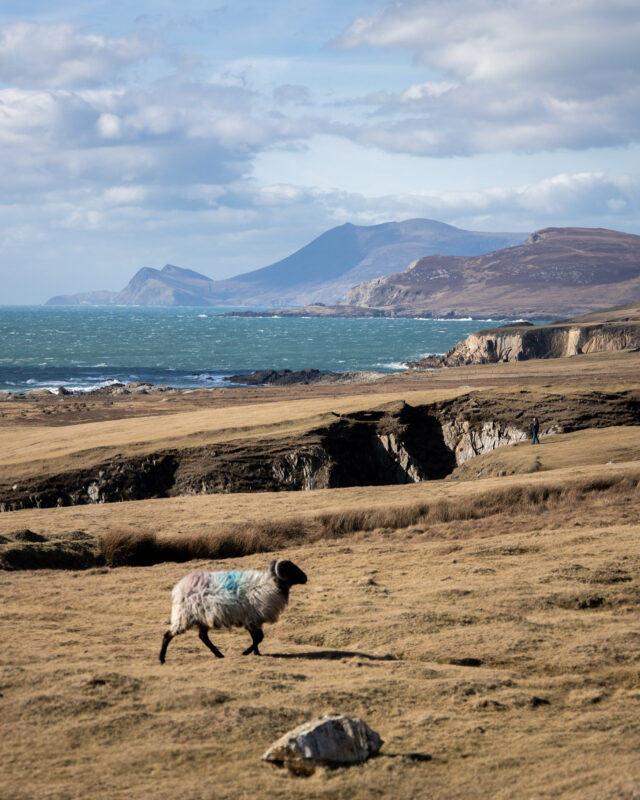
28. Crossing the border into Northern Ireland?
Ok, so many of those who decide to rent a car may be worried about crossing the border from the Republic of Ireland into Northern Ireland. To be honest, this is a super easy process , in fact, you may not even notice that you have crossed the border . The only form of indication may be the speed limit will have changed from kilometres to miles and that the road signs are no longer in Irish.
*It is mindful to note that when renting a car there may be an additional fee for those who intend on driving up to the North. I assure you this fee is totally worth it because there are some amazing things to do there*
28 . Driving on rural roads in Ireland, are they dangerous?
If you do decide to rent a car for your trip to Ireland, Odds are you are going to end up driving on rural or country roads. This can be a little daunting to most of us, including me, due to the high-speed limits on these roads. My best advice is to take your time, it is better to arrive at a destination late than not arrive at all . Some rural roads will have a speed limit of 100 kilometres an hour, yet, I still drive at no more than 60 kilometres on them. If a car comes behind you that is travelling at a faster speed there is usually always room for you to pull in to the left and let them pass. If not, it’s important not to worry about it and carry on driving safely.
29. Are there any rules on Irish motorways/highways that I should be aware of?
Yes, on Irish motorways one should drive in the left lane at all times . The lanes to the right are purely meant for overtaking. In saying that, these rules are not always obeyed by others, but it is important for you to know and follow the rules. Those who don’t are putting themselves and others at risk.
Ireland Travel Tips: Packing, Weather & The Best Time to Visit
Ok, so this is possibly the thing you wanted to know the most when looking up tips for visiting Ireland.
Like seriously, what is up with the Irish weather!? And…why on earth is it so unpredictable?
This is something I honestly ask myself every day, and I guess it is just something I have learnt to live with. Like you hear the word…Island…and you think tropical beaches, palm trees and exotic animals…well let me tell ya, Ireland certainly does not live up to that stereotype.
No, but seriously…with all jokes aside. Ireland truly is one of the most beautiful countries in the world. And that is by taking our not-so-island-like weather into consideration.
30. So, what is Ireland’s weather really like? How do I prepare? What do I pack for my trip to Ireland?
To tell you the truth, there is no one way to truly prepare yourself for the Irish weather. It is common for us the experience 4 seasons in one day. Yes, that is right…one minute it is sunny…the next it’s raining…and hell we may even experience a bit of snow and thunder in between. All I can say is bring some rain gear…you will at some point need it! Also, check out my detailed packing guide for Ireland. I promise I joke a lot less about it. Below are some of the must-haves in your suitcase for a trip to Ireland.
- Waterproof Trousers
- Hiking boots or Waterproof Shoes
- Cap or Beanie (depending on the time of year you visit)
- A Wind Proof Umbrella (not a must but super handy)
- A Travel Adapter
- A Camera (Can even be your phone but just bring something to take pictures)
I know, I know, that list is so diverse…one minute you need a rain jacket…and then the next you need sunglasses? But, I promise that is what Ireland is like and you will regret not bringing them.
31. When is the best time to visit Ireland?
This is a difficult question to answer, you may want to visit at different times of the year for different reasons.
For example, mid March is a great time to visit, due to the weather being good and well, Saint Patrick’s day…but it is expensive.
In June , Ireland hold’s its end of year state exams, known as the leaving cert. It is a common joke among us Irish that June is the month of the leaving cert weather. This basically means we predict, that June will be almost a guaranteed month of sun. Of course, this nearly always ends up being a coincidence. However, if you are looking to visit Ireland when it’s sunny June may just be your best bet!
Now if you can’t make it in June but are still hoping for a bit of sun, then maybe consider September . The temperatures are a little lower but you will still see more sun in September than throughout the rest of the year(hopefully). And…Ready for another coincidence? Ironically, the kids in Ireland go back to school in September. Our weather seems to shape itself around the school holidays…Weird ?
Another great time of year to visit Ireland is the end of October through to the start of November , the leaves have started to fall off the trees and it is the official week of Halloween. A holiday that originally started in Ireland. Besides, who doesn’t want to see the national parks all dressed up in Autumn colours? Just be mindful that October and November are cold months so wrap up warm.
Christmas can also be a great time to visit Ireland . See the city’s dressed up in sparkling lights, visit some charming Christmas markets and well… ring in the New Year Irish Style.
No matter what time of year you decide to visit Ireland. I have no doubt that you will have an amazing time.
32. Ireland Tips: The North & South of Ireland – Crossing the Border
Ok, so a lot of people who visit Ireland find themselves curious about the difference between The Republic of Ireland and Northern Ireland. If I am being honest, I don’t blame them, It is certainly an interesting topic. However, this can be a controversial question to many so maybe it’s best to leave questions like this to the likes of tour guides. They will be more prepared to answer all of your questions and will be half expecting them. Below I will try to explain the difference between both to the best of my ability without being too biased.
Officially, The Republic of Ireland and Northern Ireland are two different countries, that share the same island. However, most people from the Republic of Ireland and a percentage of people from the North of Ireland see the whole island as Ireland and would, therefore, identify as Irish. The other percentage of people living in Northern Ireland see the North as part of Britain and would identify as British. However, no matter if we identify as Irish or British, I think we can all collectively agree that we live on one pretty island with endless possibilities to go exploring.
The Republic of Ireland is an independent country that is part of the EU, whereas Northern Ireland is part of the United Kingdom. Therefore, laws and regulations in both countries are different.
As far as the border goes, there is no physical border, you don’t need to go through passport control nor get your car checked. You are free to travel to and from the Republic of Ireland to Northern Ireland. As far as Visa goes, I am not 100% sure if a visa will be needed in the future with Brexit, it is, therefore, important to check the rights of individual country’s entry before crossing the border.
Things to Know Before Going to Ireland: Food Glorious Food
Ok, next I thought it would be fun to talk about Irish food. but…instead of posting an endless supply of my favourite restaurants, I thought I may be fun to put a bit of a local’s spin on it. I am going to list some the ‘typical foods’ eaten by local Irish people…aka weird traditions, food combinations and junk food that we Irish can not get enough of. If you want to have a true Irish experience when in Ireland then you must try at least one of these foods. No matter how weird and unusual they sound.
33. A Tayto Sambo
Ok, so this may sound completely bazaar to those from different countries…but a tayto sambo…Is two slices of white bread…Kerry gold butter…and a packed of tayto crisps.
It is important to squish the sandwich together once it is made in order to get the full effect.
Also, the brands are super important…it HAS to be Kerry Gold Butter and it HAS to be Tayto Crisp (of course this is my own personal opinion but I think most Irish would agree).
And…If you can get your hands on Breenans Bread I would advise that you do so.
All of the above can be found in Supermarkets and Newsagents across Ireland.
34. A Spice Bag
Spice bags took Ireland by storm about 2 years ago. They just suddenly popped up and quickly became everyone’s favourite hangover cure.
Spice bags can be bought in most fish and chip shops…aka Chippers as we Irish like to call them and some Chinese takeaways.
They are basically chips with crispy chicken mixed up in a bag with different vegetables and species.
Once again sounds so weird but soo nice.
35. Deli Food
Deli food is huge in Ireland. In fact, I am yet to see anything like Irish Deli anywhere else in the world.
An Irish Deli is basically a food counter in supermarkets and larger newsagents where customers can get freshly made-to-order rolls, wraps and sandwiches.
The toppings and ingredients can either be made up of hot finger style food or cold salade bar food…or a combination of both.
Popular things to get from the deli include a chicken fillet roll, basically a roll with either mayonnaise or butter with a crispy chicken fillet and toppings of your choice.
A Breakfast Roll… is basically everything that you would typically get in an Irish breakfast put into a roll.
And a wedge roll…which is basically a roll combined with potato wedges and of course butter. We Irish love our butter. Oh…and potatoes.
36. Chipper
Ireland is known for its fish and chip shops. And I am told by many of my international friends who have come to visit that they are the best! So, pick yourself up some typical Irish chips.
Just curious, have you noticed a theme that keeps recurring in this section of the post? The Irish love the combination of potatoes and bread…a crisps sandwich…a wedge sandwich…and yes, you guessed it…a chipper sandwich. It is common for Irish people to bring home their chips bought in the chipper and combine them with a slice of bread, a bit of butter and some ketchup(well, I personally use ketchup, I know that can be a bit controversial).
37. A Carvery
Going out for a bit of Carvery is about as Irish as it gets.
A Carvery is a combination of the roast of the day which can either be, ham, roast beef or turkey, vegetables, stuffing and gravy.
It is Delish and one of my favourite dinners in the world.
Carveries are typically served in pubs, particularly on Sunday’s but some pubs do them all week long. They are usually served deli-style so to speak. The chef will stand behind the deli-style unit and you will tell them what roast you would like, what veg you would like and if you want gravy.
Ok, so we are coming to the end of our ultimate Ireland Travel tips Guide for first-timers. There are a few more final tips that I want to address before we go.
38. Budget:
Ok, so this is a hard one to address, but Ireland is by no means a cheap country to travel to. The only way I can recommend keeping the costs down is by staying in hostels or maybe considering camping. However, there are a lot of free things to do like hiking, visiting coastal towns or exploring to free things to do in a city…take Dublin for example.
39. Phone Service
I would highly recommend ensuring your phone is unlocked before you arrive that way you can get a local sim(should be free) and research the best pay-as-you-go deals on offer a day or two before you arrive. The most popular phone companies include 3 , Vodafone and Eir . It is common to find deals for 20 euros that offer 10GB of data and a high volume of calls and texts.
40. Don’t Only Visit Dublin
I urge you to try to see as much of the rest of the country as possible. I hear people say it time and time again, ‘I didn’t visit outside Dublin’. Don’t get me wrong Dublin is great craic and a lot of fun and there is plenty of attractions in Dublin to keep you busy for a day or two. But there is so much more to see and do in Ireland. If you are only here for a short number of day’s try to go on at least a day trip from Dublin to see some of Ireland’s fantastic nature spots. I promise you will not forget it!
Related Post: 2 Days in Dublin Itinerary
41. Electricity
I just wanted to mention again that it is important to bring an adapter as Ireland uses 230 V voltage.
I also wanted to address the level of safety in Ireland. Ireland is a relatively safe country, but like everywhere it is important to keep your wits about you. Try to make the smartest choice and if you are travelling solo always tell someone at home where you are going and when you plan on being back in your accommodation. This also applies when staying safe in Dublin , always tell someone where you are going to be and don’t go out at night alone.
Thanks for reading and I hope you enjoyed it. If you have any further questions be sure to reach out to me on Facebook or Instagram . As Always, happy travels and see you in the next blog!
Disclaimer: Please note that some blog posts on LiveAdventureTravel may contain affiliate links meaning that I may make some commission on purchases made through said links at no extra cost to you.
Similar Posts

The Bray to Greystones Walk: All There is to Know About the Trail
This post may contain affiliate links which means we make a commission at no extra cost to you The Bray to Greystones Walk: All There is to Know About the Trail Often times I have to pinch myself due to the fact that I live in this stunning little country, Ireland. We as a country…
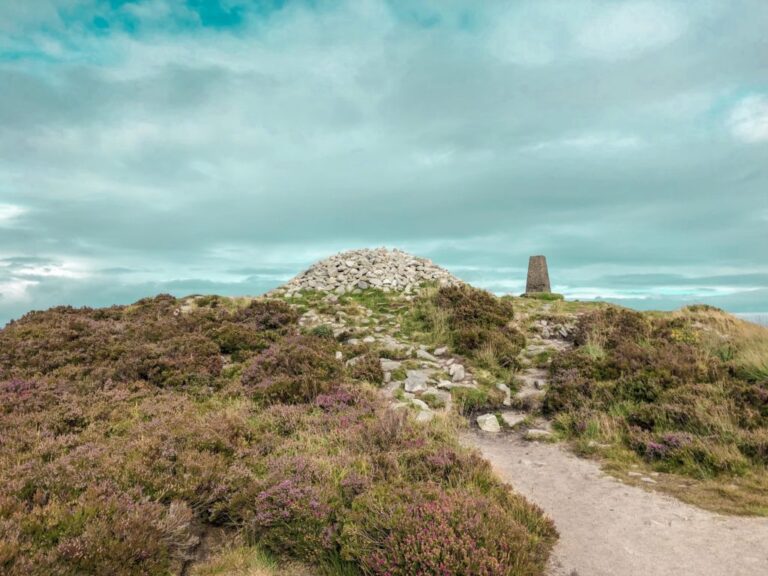
The Ticknock Walk: Experience Phenomenal Views of Dublin & Beyond
The Ticknock Walk is easily one of the most beautiful walks in Dublin. The trail offers outstanding views of Dublin City, Dublin Bay and even stretches as far a Wicklow. If you are looking for something fun to do on a summers evening then Ticknock is the place to be. It is also the perfect…
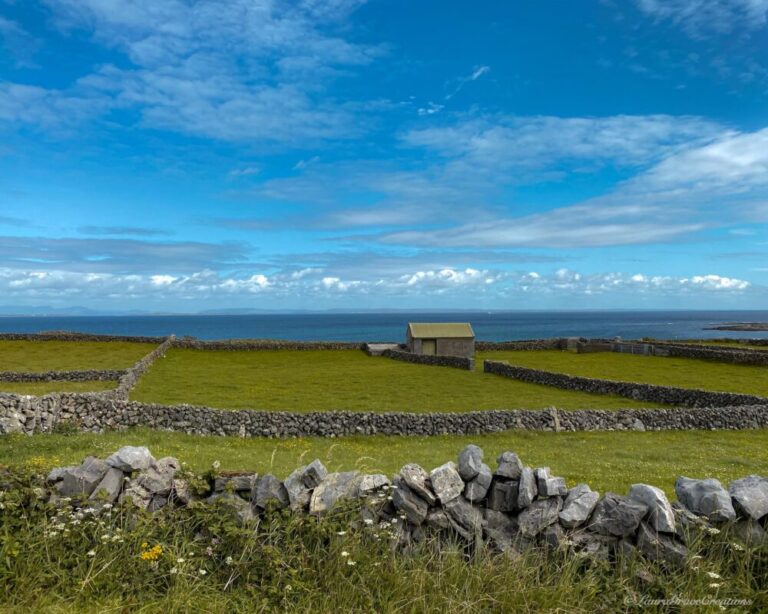
Things to do on Inis Mór: How to Spend One Day on the Largest Aran Island
The Aran Islands are starting to climb up high on everyone’s Ireland bucket list and all for a good reason. They are rich in culture, home to crystal clear waters and are the perfect destination to add to your Ireland Itinerary if you have a strong sense of adventure. Today we are going to dive…
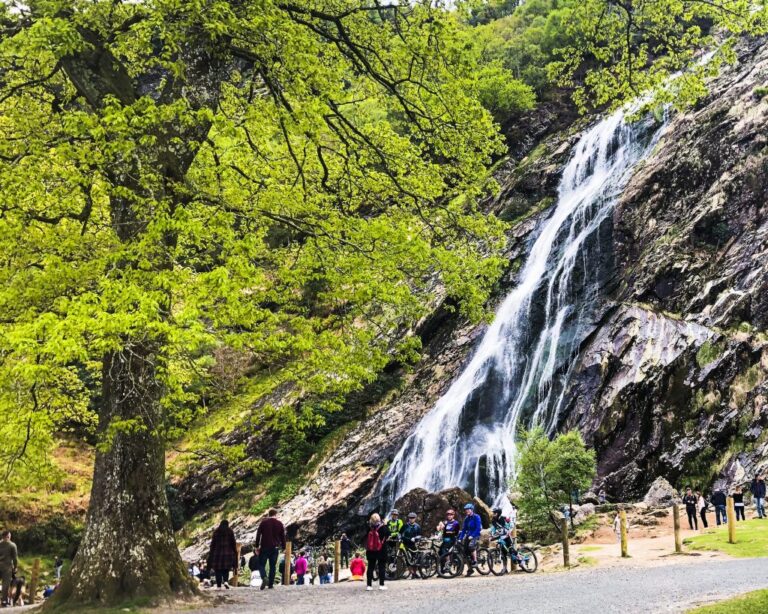
21+ Best Day Trips from Dublin: A Local’s Guide
21+ Best Day Trips from Dublin: A Local’s Guide Planning a trip to Ireland for the first time can be a scary and overwhelming experience. Especially when your time is limited. It’s common for tourists to stay in Ireland’s capital city, Dublin and not venture further afield. And while there are many things to do…
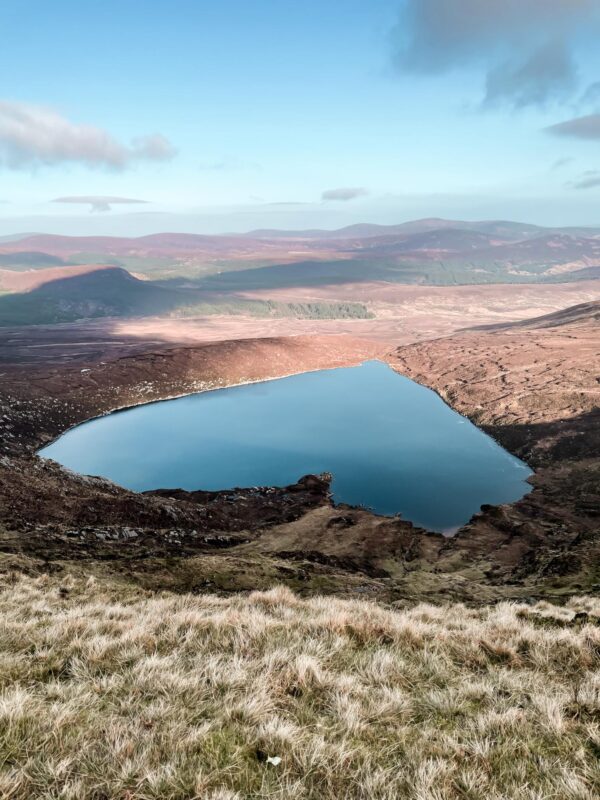
Lough Ouler Hike: A Locals Guide to Ireland’s Heart Shaped Lake
Ireland is known for its outstanding range of scenic hiking trails, from the Mourne Mountains in County Down to the towering cliffs of Slieve League and Croaghaun. Throughout the years the Lough Ouler Hike has grown in popularity thanks to social media platforms such as Instagram and Facebook. Everyone wants to catch a glimpse of…
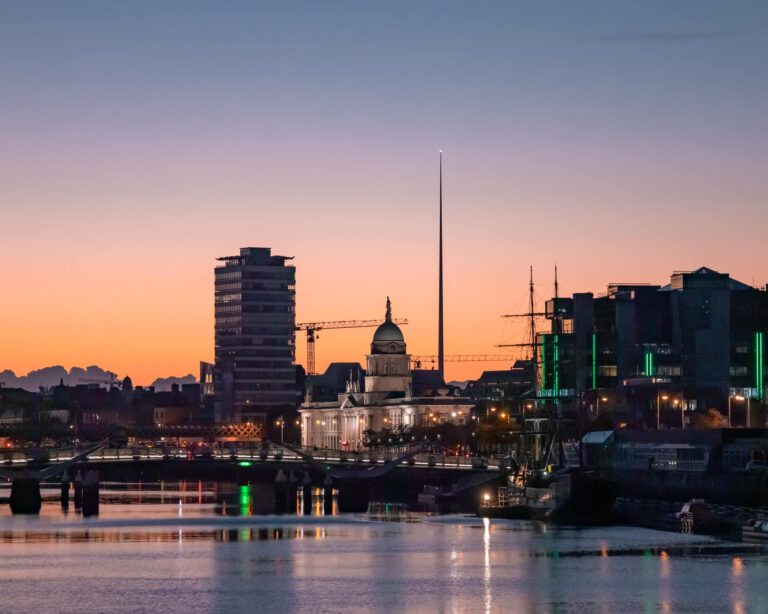
One Day in Dublin: A Relaxed Self-Guided Tour (A Local’s Guide)
One Day in Dublin: A Relaxed Self-Guided Tour (A Local’s Guide) ‘I was in Dublin once, only for a day though and I don’t really remember it’. This is something I am sad to admit that I hear all too often when people tell me about their stopover in Dublin. Now, I do understand, that…
Leave a Reply Cancel reply
Your email address will not be published. Required fields are marked *
Save my name, email, and website in this browser for the next time I comment.
National Geographic content straight to your inbox—sign up for our popular newsletters here

Visiting Ireland? Here’s what the locals love
Looking for the best castles, golf courses, or restaurants? We asked resident experts to reveal their favorites.
Ireland may be relatively small, but its dramatic coasts, country roads, and historic cities have visitors wishing for more time. To help maximize your trip, we consulted local experts, ranging from food writers to photographers, librarians, and tour guides, for their best bets.
Find legends and lore on a mountain hike
Walking is one of the best ways to get to know Ireland. “I’ve been walking for about 30 years, but I’m still trotting off to find new routes, and all of the walks seem to have stories,” says John G. O’Dwyer, author of 50 Best Irish Walks .
One of his favorites is a moderately challenging hike that leads to Coumshingaun , a lake hidden in County Waterford’s Comeragh Mountains, where 18th-century highwayman William Crotty is said to have stashed his treasure. “It’s something special, probably the biggest glacial coum [tarn lake] in western Europe,” says O’Dwyer. “You can accomplish it in four hours and it’s still off the beaten path.”
For a two-day option, O’Dwyer suggests St. Finbarr , a 22-mile trail following a traditional spiritual route in County Cork. “It’s out of the way, crosses four mountains and three valleys, and ends with a magnificent sweep into [heritage site] Gougane Barra ,” in the southwest.

Feast on Irish flavors at a food truck
“Ireland’s casual food has been elevated,” says food writer Ali Dunworth. These days, food trucks, pop-ups, and shacks are fun places to sample soulful pub grub, snap-fresh seafood, and toasties (grilled sandwiches) oozing with farmhouse cheese.
Pop-ups like Caitlin Ruth at Levis’s Corner House in Ballydehob, County Cork, and Cáis (Irish for cheese) at Dick Mack’s pub in Dingle, County Kerry, are great options. But Misunderstood Heron , a food shack overlooking Connemara’s Killary fjord, tops Dunworth’s list. “I love to go for the mussels because they’re from the fjord that you’re looking into. My plan would be to go for something to eat, and then drive over to Glassilaun Beach for a swim.”

Visit a castle by kayak
From five-star hotels like Ashford Castle to teetering towers in fields with cattle, you’re never far from a fortress in Ireland. Marnie Corscadden, owner of Ballyseede Castle in Tralee, is captivated by Cloughoughter Castle , in County Cavan. “Nestled on a small island, this dreamy castle is like something from a fairytale,” she says. “The fact that it’s so remote and can only be accessed by boat adds to its intrigue and allure.” Visitors can see it from the shore and reach it via kayak with outfitters like Cavan Adventure Centre .
( This immense fairy-tale castle was built for one person .)
Tee off at Donegal’s undiscovered fairways
Think of golf in Ireland and iconic courses spring to mind, including Old Head in Kinsale or Adare Manor , where the Ryder Cup returns in 2027. “But Donegal’s string of stunning links lie relatively undiscovered by most visiting golfers,” says travel writer Fionn Davenport. He suggests teeing off at Rosapenna or Dunfanaghy , both of whose links curve along Sheephaven Bay on the Wild Atlantic Way . “[Dunfanagy] features two of the loveliest holes in Ireland: the par-three ninth, a 120-yard bump across a rocky beach to a challenging two-tiered green, and the par-five 16th, where you’ll need a friendly wind and a decent smack if you fancy getting home in two [shots].”

Raise a glass to the traditional pubs locals love
Quincey Fennelly, managing director of Wicklow Wolf , one of the new wave of Irish craft beer breweries, says Doheny & Nesbitts is “a great traditional Irish bar” in Dublin. The Victorian classic, with its maze of rooms and mirrored partitions, is known as “the Doheny & Nesbitt School of Economics” for the politicians, civil servants, and regulars who booze and banter here.
In Bray, County Wicklow, Harbour Bar brings “a bit of everything with great music, great food in the Fish Bar and of course, great beer,” Fennelly adds. Dating from the 1880s, the ramshackle drinking hole feels at once like a timeworn home and hipster reboot of an Irish classic.
Learn a cúpla focal (few words) of Irish
The Irish language has 14 words for salmon, 32 for fields, and 45 for stones, offering “unique ways” of seeing nature and “being in the world,” says Manchán Magan, author of Thirty-Two Words for Field . Learning even a few key words, such as diadhánach (the lonesomeness of a cow bereft of her calf) or teine chrios (the flashes of fire sparked on the stones of a road by a horse’s hoofs), gives visitors “a feel for an ancient tradition and insights into the mysterious glories of the natural world.”
If time allows, you can take a beginner’s course at Oideas Gael in Glencolmcille, County Donegal, or Oidreacht Chorca Dhubhne , in County Kerry. Alternatively, Pádhraic S. Ó Murchú’s Turas Siar cultural center in Belmullet, County Mayo, accepts drop-ins. “He will happily let you practice whatever few Irish words you’ve learned on Duolingo as he guides you through some of the artifacts he has collected in the area over his long life,” says Magan.
( Here’s why learning a new language is good for the whole family .)
Spot puffins in the wild
Puffins arrive from the Atlantic to outposts like County Wexford’s Saltee Islands bird sanctuary and County Kerry’s Skellig Michael from May to July (book boat trips well in advance). “They’re known as the clowns of the sea,” says photographer Valerie O’Sullivan, referring to the birds’ colorful beaks and merry demeanor.
You can easily take a cellphone photo or bring lenses like a 24-70mm or 24-105mm and 70-200mm. “That will safeguard you for a lot of things,” O’Sullivan says. Watch for puffins bringing fish into their burrows, or moments when they turn their heads. The shot she’s striving for? A puffin in flight with a beak full of sand eels. “That’s the one I really want, but if you had it, you’d have nothing to go back for!”

See Trinity’s treasures at a turning point
The ninth-century Book of Kells combines calligraphy, creativity, and a stunning state of preservation to dazzling effect. “The artistry staggers me every time I see it,” says Helen Shenton, librarian and archivist at Trinity College Dublin . “The pigments just pop.”
The book is housed in Trinity’s Old Library, a 213-foot-long, barrel-vaulted room said to have influenced the Jedi Archive in Star Wars . This summer is a special time to visit, with the last of the repository’s 200,000 tomes being decanted ahead of a major restoration. Visitors can watch staff in purple gloves gingerly removing the treasures; a new, immersive exhibit is set to open this autumn.
( A remarkably well-preserved, thousand-year-old book was found in a bog .)
Get lost on a bike ride
In Ireland “there are thousands of miles of quiet country roads where everyone you encounter is more than willing to give directions and point out places to visit,” says Ciaran Cannon, a parliament member for Galway East, who cycled through all 32 counties for charity.
A growing network of greenways rebooting derelict railways, such as Royal Canal and Limerick , are great for taking in the countryside. Or rent a bike from Dick Ridge in Portumna for a 23.6-mile loop in County Galway that stops at the old mining town of Woodford and cheesemaker Teresa Roche ’s Kylemore Farmhouse Cheese for “the best toastie this side of Geneva.”
( For more tips on what to do in Ireland, see our Explorer’s Guide .)
Related Topics
- MOUNTAIN CLIMBING
- RESTAURANTS
- FOOD CULTURE
You May Also Like

10 best things to do in Ireland

Visiting Estonia? Here’s what the locals love
Free bonus issue.

10 whimsical ways to experience Scotland

The essential guide to visiting Scotland

Walk across the sky in the U.S.’s highest-elevation city

The essential guide to visiting Ireland

You won’t find these Hawaiian hiking trails in a guidebook
- Perpetual Planet
- Environment
- Paid Content
History & Culture
- History & Culture
- Photography
- Mind, Body, Wonder
- Gory Details
- 2023 in Review
- Best of the World
- Terms of Use
- Privacy Policy
- Your US State Privacy Rights
- Children's Online Privacy Policy
- Interest-Based Ads
- About Nielsen Measurement
- Do Not Sell or Share My Personal Information
- Nat Geo Home
- Attend a Live Event
- Book a Trip
- Inspire Your Kids
- Shop Nat Geo
- Visit the D.C. Museum
- Learn About Our Impact
- Support Our Mission
- Advertise With Us
- Customer Service
- Renew Subscription
- Manage Your Subscription
- Work at Nat Geo
- Sign Up for Our Newsletters
- Contribute to Protect the Planet
Copyright © 1996-2015 National Geographic Society Copyright © 2015-2024 National Geographic Partners, LLC. All rights reserved
- United Kingdom
- Curated Stays
- Wine Travel
- About Isabelle
- Work with Us
Local’s Guide: 7 Days Exploring the Magic of Ireland
- Isabelle Hoyne
- March 29, 2024
** Disclosure: some of the links on this site are affiliate links and should you make a purchase through these, I may receive a small commission at no extra cost to you. Thank you for your support!**
Explore Ireland like a local with my 7-day itinerary: uncover hidden gems and beloved spots in a thoughtful guide crafted with love for my homeland.
When I first sat down to tentatively etch the outline of this 7 day Ireland itinerary , I was, initially, apprehensive.
While the drafting of an itinerary wouldn’t usually elicit such apprehension, this was a somewhat bigger undertaking – I was drafting an itinerary for my own country.
That changes things.
Your knowledge of your own homeland is far more deep-rooted, for you know every nook and cranny and that intimate side of your country that presents itself to you as you trudge your way through everyday life.
How do you bottle up and share with a stranger the things you cherish the most about your home country? How do you convey the fresh, ozonous blast of syrup-like Irish air that you gulp in while atop a hillside?
The verdurous green of the abundant hedgerows to be found down winding country lanes, that burst with the aroma of wild garlic in summer? Or the muffled silence of moss-floored forests punctuated only by creaking conifers and birdsong?
And the sea – let’s not forget the often tumultuous sea that besieges Ireland’s shores. Moody and unpredictable, it can sparkle like a sapphire one day, then descend into a frenzied, frothing foam as it batters the coastline of Ireland when winds are raised the next.
Ireland may be small, but she is mighty.
You might also like:
Best 2 Days In Dublin Itinerary – A Local’s Guide To Dublin’s Fair City A Curated Guide Of The Best Things To Do In Killarney Ireland
Our people, too, are a resilient, clever bunch that have overcome an often tragic and tumultuous past.
Peppered with ruins, our land is littered with the clues of our history – the ancient stones of Gaelic castles, palladian mansions that tell the tale of our colonisation, the bullet holes in Dublin’s buildings that show our fight for independence.
Visitors are often surprised too by the modernity of our cities; Dublin in particular – but let’s not forget Ireland’s position as a global innovation hub and destination of many a tech company for the establishment of their EU headquarters.
Yes, Ireland has its cliches – pints of Guinness, cheery leprechauns and “rolling green fields” amongst them – but there is so much more to its shores. So prepare yourself for a local’s guide to Ireland and discover the best of the real Emerald Isle during this 7 day Ireland itinerary.
Essential links for booking your Ireland trip
Search for and book flights via Skyscanner Book your airport transfer with Welcome Pickups Book your car rental via Rentalcars Some memorable experiences to have in Ireland ☆ Pubs, Grub, and History: Dublin Food & Drink Tasting Tour (Cultured Voyage’s top pick) ☆ Fast-track Book of Kells Tour with Dublin Castle ☆ Full Day Gap of Dunloe & Lakes of Killarney tour ☆ Cliffs of Moher tour from Doolin (see the cliffs from the sea) ☆ Dublin in a Day: Book of Kells, Guinness Brewery, Distillery & Castle ☆ Game of Thrones™ Filming Locations and Giant’s Causeway from Dublin Hotels you should consider for your Ireland trip : ➡️ The Shelbourne (an Irish institution) ➡️ Mount Juliet (a countryside estate and manor house) ➡️ Aghadoe Heights (incredible views in Killarney) ➡️ Dromoland Castle (a luxury Irish castle retreat) ➡️ Number 31 (boutique townhouse in Dublin) Don’t forget to pack: Frommer’s Ireland Guide // The Little Book of Irishisms: Know the Irish through our Words (a handy introduction to Irish slang!) // 101 Things You Didn’t Know About Irish History // Universal travel adapter // these **fantastic** compression packing cubes // a windbreaker raincoat – don’t forget this!
Table of Contents Hide
How much should you fit in when in ireland for 7 days , getting around ireland by car, getting around ireland without a car, map of your 7 days in ireland route.
- Day 1: Dublin (overnight in Dublin)
- Day 2: Glendalough, Kilkenny (overnight in Thomastown or Kilkenny)
- Day 3: Thomastown, Waterford, Lismore -> Killarney (overnight in Killarney)
- Day 4: Killarney National Park (overnight in Killarney)
- Day 5: Dingle Peninsula (overnight in Adare)
- Day 6: Cliffs of Moher, Doolin & the Burren (overnight in County Clare)
Day 7: Back to Dublin
Options to extend your 7 day ireland itinerary, when is the best time to go to ireland, what should i pack for ireland, tips for booking the right accommodation in ireland, how to fly into ireland, travelling to ireland you might also like:, like this post please share & pin for later, so, what is there to see in ireland .
For such a small country, Ireland really does have a lot to offer in the sightseeing department. Major selling points include sublime seascapes, a strong literary heritage, romantic castle ruins, lively towns and cities, ancient heritage sites and let’s not forget – a patchwork of luscious, emerald landscape.
Not always the most obvious, but the culinary scene in Ireland is absolutely buzzing too.
The fact that Ireland is an island lends itself to magnificent seafood and the quality of Ireland’s other food produce is second-to-none. Ireland is famous for its meat and dairy produce and there is a huge focus on local produce and sustainability amongst Irish establishments.
No matter its duration, any Ireland itinerary , especially for first-time visitors to Ireland, should incorporate a smattering of the above to cover off a range of Irish highlights.
That way, you’ll scratch the surface across a broad range and uncover where you would like to focus your efforts on your return visit to Ireland – trust me, you’ll be back!
Plan to under, rather than over-reach on what you see during your 7 days in Ireland . Ireland really is so achingly beautiful that you’ll find yourself compelled to stop more often than you think.
Even as a local, many’s the time where I stop to drink in a fluorescent sunset, or watch how the sun casts feathers of light across a distant hilltop – even when doing something as mundane as popping out to the shop for some milk – so if you’ve never been to Ireland before, well; you’re in for an assault of the senses!
Geographically speaking, then yes, Ireland is small and distances between locations fairly short, but driving times in Ireland are often longer than you would think .
The most beautiful parts of Ireland are often a bit remote and take the longest to reach (ie roads are bad and you will need to drive slowly). So in order to experience the country properly, then don’t expect to see all of Ireland in 7 days!
For that reason, I’ve decided to focus this Ireland 7 day itinerary on the eastern, south-east and south-west parts of the island , so that less time is spent driving and more time is spent having an immersive travel experience.
EDITOR’S NOTE | In what was a very tough call, I’ve excluded the areas of Galway and Connemara , as well as some equally popular local favourites like Sligo and Mayo (the town of Westport and the epic Croagh Patrick are both located in Mayo), Donegal and Northern Ireland from this 7 day tour of Ireland.
These areas are particularly suited to slow travel and deep immersion; you could easily spend a week in each of them (County Kerry and West Cork are the same, too).
The simple reason for their exclusion is that you will not have enough time to do them justice if you cram them in with the other locations listed in this itinerary if you are spending only one week in Ireland.
How to get around Ireland for this itinerary
There are a number of ways to get around Ireland, but really, the best way to see Ireland in 7 days is by car , as you’ll have the flexibility to stop off along the roadside at whatever takes your fancy.
Much of the beauty in Ireland is seen on its smaller country roads and you will miss out on this if you are constrained to public transport. And besides, what could be better than a 7 day Ireland road trip?
So, is driving in Ireland difficult? As an Irish person, I would be inclined to say no. In general, main roads and motorways are in good condition and well marked. It’s when you find yourself on narrow countryside or coastal roads where you might find things a bit trickier.
In these instances, expect that you may have to pull in to let oncoming traffic pass, or that you may have to reverse a little back down the road.
When visiting Ireland from another country, the main thing for most people to overcome when touring Ireland by car is that we drive on the left side of the road – if you’re comfortable with that concept and the manoeuvring mentioned above then you will be absolutely fine.
To put driving in Ireland into context, if you’ve managed to drive around Italy on roads of varying conditions, then driving in Ireland will be an absolute breeze.
Irish drivers are rather polite and will pull in to let you pass on narrow roads if they have more space on their sides (you should also be prepared to provide the same courtesy).
If you’re driving really slowly, however, then don’t be perturbed if someone ends up driving very close to your rear – just pull over somewhere safe and let them pass you.
I always use rentalcars.com when hiring a car abroad. I like them for the following reasons:
- You can compare all car rental companies in a given destination. They also have superior filtering options too, so you really can drill down to what you’re looking for – even to the deposit amount and payment type.
- All the info you need for your relevant booking can subsequently be found in their convenient app – no print outs necessary.
- You can often amend/cancel your booking with no additional charges.
It is also possible to get around Ireland without a car, but you may not be able to visit anywhere that is off the beaten path. You can navigate your 7 days in Ireland by train, and a combination of buses.
You may then also need to rely on some guided tours, private drivers, or taxis in order to reach some attractions during your 7 day trip to Ireland.
Getting around Ireland by train
Ireland’s train system is run by Iarnród Éireann with trains running, for the most part, quite frequently. The standard of trains is also decent, with WiFi onboard and comfortable seating. Many of Ireland’s major cities are connected by train (although some not by a direct train line).
Using this itinerary of Ireland as an example, you can easily get from Dublin to Kilkenny, for instance, but then getting onwards from Kilkenny to Killarney is a bit more of a logistical challenge that would eat into your precious holiday time.
Getting around Ireland by bus
Ireland is also well connected by bus routes, through a range of public and private operators. Ireland’s public bus company is Bus Éireann , who cover a range of routes between major cities and towns, as well as some of Ireland’s smaller, regional destinations – check out the website for further details.
There are also lots of private bus operators in Ireland, too many to go into in this post. If looking for something specific, the best way to see if a private route exists is to take to Google – “ bus from [x] to [y] ” should do it!
Booking a taxi in Ireland
There will more than likely come a time when you will require a taxi during your one week Ireland trip. While Uber is a thing in Ireland, the best way to get a taxi in major cities like Dublin is through the Free Now app (which is basically the same as Uber).
Outside of Ireland’s main cities (Dublin, Cork, Galway etc), then in order to find a taxi, Google is your friend.
Taxis will usually have to be pre booked and if your Google session is not fruitful and you cannot find a taxi company listed in the area, then ask at your accommodation, who will likely have some local taxi drivers’ details to hand.
If you’re looking for a taxi or transfers over longer distances (ie an airport transfer or something along those lines), then my go to around all of Europe is Welcome Pickups .
You input a start and end point of your journey and receive quotes from drivers who are signed up to their platform, with everything being handled through their secure website.
An overview of your 7 day Ireland itinerary
In this 7 days in Ireland itinerary, you’ll start off in the capital city of Dublin .
From here, you will begin to make your way south, working in a clockwise direction through a looped route that will bring you through the south-eastern and south-western parts of Ireland, before finishing up once again in Dublin.
Overview of your 7 day Irish road trip
- Day 1 : Dublin
- Day 2 : Glendalough & Kilkenny
- Day 3 : Thomastown, Waterford, Lismore
- Day 4 : Killarney National Park
- Day 5 : Dingle, the Slea Head Drive & Adare
- Day 6 : Lahinch, The Cliffs of Moher, Doolin & The Burren
- Day 7 : Back to Dublin
The above route comprises a healthy mix of historical treasures, stunning scenery that includes parts of the Wild Atlantic Way and some off-the-beaten track hidden gems.
I will go into each day of this one week Ireland itinerary in more detail below, but in terms of what to expect I’ve included a foodie tip for each day, as well as what to do, where to overnight and some recommendations for accommodation.
So that all of the above Ireland itinerary makes sense, I’ve included on a handy Ireland road trip map below so you can see your one week in Ireland itinerary in a more visual way.
Your 7 day Ireland road trip in full
Day 1 : dublin ( overnight in dublin ).
Day 1 of this itinerary for Ireland 7 days, starts you off bright and early in Dublin’s fair city.
Is Dublin worth it? I certainly think so. There are simply so many things to do in Dublin and depending on your interests, what you should do is going to be quite subjective. To tackle this, I’m going to let you choose yourself!
I’ve included two lists of things to do in Dublin that I would recommend – those that are more ‘touristy’ and those that are a little more off the beaten track. Choose around 3 – 5 between both of the lists based on your interests and you’ll have plenty to keep you busy.
Related reading for Dublin:
- How to spend 2 days in Dublin: a local’s guide
- A local foodie’s guide to Dublin (where to eat)
- Is Dublin worth visiting? An assessment of pros and cons
The best tourist attractions to visit in Dublin
Guinness storehouse.
Yes, here is a giant cliche (and I absolutely hate cliches), but the Guinness Storehouse is actually a wonderfully fun and interesting experience! If you want to visit the home of the black stuff, and learn how to pour your own pint, then book your Guinness Storehouse entrance tickets here .
EPIC The Irish Emigration Museum
For anyone with Irish ancestry, a visit to EPIC The Irish Emigration Museum is an absolute must. Winner of Europe’s Leading Tourist Attraction in both 2019 & 2020, this is a fully interactive learning experience that explores the issue and impact that Irish emigration had on Ireland and the rest of the world.
Book your skip the line EPIC ticket here .
Trinity College & the Book of Kells
Ireland is known as the land of saints and scholars, and our literary heritage started all the way back with the production of the 8th century AD Book of Kells. Extremely ornate, with beautiful illustrations, this illuminated manuscript is housed in the Old Library of the illustrious Trinity College Dublin .
Book your early access, fast track entry ticket here .
Kilmainham Gaol
An extremely important talisman in Irish political independence is Kilmainham Gaol . Here, the rebels of the 1916 Rising were imprisoned and executed and many other important political prisoners were incarcerated here during its lifetime.
A spine-tingling visit, but for me, one of the best things to do in Dublin, with a great exhibition that takes you succinctly through Ireland’s history and quest for independence from Britain.
The National Gallery
I love the Irish National Gallery. Set within the beautiful, Georgian architecture of Merrion Square, the gallery is home to the best collection of Irish art in the world.
There is also an impressive set of European art and, set over four floors, the National Gallery often features extremely worthwhile travelling exhibitions. The best thing is that entrance is free – so you can spend as little, or as long as you want here without feeling guilty.
Dublin off the beaten track – exploring some Dublin hidden gems
Moli – museum of literature ireland.
Located in a classical Georgian building home on St. Stephen’s Green, the Dublin Writers Museum is the place to go if you’re keen to deepen your knowledge of Dublin’s literary heritage.
Experience Ireland’s literary history through engaging exhibitions showcasing the nation’s renowned writers, including an in-depth exploration of James Joyce’s Dublin.
Discover rare and significant pieces from the National Library of Ireland, offering a glimpse into the country’s literary past. The journey culminates in peaceful gardens, where you can relax and reflect on Ireland’s rich literary contributions.
There’s also a lovely café on site (worth popping in for alone), and they also run historical house tours, as the building the museum in housed in is historically significant, featuring stuccowork by the famous Lafranchini brothers , and having included amongst its past residents the infamous Buck Whaley .
If you want to discover more of Dublin’s literary heritage and have a bit of craic at the same time, then check out this Dublin literary pub crawl.
National Museum of History and Archaeology
The National Museum of History and Archaeology is a history lover’s paradise, and has to rank amongst the top things to do in Ireland for history lovers.
Featuring displays that include prehistoric Ireland, the museum is home to some of Ireland’s ‘bog bodies’ (ie Iron Age bodies found perfectly preserved in bogs), together with impressive Viking gold hordes and church treasures, such as the Ardagh Chalice.
If you’d like to tour the museum under the tutelage of an expert guide, you can book a guided tour here .
Dublin Docklands
This is the more modern part of Dublin that I referenced earlier on in this post! To soak up some of Dublin’s more modern architecture, walk along the Liffey to Dublin’s Docklands, taking in features such as the Samuel Beckett Bridge , the Convention Centre and the Famine Memorial .
Walk to Grand Canal Dock (especially cool when lit up at night), where you’ll find the Bord Gais Energy Theatre , as well as the European headquarters of tech giants like Google and Facebook.
14 Henrietta Street
Dublin’s finest Georgian streets started their lives as homes for the elite, before many eventually became slums for Dublin’s poorest citizens. Visit 14 Henrietta Street for a tour to understand how and why, along with what life was like in these redbrick homes.
You can learn more and book your tickets here .
The Grand Canal and Merrion Square
My favourite parts of Dublin are the area that runs along the Grand Canal, from Leeson Street Bridge to Mount Street Bridge, along with Merrion Square. No matter what time of year, I’d highly recommend taking a stroll as the colours and foliage are always different.
Just before you reach Mount Street Bridge, take a left at Huband Bridge, making your way past the Pepper Canister Church and along the wonderfully Georgian Mount Street Upper. You’ll reach the beautiful Merrion Square, where you can enjoy the park and admire the doors of the houses that line the square.
FOODIE TIPs for dublin
For glorious, upmarket toasties made with artisanal ingredients, along with a curated selection of natural wines, head to Loose Cannon on trendy Drury Street. In the evening, get settled in Delahunt , a relaxed, contemporary restaurant in a restored Victorian building. When you’ve eaten, head to the Living Room bar upstairs, a delightful speakeasy complete with antique wooden bar and bay window seats. I’ve also written an in-depth article on the best restaurants in Dublin for foodies, which you can read here .
Where to stay in Dublin
Lap of luxury.
The Shelbourne
The Shelbourne is an institution in Dublin and is also absolutely timeless. This Grand Dame with old world style occupies one of Dublin’s most prime pieces of real estate, right on St. Stephen’s Green with views onto the park.
Boutique Bolthole
A beautiful, four star boutique hotel with gorgeous interiors that is conveniently located a 5 minute walk from St. Stephen’s Green.
Luxe for less
For a stylish stay in a gorgeous Dublin townhouse, opt for the splendid Number 31, voted as having the best Guesthouse breakfast in Ireland and located close to St. Stephen’s Green.
When to pick up your rental car
If you’ve chosen to rent a car (which I recommend), then it’s up to you as to whether you want to pick it up from Dublin Airport or City Centre.
The airport will be more convenient, but you’ll have to factor in parking in Dublin (most accommodation will have parking facilities closeby they can direct you to, some (although rare enough) may offer their own parking). You will likely not need your car while in Dublin, though.
Driving in Dublin isn’t any worse than in other cities (and it’s nothing like Rome, for example) – but there are some narrow streets and some one-way routes to manoeuvre, however.
Day 2 : Glendalough, Kilkenny ( overnight in Thomastown or Kilkenny )
Glendalough.
( Driving time from Dublin: 1 hour )
I’d suggest starting off early on day 2 of your Ireland 7 day itinerary. Your first stop is Glendalough in County Wicklow and I’d allocate a good portion of your morning to discovering this serenely beautiful spot.
It was here, at the base of a glaciated valley, that one of Ireland’s most famous saints – Saint Kevin – founded a monastery in the 6th century, that soon became one of the most important religious centres in Europe. Its ruins, including a fantastic round tower, are now dotted around the site.
The real cherry on top, however, are the astoundingly beautiful natural surroundings of the area.
Steep forest looms over a misty lake below and there are numerous walking trails of various lengths to be discovered. Try and do the loop that brings you up through the forest and around the perimeter of the lake – it takes around 1.5 – 2 hours to complete.
( Driving time from Glendalough: 1 hour 20 minutes)
Provided that you went to Glendalough early, you should reach Kilkenny around, or a little after lunchtime.
Kilkenny is a unique town to Ireland, in that many of its medieval features are extremely well preserved and so visually, it is different to other towns and cities in Ireland.
Is Kilkenny Ireland worth visiting ? Absolutely, especially if you appreciate well-preserved medieval charm and a unique atmosphere.
After a solid feed (see foodie tip below), your first port of call should be the majestic Kilkenny Castle , a former Norman stronghold and former home to the Butler dynasty that ruled much of the South East of Ireland for many centuries.
Tour the inside of the castle and explore the extensive grounds of the Castle Park, a walled demesne that extends to 50 acres and includes a mixture of formal and informal parkland and terraced gardens.
Pop across the road afterwards to the Kilkenny Design Centre for a browse and grab a scone and a quick cup of tea to keep you going.
Later, learn more about Kilkenny’s medieval history in the Medieval Mile Museum and wander the atmospheric streets and alleyways. You can buy your Medieval Mile Museum tickets in advance here .
Related reading for Kilkenny:
- Why I think you need to visit Kilkenny
- A guide to visiting Kilkenny’s Medieval Mile (+ some of its history)
For the beer fans out there, visit the Smithwick Experience to learn how Kilkenny’s famous (and Ireland’s oldest!) ale is brewed.
If you have time, pop into Rothe House , a 16th century former merchant’s house. Kilkenny is also famous, too, for Saint Canice’s Cathedral and its 100ft round tower, which is Ireland’s best preserved and most impressive medieval cathedral.
If you’re interested in learning more about Kilkenny’s history in a fun and engaging way, you can check out this highly popular Kilkenny walking tour here .
Foodie tips for kilkenny
For a reasonably priced Michelin-star lunch, head to Campagne , which offers French inspired fare. Those seeking a more brunch-like option should visit Aran Artisan Bakery & Bistro , while those on the hunt for a good steak should visit the aptly named Butcher. New on the scene to Kilkenny, and exceptionally good, is Nóinín .
Kilkenny’s most elegant dining experience is located 20 minutes’ drive away in the manor house at Mount Juliet Estate in Thomastown. The one Michelin star Lady Helen Restaurant offers an exquisite setting, with equally exquisite food.
Where to stay in Kilkenny
Lap of luxury.
Mount Juliet Estate
For a grand, Irish country estate experience, I’d strongly encourage you to book a night at the Mount Juliet Estate, located on the outskirts of Thomastown (which is 20 minutes from Kilkenny). This five star luxury resort boasts a stunning manor house, a championship golf course and hundreds of acres to explore.
Butler House
Set in the former dower house of Kilkenny Castle, this elegant manor house is now a four star, boutique hotel and places you in Kilkenny city centre close to everything you could wish to see.
Day 3 : Thomastown, Waterford, Lismore -> Killarney ( overnight in Killarney )
The third day of your 7 days in Ireland is going to feature several hidden gems in Ireland that you are unlikely to see on other 7 day Ireland itineraries.
You will encounter these under the radar spots as you make your way from the south east to the south west of Ireland, passing through quaint Irish villages and resplendently raw Irish countryside.
( Driving time from Kilkenny: 20 minutes/ driving time from Mount Juliet: 5 minutes)
On the morning of day 3 of your itinerary in Ireland, you’re going to start in the small market town of Thomastown in County Kilkenny.
In recent decades, Thomastown has become known as somewhat of an artistic hub. Home to the Grennan Mill Craft School and a range of artisanal stores such as Brid Lyons Ceramics, it’s well worth spending some time in the town.
On the banks of the river Nore at Thomastown are the evocative ruins of Grennan Castle , which are easily reached at the starting point of the Grennan Loop Walk (called Nore Valley Loop Walk on Google Maps).
This walk is also beautiful to take on a nice day and will take you around an hour, bringing you down along the river bank past Grennan Castle and through some gloriously unspoilt Irish woodland.
Close to my family home, it’s one of my favourite places in the world and it’s a secret I am letting you in on!
The majestic ruins of Jerpoint Abbey are also located a couple of minutes drive from Thomastown (on your route to Waterford). Founded in the 12th century, the abbey is one of the best examples of a medieval Cistercian Abbey in Ireland, offering intact ruins and a good visitor centre experience.
(Driving time from Thomastown: 35 minutes)
Like Dublin, here is another instance on this Ireland 7 day itinerary where I present you with a choice.
Option one is to visit the Viking city of Waterford . Located on the sea and recognised on the worldwide stage as the hometown of Waterford Crystal, what makes Waterford particularly interesting is its Viking heritage, having been founded by the Vikings in 914AD.
Spend some time in the Viking Triangle, located in Waterford’s city centre to stop off to take in Reginald’s Tower a memory from your 7 days in Ireland that you won’t forget, undertake the Viking Experience , which is the world’s first virtual reality viking experience that takes place in a reconstructed Viking long house.
Take this guided tour of the Viking Triangle if you’d like to learn more about Irish invasions and battles and to see some of Waterford’s most important archaeological treasures.
Option 2 is to skip the city of Waterford and make your way, instead, to the gardens at Mount Congreve , situated just on the outskirts of Waterford city.
Appended to a grandiose Georgian manor, these spectacular 70 acres of woodland gardens offer 16km of walking trails and different garden sections, including a Georgian glasshouse, a classical temple and a Chinese pagoda, all set against the beautiful backdrop of the river Suir.
( Driving time from Waterford: 1 hour)
From Waterford (or Mount Congreve), you will next make your way to the heritage town of Lismore, passing through some sublime parts of the Irish countryside.
Foodie tip for waterford
40 minutes into your drive to Lismore, make a quick detour into the seaside town of Dungarvan for lunch at The Tannery . Located in a former leather factory, The Tannery packs some hefty credentials, being owned and operated by famous Irish chef Paul Flynn and his wife Máire and serving up a constantly changing menu that reflects seasonal ingredients and top quality, local produce.
After you pass through the lovely little hillside village of Cappoquin, you will shortly enter Lismore. The first thing you will notice on your left is the dominant edifice that is Lismore Castle hovering mightily against a cloud of greenery above the river and town below.
Instead of continuing straight over the bridge and into the town, however, you are first going to take the road to the right, that after a couple of minutes, leads you down to the carpark at Ballysaggartmore Towers.
After a short stroll through rustling Irish woodland, you will stumble upon both the gothic towers, which were built as elaborate entrance gateways, and a separate folly located a short distance away.
The story of the towers is a sad one – built by a social climbing Anglo-Irish landlord who was attempting to upgrade his house, he bankrupted himself while building just the gates and ended up evicting many tenants in the midst of the Great Famine in the 1840’s in order to try and pay for them.
Plan to spend around an hour at the towers if the weather is good, before making your way back into Lismore town (where you are allowed to cross the bridge this time!). You will be making your way to visit Lismore Castle , which is the Irish home of the Duke of Devonshire.
The castle still operates as a private home (although available for exclusive rent, should you have a large budget), but you can pay a visit to the Lismore Castle Art Gallery, which is housed in the once-derelict West wing of the castle.
There is one major exhibition hosted there per year, as well as tours, workshops and other arts related events throughout the year. Visitors can also enjoy a walk through the castle gardens, where several pieces of contemporary sculpture have been installed on permanent display.
EDITOR’S NOTE | I’ve included this day 3 in place of the popular detour of Blarney Castle (which I don’t entirely rate, personally – I think it’s a bit of a tourist trap). If you still want to incorporate an iconic Irish site, then I’d highly recommend you visit the Rock of Cashel instead.
It would mean skipping your morning in Thomastown and or Waterford/Mount Congreve, but if you don’t dally too much, you’ll be able to take in Lismore Castle and Ballysaggartmore as well. It would take your road time from Kilkenny to Killarney from around 3 hours to 3.5 hours (plus time for sightseeing) if you incorporate Lismore.
Onwards to Killarney
( Driving time from Lismore to Killarney: 1 hour 45 minutes )
It will be close to evening by now and you are going to finish out day 3 of your 7 day tour of Ireland with a drive to Killarney .
The drive will take you from the county of Waterford, through the county of Cork, before you cross the border into Kerry and arrive at Killarney in time to grab something to eat and settle into your accommodation.
Where to stay in Killarney
Aghadoe Heights
Aghadoe Heights is a 5 star hotel in Killarney that offers outstanding views and extremely attentive, friendly service. I had a fantastic, relaxing stay at this hotel. For unparalleled views of the lakes of Killarney from the comfort of your own bedroom, I would highly recommend booking a lake view room.
Boutique bolthole
Cahernane House
If you’re looking for a boutique, manor house hotel option in Killarney, then I would highly recommend Cahernane House Hotel. You can read my review here . I had an amazing stay at this refined, classy hotel, located just on the edge of Killarney National Park close to the Killarney lakes.
Killarney Glamping at the Grove
Those looking for somewhere a little more rustic, but still a little bit luxe to stay in Killarney should consider Killarney Glamping at the Grove. Aimed towards couples, it’s a romantic spot to soak up the beautiful natural surroundings of Killarney National Park.
Day 4 : Killarney National Park ( overnight in Killarney )
Killarney national park.
( Driving time: nil, as you’ll already be there! )
The Killarney National Park offers up some of the best scenery that you are likely to encounter during your 7 day trip to Ireland.
I’ve extensively covered the best things to do in Killarney in another post. You should refer to this to choose what you would best like to cover off during your day in Killarney.
Truth be told, Killarney and its surroundings almost deserves a week in Ireland in itself, but you can get a decent taste of what this beautiful region of Ireland holds in a day.
If you’d like something a little more prescriptive, then below is a one day Killarney National Park itinerary to maximise your time and see many of Killarney’s key highlights:
- Start off with a visit to the Gap of Dunloe. Get this tour in the morning. You will see the Gap of Dunloe and get a lake tour, with no faffing around with logistics, which the tour operator will sort for you.
- The boat will let you off at Ross Castle . If interested, do a quick tour to see what life in a medieval Irish castle was like.
- By now, it will be early afternoon. Make your way into Killarney town, grab something super quick for lunch and then hire a bike.
- Make your way down Muckross Road and enter Killarney National Park.
- Stop off at Muckross Abbey to have a look and take some pictures.
- Next up is Muckross House & Gardens and/or Muckross Traditional Farms , depending on opening hours (check these before going!!), time of day and your own personal interests.
- From here, you’re then going to cycle the Muckross Loop . This will take you around an hour, maybe a bit longer depending on how much you stop. Take in some of the sandy beaches, Bricin Bridge , Dinis Cottage , Old Weir Bridge and the Meeting of the Waters . If you need refreshments, Dinis Cottage is a good option.
- Finally, once you end the Muckross Loop, you’ll stumble upon the entrance to Torc Waterfall – use this as your opportunity to view the same!
I recognise that the above is quite jam-packed and if you’d like a slightly more relaxing time in Killarney during your 7 days in Ireland, then cut out one or two stops in the above.
You’ll likely spend much of your day outdoors exploring, especially in summer when it will be bright until 9/10pm.
Taking the above into account, you will overnight once more in Killarney.
OPTION TO EXTEND YOUR TIME | The Iveragh Peninsula (where Killarney is located) is a great point at which to extend your trip, if you have the opportunity. This I would do to drive the Ring of Kerry . Most of its highlights can be seen in a day, but I’d recommend staying a night or two somewhere along the peninsula if you can afford the time in your itinerary for a greater immersion.
Posts to read:
- Driving the Ring of Kerry: top tips and advice
- Ring of Kerry highlights: what you must see on the route
Day 5 : Dingle Peninsula ( overnight in Adare )
Dingle town.
( Driving time from Killarney: 1 hour 5 minutes)
On day 5 of your 7 day itinerary for Ireland, you will depart Killarney and make your way around the Wild Atlantic coast to the charming seaside town of Dingle .
On your drive to Dingle, I would implore you to stop off at the magnificent Inch Beach , which without shadow of a doubt, is one of the best and most beautiful beaches in Ireland.
No matter what kind of weather, the colours here are always absolutely incredible and it is a sight that is good for the soul!
This 5km sand spit is home to a surf school, and a whole range of other seaside-related sports and activities including windsurfing, kayaking, kite surfing…even hangliding.
When you arrive in Dingle, take a little bit of time to wander its colourful streets and pop into some of it’s wonderfully artisanal local stores. Grab a cup of coffee, and then get read to hop back into the car, as you’re next heading on a Slea Head Drive road trip!
Foodie tips for dingle (part 1)
If you are seeking some quality coffee and/or brunch, then Dingle has two awesome choices in My Boy Blue and Bean in Dingle. Those who are fiends for some cheese, will find a brilliant Irish cheese store in The Little Cheese Shop. Right next door is Bácús Bakery , which sells delicious sourdough bread – these two are a match made in heaven, methinks!
Slea Head Drive
Many visiting Ireland choose to skip the Slea Head Drive in place of the Ring of Kerry, and why you would do so is really beyond me. One of those places that you have to see in person to fully appreciate, this relatively short stretch of road along the Atlantic coastline is one of the best scenic loops in Ireland.
There are lots of things to see along the way while driving the Slea Head Drive, which I will outline below and I would suggest factoring in around half a day at least to explore.
First up, are the Fahan Beehive Huts . These are ancient houses made solely from stacked rings of stone without any mortar.
The fact that they are still standing, perhaps more than 1,000 years after they were built is truly remarkable, especially when you factor in the often harsh weather conditions along the Atlantic coast.
Admission is handled by the landowner and it costs a couple of Euros to visit – make sure to have spare change.
An important relic from Ireland’s Iron Age, Dunbeg Fort is a dramatic promontory fort that juts out over the churning waves below. Dating from 500BC and with panoramic views of the sea, there is also an audio-visual visitor’s centre should you wish to learn more.
Possibly the best place to stop off for exceptional views of the Atlantic ocean and the jagged coastline is Slea Head itself. Marked by a crucifix and with beautiful views of the Blasket Islands, be careful pulling over here as it’s on a bend.
Next up are Coumeenole Beach and the closely located Dunquin Harbour . A gloriously picturesque beach, sheltered amongst soaring cliffs topped with a patchwork of field and stone, Coumeenole is famous for the part it played in 1970’s movie Ryan’s Daughter.
Dunquin, meanwhile, is probably the most identifiable spot along the Slea Head drive and fans of Star Wars may be quick to recognise it. There are also a number of scattered ruined cottages around here that were abandoned during the famine.
From Dunquin, you can get a ferry out to the Blasket Islands – however, with only 7 days in Ireland, it is unlikely that you will have time for this if you would like to complete this 7 day itinerary, Ireland in full. An extremely worthwhile stop off, however, is the Blasket Centre, located at Dunquin too.
The Blasket Centre documents the lives of the islanders on this harsh, beautiful isle before it was abandoned in 1953 as conditions became more and more inhospitable and as the island saw a mass exodus of its younger population.
The centre explores the rich, literary legacy that was left by the islanders and explores the impact of migration, both to the island and on the places these resilient islanders ended up (many in the United States).
A fascinating couple of hours that are definitely worth factoring in to your Slea Head Drive itinerary.
Finally, as you begin to complete the loop and face back towards Dingle, you will find Gallarus Oratory sitting in the shadow of Mount Brandon. Shaped like an upturned boat, it is one of Ireland’s best preserved early Christian churches.

Back to Dingle
Depending on how long you spent along the Slea Head Drive, you’ll probably be back in Dingle from early- mid afternoon.
The Dingle Distillery produces an award winning whisky, along with a highly successful gin as well. Their distillery tour and tasting is extremely informative, good fun and you also get to sample some products!
Otherwise, Dingle is renowned for its pubs and you’ve without a doubt earned one after your day of sightseeing (unless you’re the designated driver – sorry)!
Two of Dingle’s best pubs are Dingle institution Dick Macks , along with Foxy John’s, a hardware-store-come-pub. Both are traditional Irish pubs and are great craic!
Foodie tips for dingle (part 2)
For the freshest of Irish seafood that you’re likely to sample during your Ireland 7 day road trip, I have two recommendations. Firstly, is Out of the Blue .
This restaurant serves up only fresh fish caught from Dingle Harbour, with an ever changing menu that never fails to delight.
Secondly, is the more casual option of The Fish Box .
The best ‘fast food’ you are ever likely to have, the menu features a vast range of seafood prepared in umpteen different ways (crab spring rolls, anybody?!), all caught in Dingle Bay from the family’s fishing trawler.
Onwards to Adare
(Driving time from Dingle to Adare: 1 hour 50 minutes)
While it might be very tempting to lose yourself in the lively atmosphere of Dingle’s pubs, you will be spending the night in Adare . In doing this, you save yourself a 3+ hour drive to the Cliffs of Moher in the morning.
Adare is a heritage town in County Limerick, that boasts thatched cottages and a position as one of Ireland’s most prettiest villages.
Where to stay in Adare
Adare Manor
Adare Manor is a grand, neo-Gothic mansion that is one of Ireland’s most luxurious 5 star hotels. Boasting a Michelin star restaurant, golf course and a range of outdoor activities, a stay here will really not fail to impress.
The Dunraven
Situated right in the heart of Adare village, this family run hotel is cosy and inviting. Impeccably furnished with antique pieces, rooms offer a view over the thatched cottages of Adare.
Day 6 : Cliffs of Moher, Doolin & the Burren ( overnight in County Clare )
(Driving time from Adare to Lahinch: 1 hour 5 minutes)
The beach at Lahinch is a surfer’s paradise.
Located a few minutes’ drive from the Cliffs of Moher, this is a must-do for any surfer on your Ireland 7 day itinerary, as at Lahinch, you will experience some of the best waves in the world.
There are plenty of vendors to rent boards from and prepare to wrap up and wear a wetsuit if you plan on hitting the waves!
Note : you may very well have to skip the Burren, or have a very early start from Adare if you want to fit this in.
Cliffs of Moher
( Driving time from Lahinch to the Cliffs of Moher: 12 minutes)
One of your final port of calls on your 7 day Ireland road trip are the Cliffs of Moher . Let’s call a spade a spade; if visiting from abroad, images of these majestic, sweeping cliffs and the churlish, churning waters that lie at their feet are likely one of the main things that brought you to Ireland.
A rather nice way to approach the Cliffs of Moher, rather than arriving at the manic car park and visitor centre, is via the Cliffs of Moher Liscannor Walk (Google coordinates here ).
You can park your car for about €3 and it will take you around 15 minutes to walk to the viewing point at Hag’s Head – you can also continue further along the cliffs towards the visitor centre if you like.
An unforgettable way to view the cliffs is from the sea. You can book a Cliffs of Moher Cruise here .
( Driving time from the Cliffs of Moher to Doolin: 10 minutes)
Gateway to the Cliffs of Moher, is the lively and extremely colourful village of Doolin . Renowned as a center of traditional Irish music, you can also walk from Doolin to the Cliffs of Moher via the Cliffs of Moher Coastal Route , a spectacular cliff walk of about 16km.
( Driving time from Doolin to The Burren: 10 minutes)
The Burren is Ireland’s most famous geopark and is an area that is covered in a vast karst landscape of bedrock. An area of extreme biodiversity, it is also home to over 70% of Ireland’s flora and fauna.
The Buren is also of extreme archaeological importance documenting the evidence of some of Ireland’s earliest settlers, with over 2,700 documented monuments in the area, with some of these being an incredible 6,000 years old.
Discover the diverse flaura and faun a under the tutelage of an experienced guide with this Burren walking tour.
Foodie Tips for Clare
The Wild Honey Inn is Ireland’s only Michelin-starred gastro-pub and this well priced menu showcases the best of Irish produce, with ingredients sourced locally from land and sea. Head to the Burren Smokehouse to pick up incredible smoked salmon and mackerel. You can even learn how to smoke your own salmon there, should you wish! You’ll also find some of Ireland’s best crab and lobster at Vaughan’s Anchor Inn in Liscannor, amongst other Irish seafood that includes prawn, scallops and oysters – making it a wonderful pitstop.
Where to stay in Clare
Dromoland Castle
Dromoland Castle is a luxurious, 5 star castle hotel in County Clare. Classically finished, there is a spa that includes a pool, sauna and steam room and a range of outdoor activities to keep you occupied.
Gregan’s Castle Hotel
Gregan’s Castle Hotel is actually not just a castle, but a 15th century tower house and Georgian house combined. Together, these make for an extremely charming combination, offering spectacular views across the Burren.
Luxe for Less
Spanish Point House
Spanish Point House is a gorgeous luxury guest house that is located right beside the beach in County Clare’s Spanish Point. Family run, its beautifully appointed rooms and common areas are exceptionally well finished. It also comes with rave reviews from past and returning guests.
( Driving time from The Burren to Dublin: 3 hours)
Day 7 marks the final day of your road trip of Ireland. Make your way back to Dublin at your leisure. Depending on your flights home, you may have accounted for an additional night in Ireland.
If so, great! You’ll have time to explore some more of Dublin as per my recommendations above.
If you’re all toured out, then no problem!
Simply wander the streets of Dublin city centre to soak up the lively atmosphere – I’d recommend the area of Grafton Street, South Anne Street, George’s Street, Drury Street and Fade Street for the best buzz.
Depending on how your first day in Ireland fell, or if you want to spend more time outside of Dublin, you could also use this additional time to extend your visit anywhere in the destinations I’ve included.
You may find yourself in Ireland for 10 days, or even longer you lucky thing you!
If you are seeking ways to extend your 7 day Ireland itinerary, then one option is to extend your time in one of the destinations I have mentioned above
For this, I’d recommend spending more time in Kerry, which would allow you to explore more of the Iveragh Peninsula and the Ring of Kerry (go, for example to see the Skellig Islands and Kerry Cliffs), or the Dingle Peninsula .
Another option if you find yourself with 10 days in Ireland is to add Galway , Connemara and/or the Aran Islands to your Ireland itinerary.
Finally, if you find yourself with 2 weeks in Ireland (or more), then make your way further north along the Wild Atlantic Way through Mayo and Sligo , until you reach Donegal and the Causeway Coast in Northern Ireland.
For further inspiration and to see all the posts I’ve written on my homeland to date, check out the Ireland page on this blog.
Practical tips for your 7 days in Ireland
Only a madman or an eskimo would come to Ireland for the weather, so with that in mind – there’s no real bad time to visit Ireland.
That being said, winter in Ireland can get pretty cold and also features a lot of rainfall. What is the rainiest month in Ireland? That would be a tie between December and January!
Some tourist attractions might have limited opening hours and daylight hours are seriously limited late November through to mid January too. So I’d probably steer clear of winter.
Spring in Ireland is really quite beautiful. Technically February through April, early spring is still cold and wet but blooms burst forth in Ireland come April time and the country is a riot of green.
In terms of daylight, the longest days for sightseeing are May/June/July but come July and August, all schools are on summer holidays in Ireland. It is also Ireland’s busiest time for tourists making things a little bit, well, crowded and definitely more expensive (some of Ireland’s hotels, in fact, eye-wateringly so).
So that leaves us, then, with the very best months to visit Ireland: May , June and September . Weather will be pleasant (but very rarely scorching, 22 degrees celsius would be close to a heat wave in Ireland!).
Daylight will last well into the evening – as late as 10pm in June. All hotels, attractions, restaurants etc will be open but not quite at full capacity, meaning you’ve hit your sweet spot for when to visit Ireland.
Your personal fashion tastes aside, I would at the very least ensure that you are prepared for the weather!
The weather in Ireland is very changeable and there is of course, plenty of that rain that Ireland is famous for. If you’re spending a week in Ireland, it would be highly unusual if at least one day of that week didn’t feature at least a bit of rain (why do you think the place is so green?!).
Make sure to pack a waterproof jacket. Here, I would defer you to my cherished Lululemon , whose jackets are functional but oh so stylish.
Secondly, make sure your feet won’t get wet. Pack a good pair of flat boots for walking in, or better yet, combine style with practicality and bring a pair of Hunter wellies with you (who also have some snazzy rain jackets too, by the way)!
I wholeheartedly stand over all suggestions in this post for accommodation – all of them are fabulous choices for the luxury traveller that also make sense for this itinerary. They also take into consideration options for when you might want to reign in the budget, but also those where you can go all out!
The standard of hospitality in Ireland is great, whether that’s in a five star hotel or a family run guesthouse and popular accommodation books up fast. When you find somewhere you like, make sure to act on it quickly to save disappointment at a later date, as where you stay can really make or break a trip.
You’ll find the majority of Irish hotels and guesthouses will be listed on booking.com ahead of any other platform , so this is the best place to start any search. You can check reviews and also see if properties are listed on any other hotel booking search engines that you’d prefer to book with on Tripadvisor .
The vast majority of visitors coming to Ireland from abroad will arrive into Dublin Airport, which is located just to the north on the outskirts of Dublin city.
Note that there is no train from the airport to Dublin City Centre, but there are plenty of buses and gazillions of taxis, which cost around €25-30 to get you into Dublin city centre.
You may also end up flying into Dublin from Shannon Airport. Shannon is located in County Clare and if that is the case, start your 7 day Ireland itinerary there and work your way around my suggested route in reverse.
Better yet, if you can fly into Dublin Airport and out of Ireland via Shannon, then you save yourself the drive from Clare to Dublin Airport – it’s not the end of the world if you can’t, however!
- DUBLIN ITINERARY| Best 2 Days In Dublin Itinerary – A Local’s Guide To Dublin’s Fair City
- DUBLIN FOOD GUIDE | Insider’s Guide: The Best Restaurants In Dublin For Foodies
- IS DUBLIN WORTH VISITING | Is Dublin Worth Visiting? A Local’s 17 Pros (+ 5 Cons)
Killarney & Ring of Kerry
- KILLARNEY | A Curated Guide Of The Best Things To Do In Killarney Ireland
- RING OF KERRY DRIVE | Driving the Ring of Kerry – How to Plan the Ultimate Road Trip
- RING OF KERRY HIGHLIGHTS | Ring of Kerry Highlights – Best Stops & Map [+ bonus detours!]
West of Ireland
- CONNEMARA | The Best Things To Do In Connemara – A Local’s Guide
- SKY ROAD | Driving The Sky Road Clifden – A Short Guide
- WESTPORT | Things To Do In Westport, Ireland – An Irish Heritage Treasure
- CROAGH PATRICK | Essential Tips Before You Climb Croagh Patrick [2024] – Conquer The Reek
- IRELAND SHORT BREAK IDEAS | 7 Blissful Ideas For A Wonderful Short Break In Ireland
- IS KILKENNY WORTH VISITING | Is Kilkenny Worth Visiting? A Local’s 16 Pros (+5 Challenges)
Related Topics
- Itineraries
Hi there! I'm Isabelle, aficionado of immersive travel experiences and unique, luxurious hotels. You'll most likely find me camera in hand, or nerding out on research in advance of my next trip. A major foodie, history and scenery lover, nothing makes me happier than soaking in the atmosphere and culture of the destination I'm visiting.
You May Also Like
- Lisbon & Tagus
Is Sintra Worth Visiting? 12 Pros, 5 Challenges + Top Tips
- March 5, 2024
- French Riviera
Where to Stay on the French Riviera: 11 Best Locations (& Hotels)
- February 29, 2024
How Many Days to Spend in Sintra: Tips, Itineraries + More
- February 23, 2024
Input your search keywords and press Enter.
- Search Please fill out this field.
- Manage Your Subscription
- Give a Gift Subscription
- Sweepstakes
12 Best Small Towns in Ireland
From the dramatic oceanside to rolling hills, read on for 12 delightful small towns in Ireland.
James March is a travel writer based in Birmingham, U.K. He has lived in France, Italy, and Canada and his writing frequently covers culture, gastronomy, identity, and history.
:max_bytes(150000):strip_icc():format(webp)/James-March-2000-742a2c6b77964582a66287504af07ba3.jpg)
With its ragged, weaving coastline and ancient, mist-covered mountains, there's a wind-whipped majesty to Ireland's landscapes. Yet, within this sparse beauty lies some of Europe's most delightful small towns . Often just a stone's throw from a seductive shoreline or crumbling medieval castle, these colorful destinations are full of warmth, character, and Irish hospitality.
From Dingle's dramatic oceanfront setting in County Kerry to the thatched cottages and riverside charm of Adare in County Limerick, here's a look at 12 of the best small towns in Ireland.
Dingle, County Kerry
Irjaliina Paavonpera/Travel + Leisure
Clinging to the southern coast of Kerry's Dingle Peninsula, Dingle is a charming port town with a generous amount of pubs considering its tiny population of about 2,000. Its pastel streets attract creatives from around the world, drawn to the region's beauty and quirky institutions like Foxy John's, a hardware store that doubles as a traditional Irish pub. Dingle is also an ideal starting base for exploring the peninsula's wild scenery, most notably the twisting 30-mile Slea Head Drive, taking in stunning coasts and ancient hills.
Adare, County Limerick
While the cafes, craft shops, and traditional pubs of Main Street are pleasant enough, it's the neat rows of 19th-century thatched cottages that really give Adare its distinct character. Built by the Earl of Dunraven for the men constructing the imposing Adare Manor nearby, the whitewashed cottages are impossibly quaint and a few are available to rent throughout the year. Follow the snaking River Maigue along the north side of the village and admire the stately ruins of Desmond Castle and Adare Franciscan Friary.
Doolin, County Clare
While Doolin's probably most famous as a gateway to the Cliffs of Moher, it's full of scattered charm in its own right. Evenings are for whiling away with a few pints of Guinness amid the energetic sounds of live Irish music at Gus O'Connor's or McDermott's Pub . And when morning comes, it's not just the famous cliffs that are nearby. Doolin is not far from the ethereal form of Doonagore Castle, the mysterious Burren National Park, and the ferry zipping you out to the beautiful offshore Aran Islands.
Kinsale, County Cork
Tessa Desjardins/Travel + Leisure
Though this was a busy fishing port for more than 300 years, Kinsale's colorful, cobbled lanes look like they were built exclusively for postcard scenes (or, dare I say it, Instagram). The rustic pubs and quirky stores filling these winding streets have made this small town in County Cork immensely popular with the summer crowds, and it's also the starting point of the Wild Atlantic Way trail . While many will want to hit the trail, stick around in Kinsale first to sample some of the region's freshest seafood at Martin Shanahan's excellent Fishy Fishy Restaurant .
Westport, County Mayo
With handsome Georgian streets and elegant bridges combined with a superb gastronomy scene, it's clear why Westport in County Mayo has become such an alluring location in the west of Ireland. Centered around the historic clock tower, its octagonal town center is delightful, and there are plenty of colorful pubs and fine restaurants flanking the pretty Carrowbeg River. Westport is also just a 15-minute drive away from Croagh Patrick, the 2,507-foot mountain considered to be Ireland's holiest.
Dunmore East, County Waterford
There are few better locations in Ireland to spend a languid summer evening watching the sunset than at Dunmore East's picturesque waterfront. With an alluring coastal road that gently rises and falls with the shore's sandstone cliffs, it's a town of secluded coves and immaculate beaches. Further south, the spectacular Dunmore East Cliff Walk offers clear views of County Wexford's Hook Head Lighthouse — one of the world's oldest-operating lighthouses — across the bay.
Roundstone, County Galway
With Errisbeg for an imposing mountain backdrop and the lumpy outline of the Twelve Bens range in the hazy distance across from Roundstone Bay, Roundstone is a quaint fishing village that's in dramatic natural company. And it's that remarkable surrounding landscape that makes this tiny destination in County Galway ever more seductive. Stroll the gently meandering Monastery Road and finish with a pint of stout and a plate of fresh hake and chips at O'Dowd's Seafood Bar and Restaurant .
Kenmare, County Kerry
While Kenmare attracts plenty of visitors thanks to its proximity to the spectacular Killarney National Park, its buzzy, colorful streets are captivating in a different sense and packed with lively pubs like PF McCarthy's on Main Street. But ancient curiosities are never far away in this weather-beaten land. In fact, just a short walk from the town lies Kenmare Stone Circle. Thought to date back to the Bronze Age (2,200 to 500 B.C.), the 15 heavy boulders in an ellipse-shaped circle are one of the region's more unique attractions.
Inistioge, County Kilkenny
Not for nothing were Inistioge's handsome Georgian streets chosen by Hollywood as the setting for films such as "Widows' Peak" (1994) and "Circle of Friends" (1995). Nestled within the rolling hills of County Kilkenny and dominated by the 10-arch limestone bridge spanning the River Nore, Inistioge's tree-lined square is also the picturesque setting for long summer afternoons in the sun. Find a table outside the Woodstock Arms , enjoy a pint of creamy stout, and take it all in.
Howth, County Dublin
Almost 30 percent of Ireland's population lives in Dublin , but only a fraction of those reside in Howth. The tiny town, built around a lively harbor, is a side to Dublin that few tourists see, but those who do will be glad they made the journey. With a vibrant stretch of sublime restaurants and casual seafood bars populating the harbor's western arm, it's a perfect little spot to return to after taking in the sweeping vistas of the Howth Cliff Walk.
Baltimore, County Cork
A lively gateway to the Atlantic, Baltimore's narrow lanes almost tumble into the ocean and are particularly vibrant in the summer months. Boat tours out to the enchanting island of Cape Clear and whale-watching excursions bring enthusiastic visitors down to Baltimore's shores every year, though there are also plenty of good reasons to remain on land. Along with the colorful cluster of pubs around the harbor, the town sits in the shadow of the 13th-century Dún na Séad Castle and now welcomes a newly crowned Michelin-star Turkish restaurant, Dede at the Customs House , to its culinary scene.
Cashel, County Tipperary
Located in Tipperary's Golden Vale with the grassy Galtymore mountain rising in the hazy distance, Cashel's ethereal surrounding scenes haven't changed in centuries. Dominated by the imposing shape of the 12th-century Rock of Cashel, this town is a perfect spot to take in one of Ireland's more underrated landscapes. Busy Main Street is packed with cafes, pubs, and hotels, while the handsome blue canopy and white lace curtains of Mikey Ryan's hide a superb restaurant that features a beautiful back garden for the summer months.

Travel Like A Local in Ireland
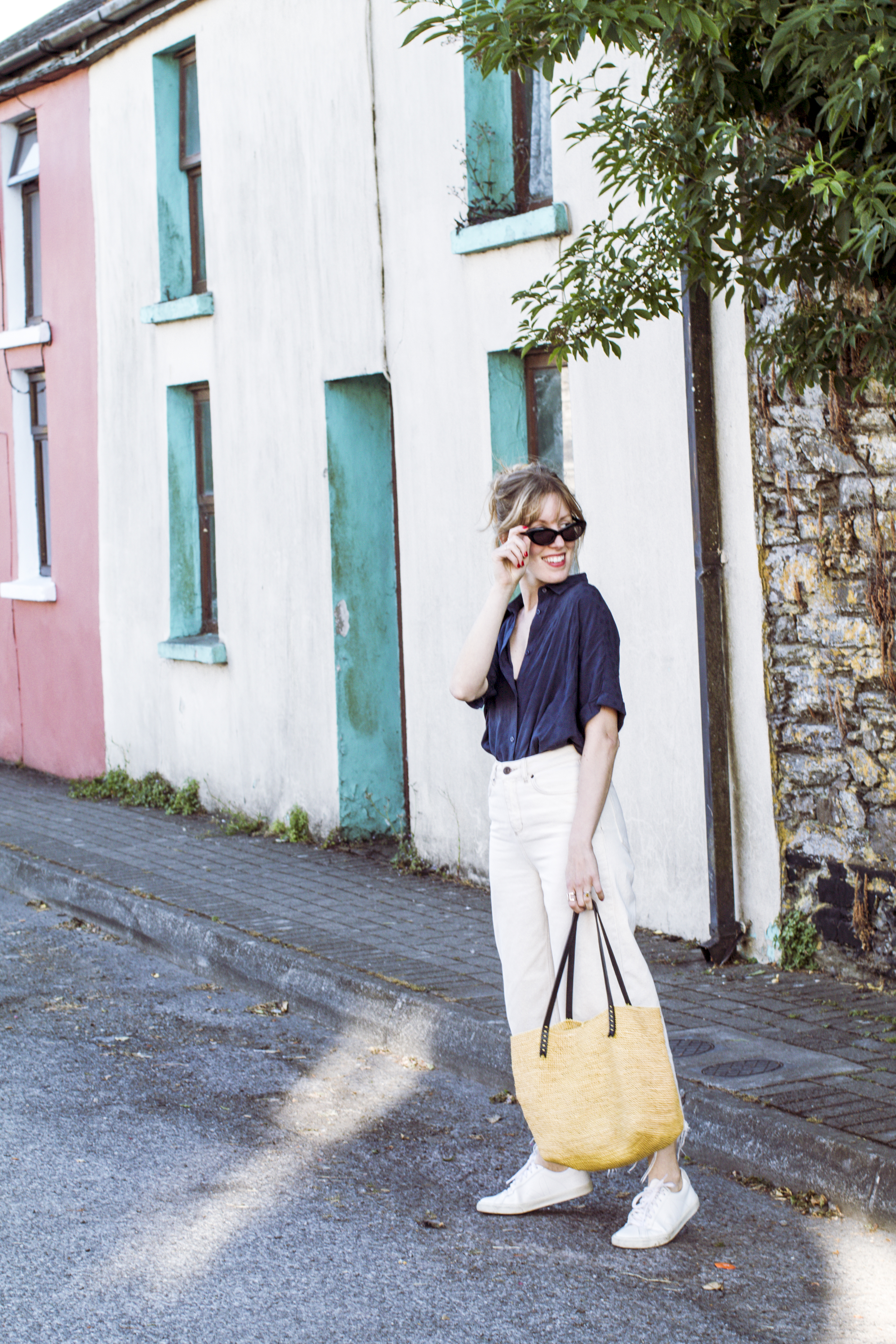
& Other Stories OVERSIZED SHIRT , EARRINGS & SUNGLASSES (c/o) // BDG JEANS // Veja SNEAKERS // Annabel Ingall TOTE (similar)
Maybe it’s because I’m hyperaware right now, but it seems like everyone is traveling to Ireland right now. I know a few people going this summer alone, not to mention overheard someone talking about an impending trip there on the day after my return. Ireland seems to be the perfect, easy getaway and not to mention, a relief from this heat wave we’ve been having on the East Coast.
I traveled to Ireland when I was twenty, so it was quite a different experience than this trip with my family this time. Back then, I did a tour around the south from Dublin, to Cork, to Killarney, to Galway and the Cliffs of Moher…and a lot of pub hopping (ah, to be twenty!).
This trip was more about exploring like a local. I’m fortunate that my sister married a lovely Irish man who grew up in a small village called Timoleague, which happens to be charmingly untouched by tourists (though I saw a crew of Asian men in suits entering the local pub!).
They bought and completely renovated the former doctor’s house of the town as their second home and rental when they’re not staying there. It’s the perfect location to feel like you’re really getting away, but in the center of it all to take day trips to all the landmarks and tourist towns. We’re all secretly hoping it doesn’t become discovered, so please keep this quaint village between us.
Here’s what we did on our trip and I highly recommend to travel like a local in Ireland:
- Fly into Dublin (Aer Lingus was amazing!) on a red eye and rent a car. Be warned, it’s tough to drive there being it’s on the other side of the road, on windy and narrow roads, and most cars are stick shift, so insurance is through the roof. You may want to consider getting an international credit card just for the trip that insures the rental so it’s cheaper.
- Book a hotel in Dublin for the night before (to catch up on sleep when you arrive) and one night (a day or so is all your need there in my opinion). We stayed at Bono’s hotel The Clarence , which was perfect with a baby because it had an alcove for the pack-n-play with a black out curtain and a balcony for us to hang out on once the baby went to bed. The hotel itself was mediocre, as it clearly hasn’t been updated since the 90’s, but you can’t beat the location in the center of Temple Bar.
- Explore Dublin : Walk around Temple Bar neighborhood, go to Dublin Castle, Guinness Storehouse, have a pint of Guinness, St. Patrick’s Cathedral, shopping on Grafton Street, breakfast and shopping at Avoca, grab provisions at Dollard & Co (and check out the American section of the market…eek!).
- Drive to Timoleague or anywhere in beautiful West Cork and make that your home base. This is where we stayed and didn’t want to leave.
- Take day trips. Stroll through Timoleague and tour the historic Abbey and maybe catch some local cattle along the way. Walk to Corkmacsherry and enjoy the views and cafe at Travara Lodge . Drive to the adorable village of Clonakilty and walk around. Hike through Point of The Wood and enjoy the scenery (best hike I’ve ever done). Drive to Mizen Head and see the last point where anyone leaving Europe would see before America. Enjoy the beaches and shopping at Schull on the same trip as Mizen. Spend a day at the magical fishing village of Kinsale . Take a longer day trip to see the spectacular views through the Ring of Kerry (their Pacific Coast Highway). Enjoy seeing all the cows, bulls, donkeys, sheep, etc. …and often in pastures with ocean views (lucky animals!).
- Eat and drink like a local. Some of the best baked goods can be found at gas stations because they’re delivered by locals daily. Enjoy a pint of Guinness or if it’s too much, you can ask for a glass (half pint). Eat at our favorite local pub, Monk’s Lane and maybe you’ll catch some live music in the evenings. Also you can’t leave without getting chips and curry somewhere.
- Bring back local foods as souvenirs. Our favorites are Cadbury Dairy Milk, Cadbury Roses, and Hobnobs/McVities Digestives
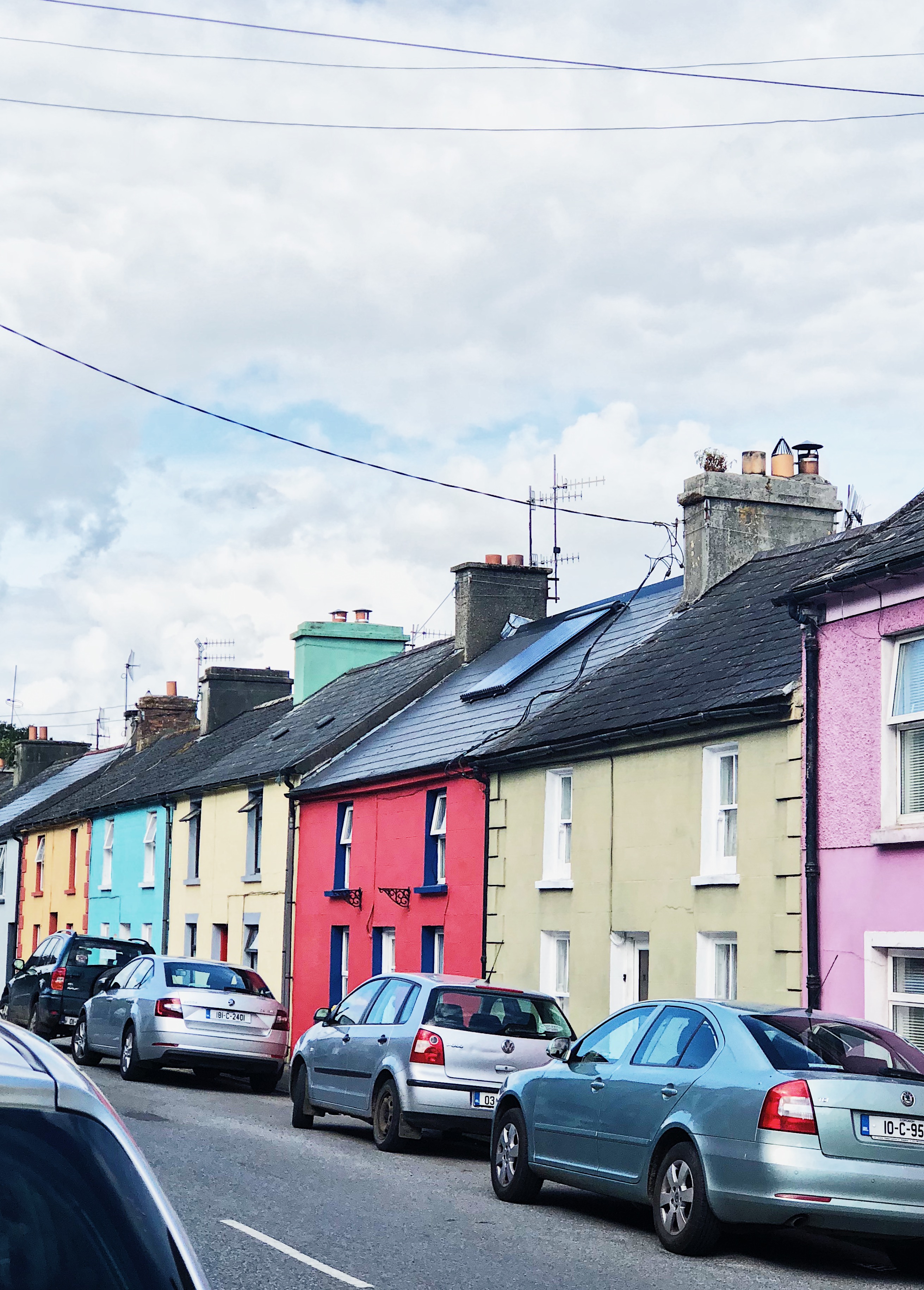
The village of Timoleague (most villages in West Cork seem to have the same colorful charm as well).
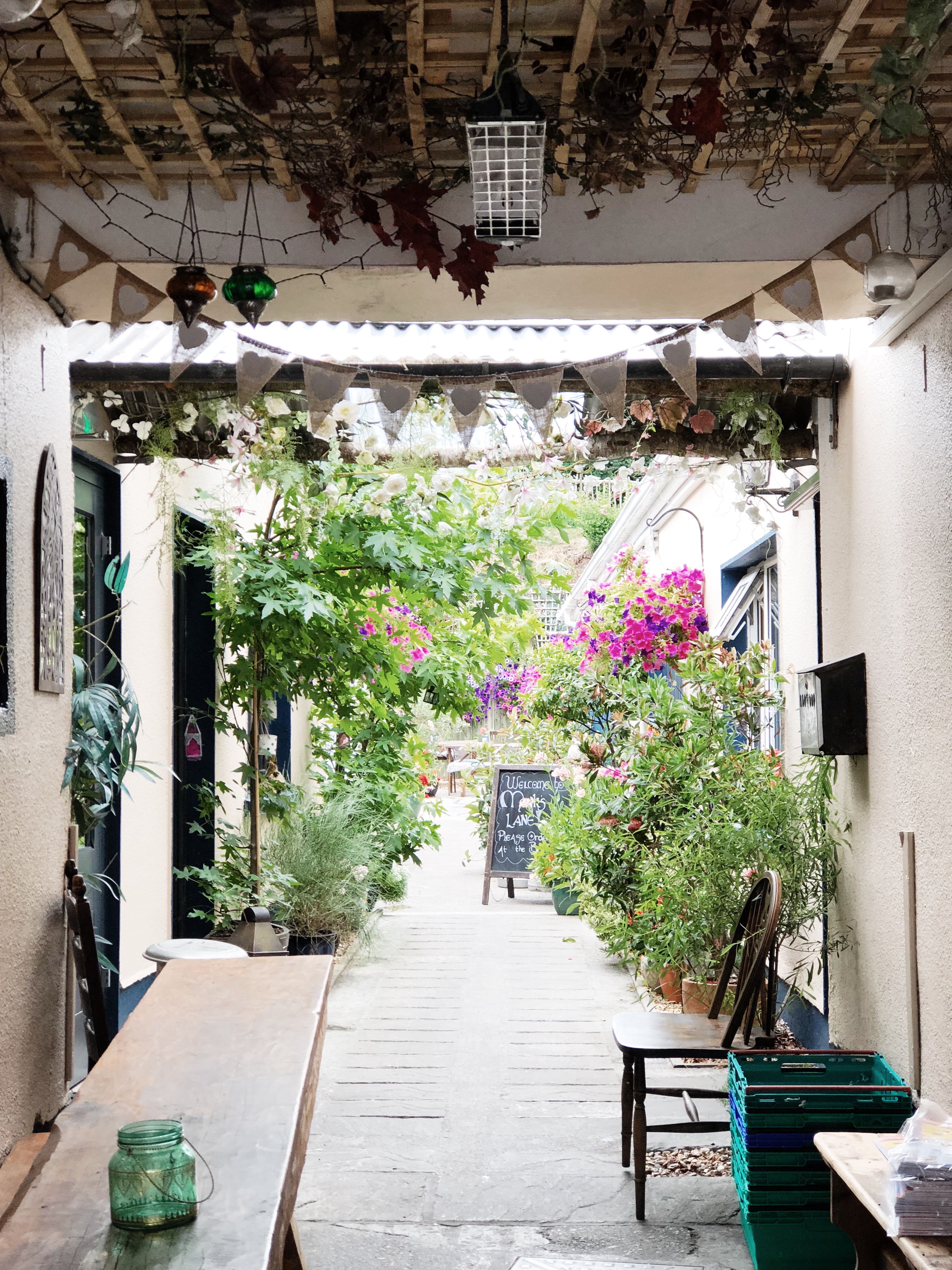
The hallway to the outside patio at our favorite pub, Monk’s Lane
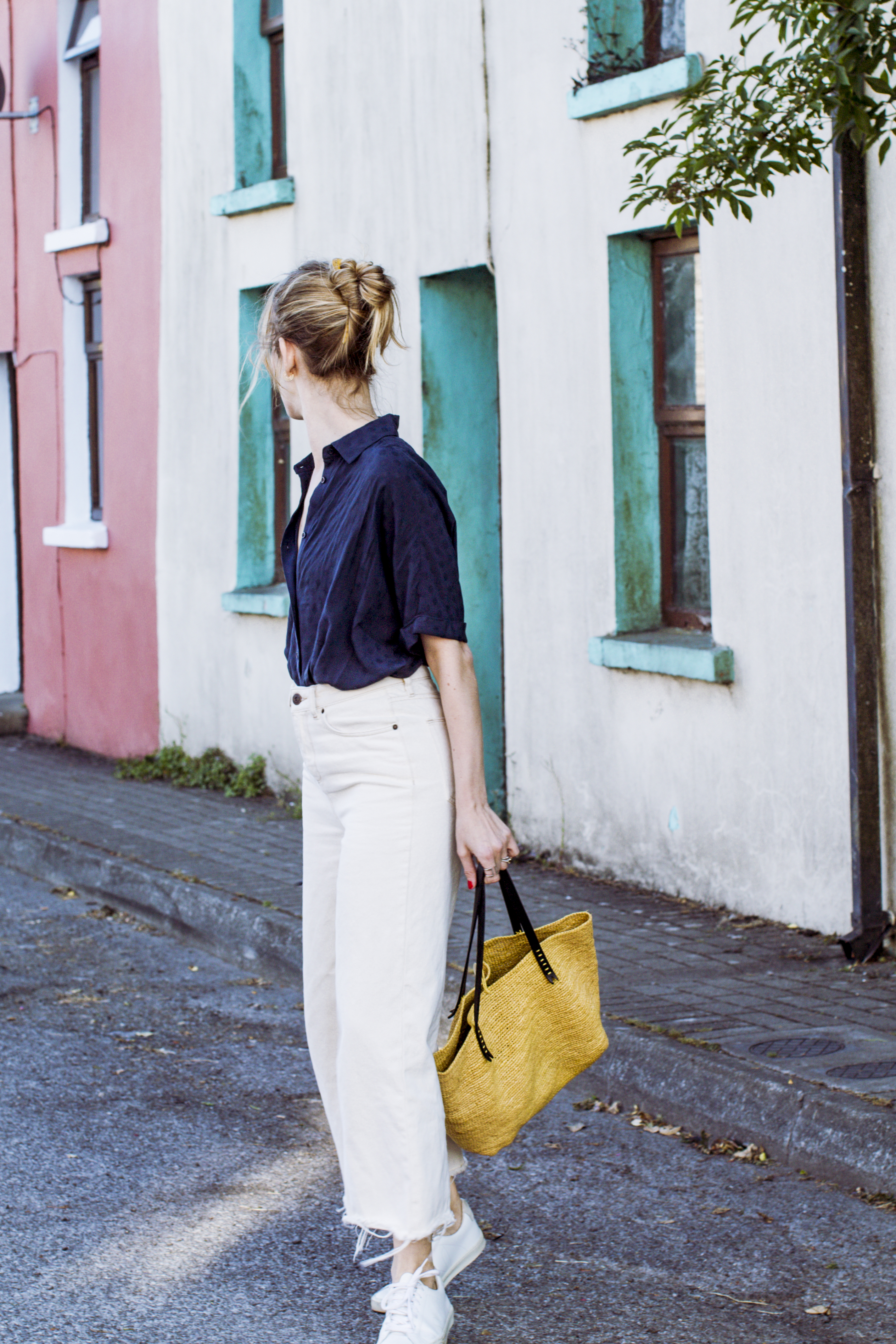
Everywhere you’ll see gorgeous landscaping and flowers that will blow your mind.

{SHOP MY TRAVEL LOOK}

The church in Timoleague
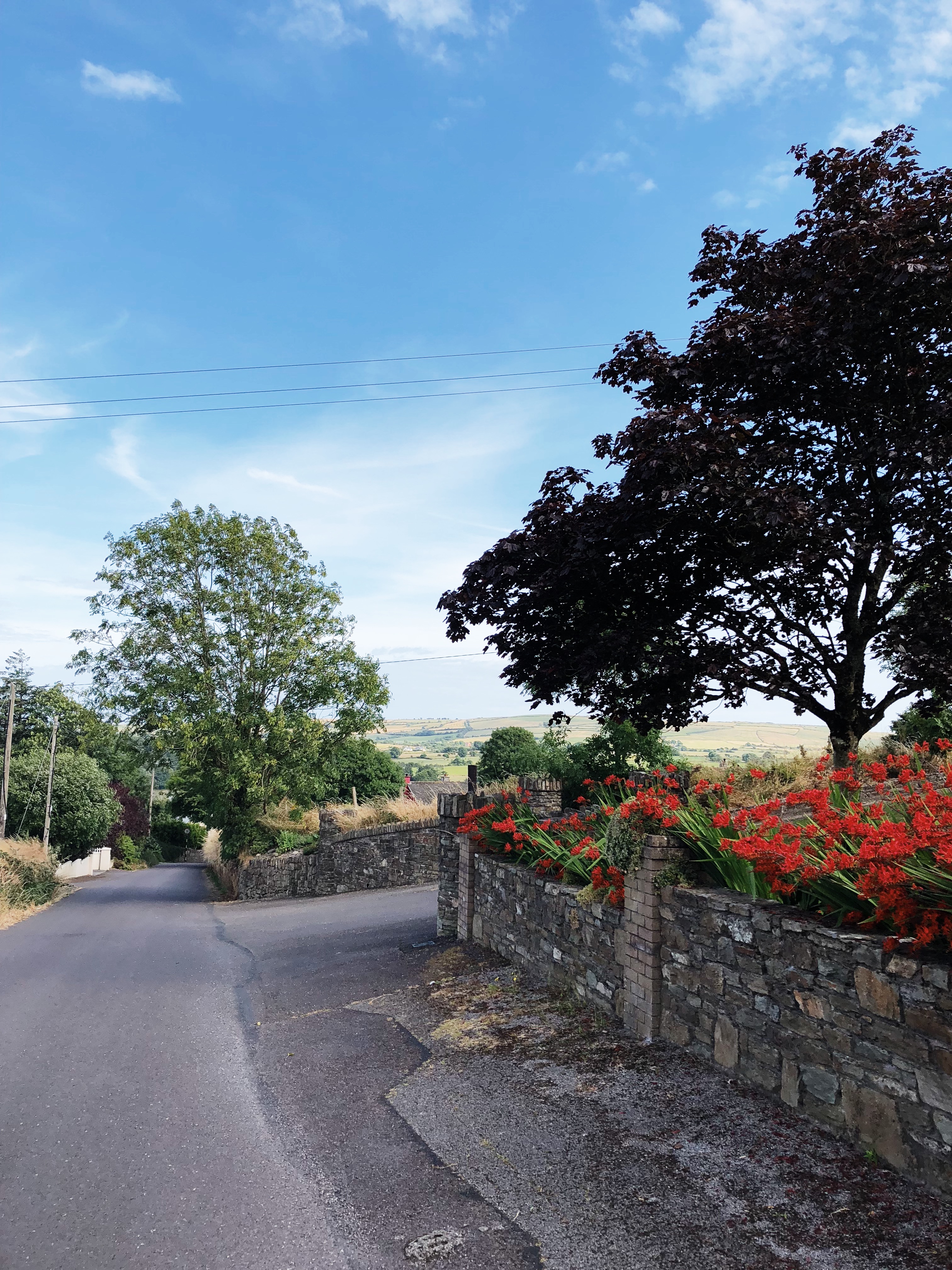
The road leading to Abbeyview House

The view of all of Timoleague from our walk to Corkmacsherry. We stayed in the last house on the left on the hill.
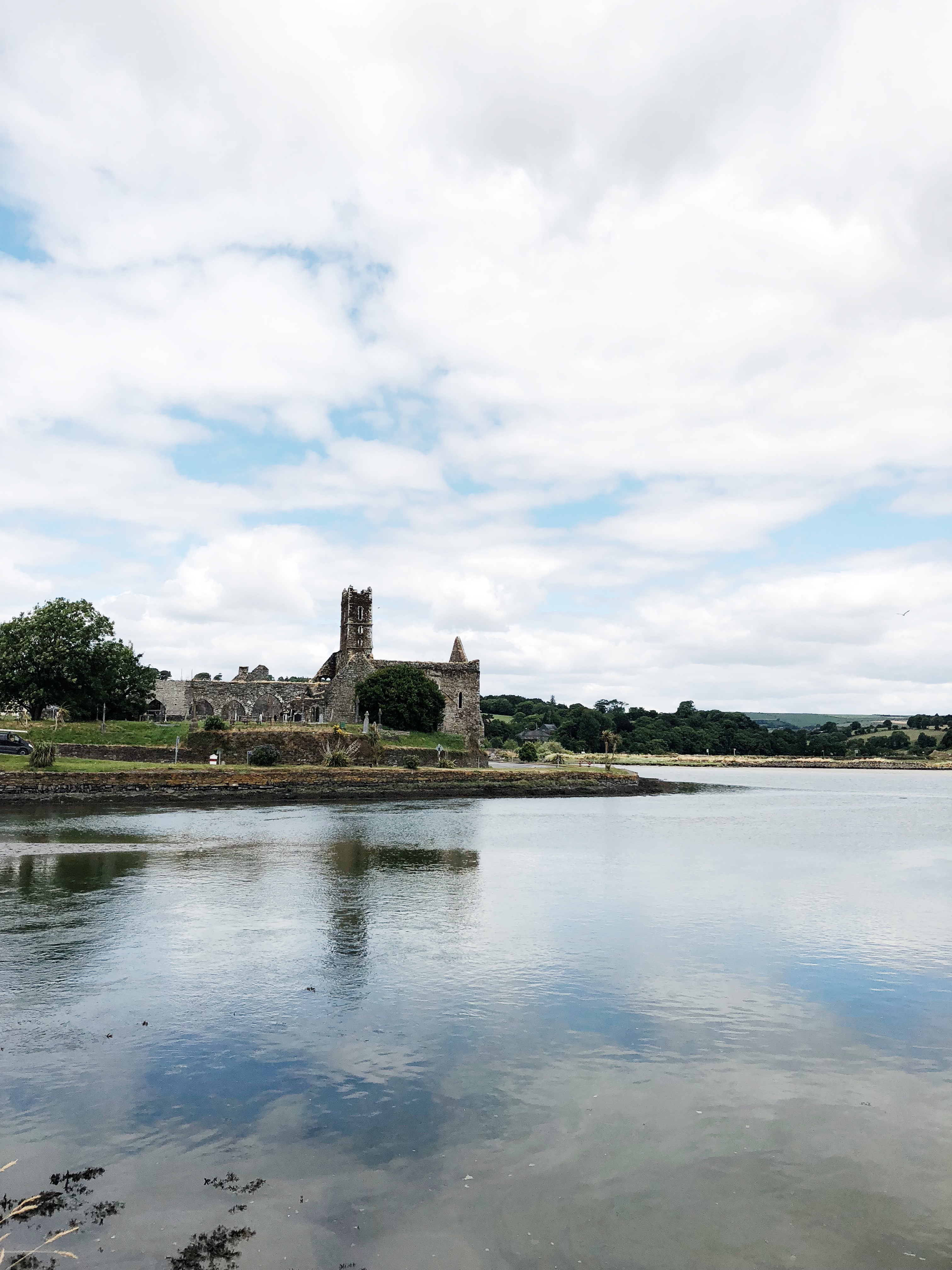
The view of Timoleague Abbey built in 1240 AD, with remarkable history
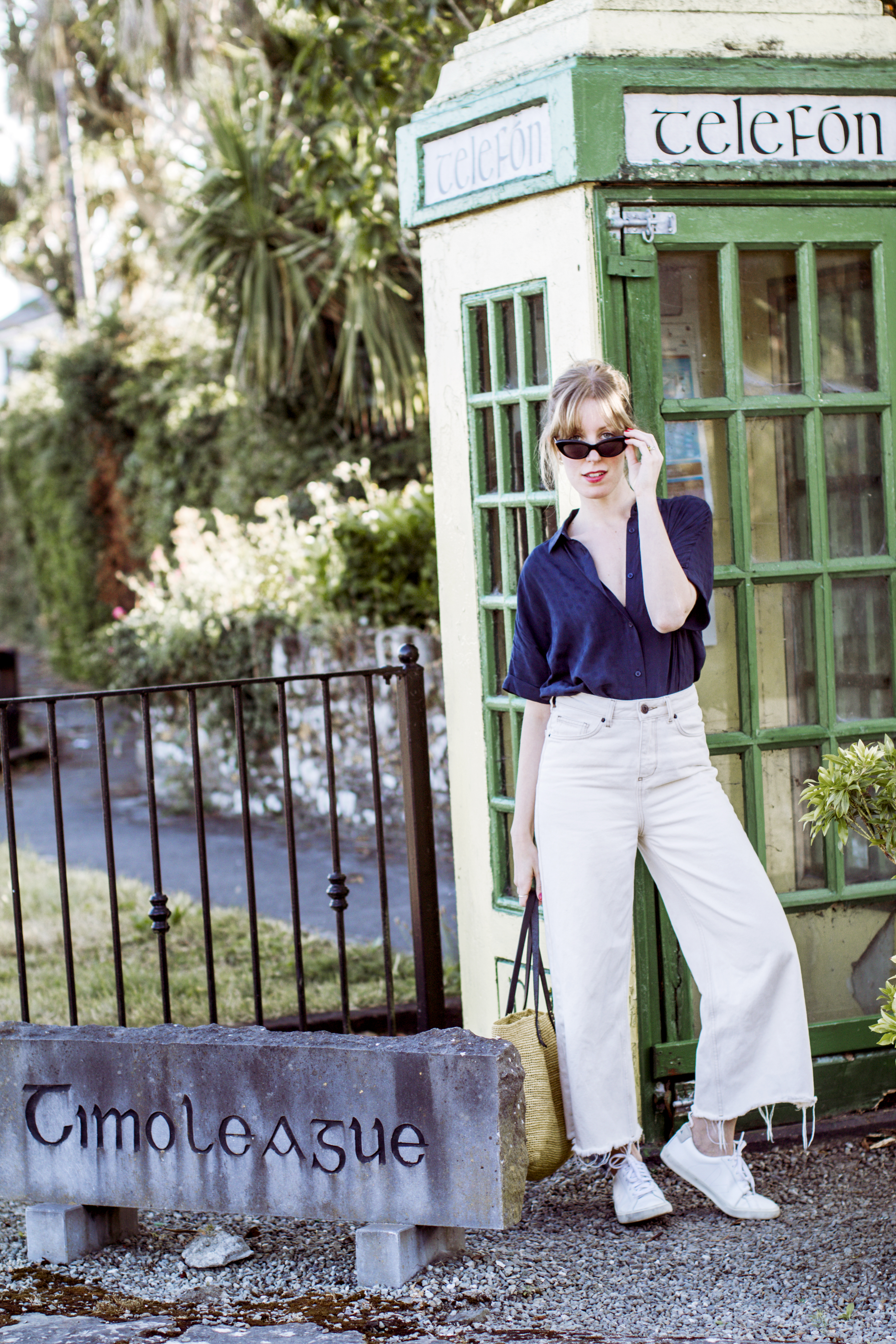
Don’t try calling here. The pay phone is no longer functioning but it’s pretty cute!
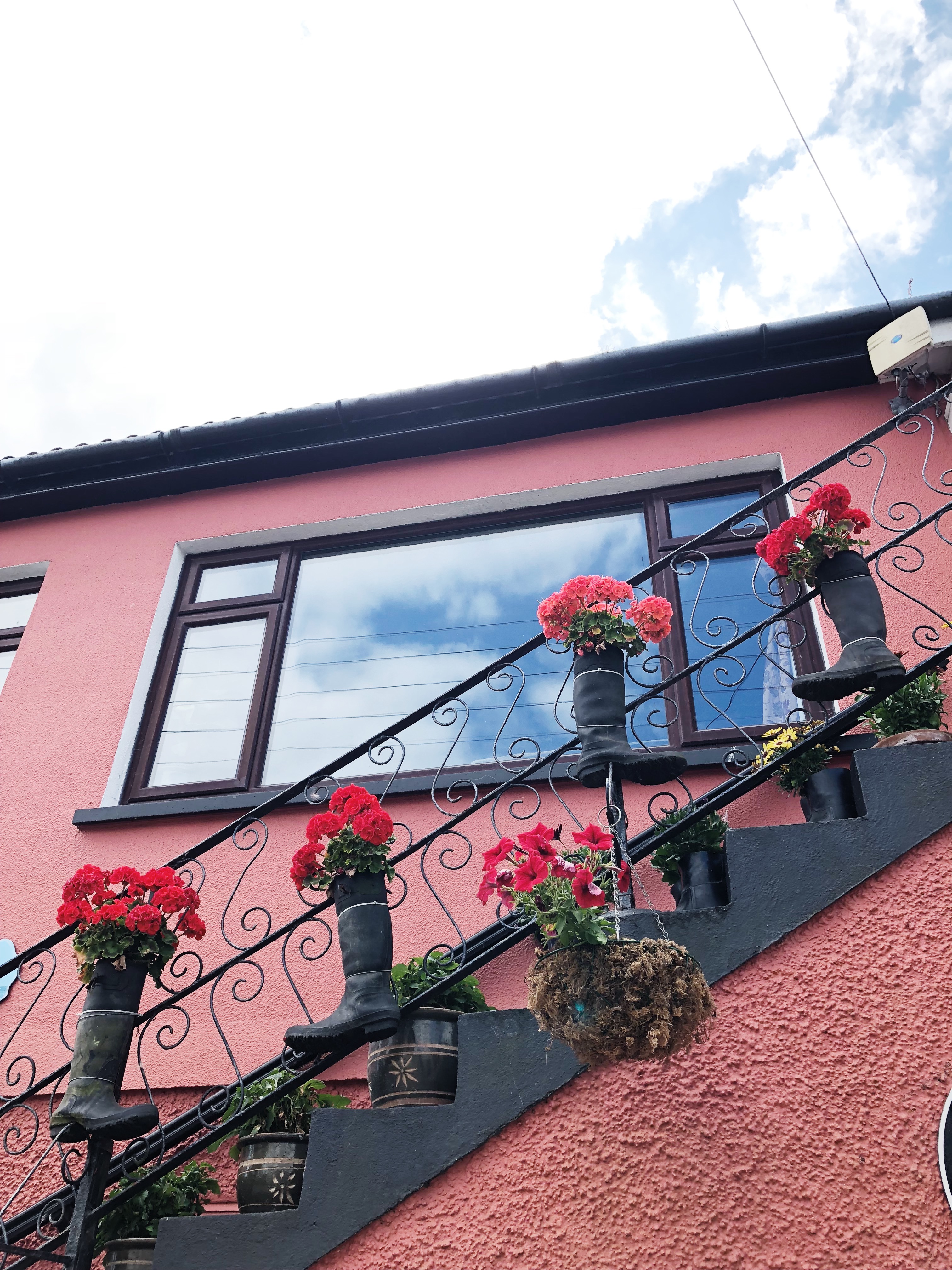
Everyone seems to use their old Wellies as flower pot decor, which is my kind of repurposing!
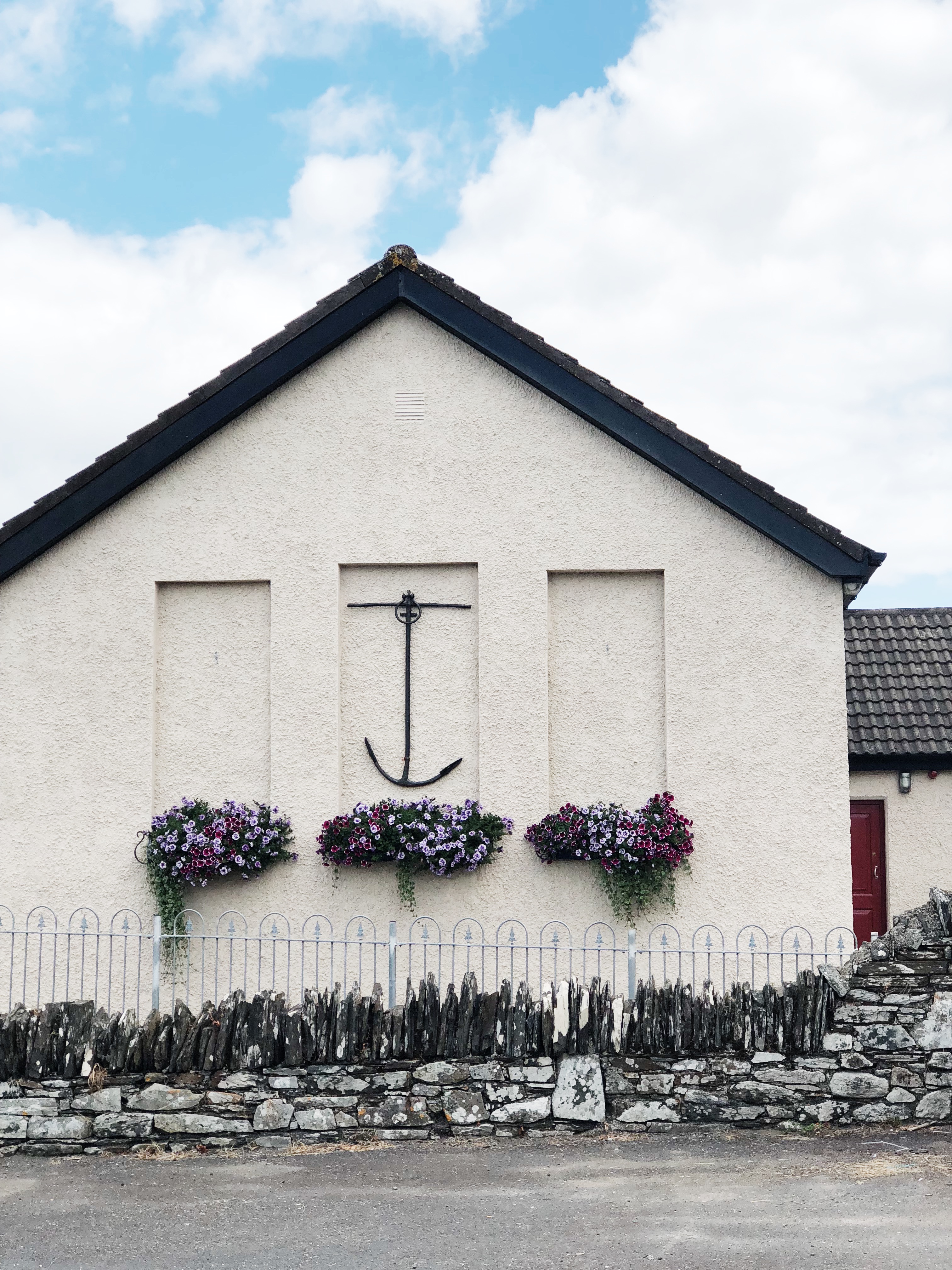
Spotted in Corkmacsherry, which by the way, has the best toddler friendly playground! If you’re traveling with a child, it seems every town as a clean and well kept playground so definitely ask a local where it is!
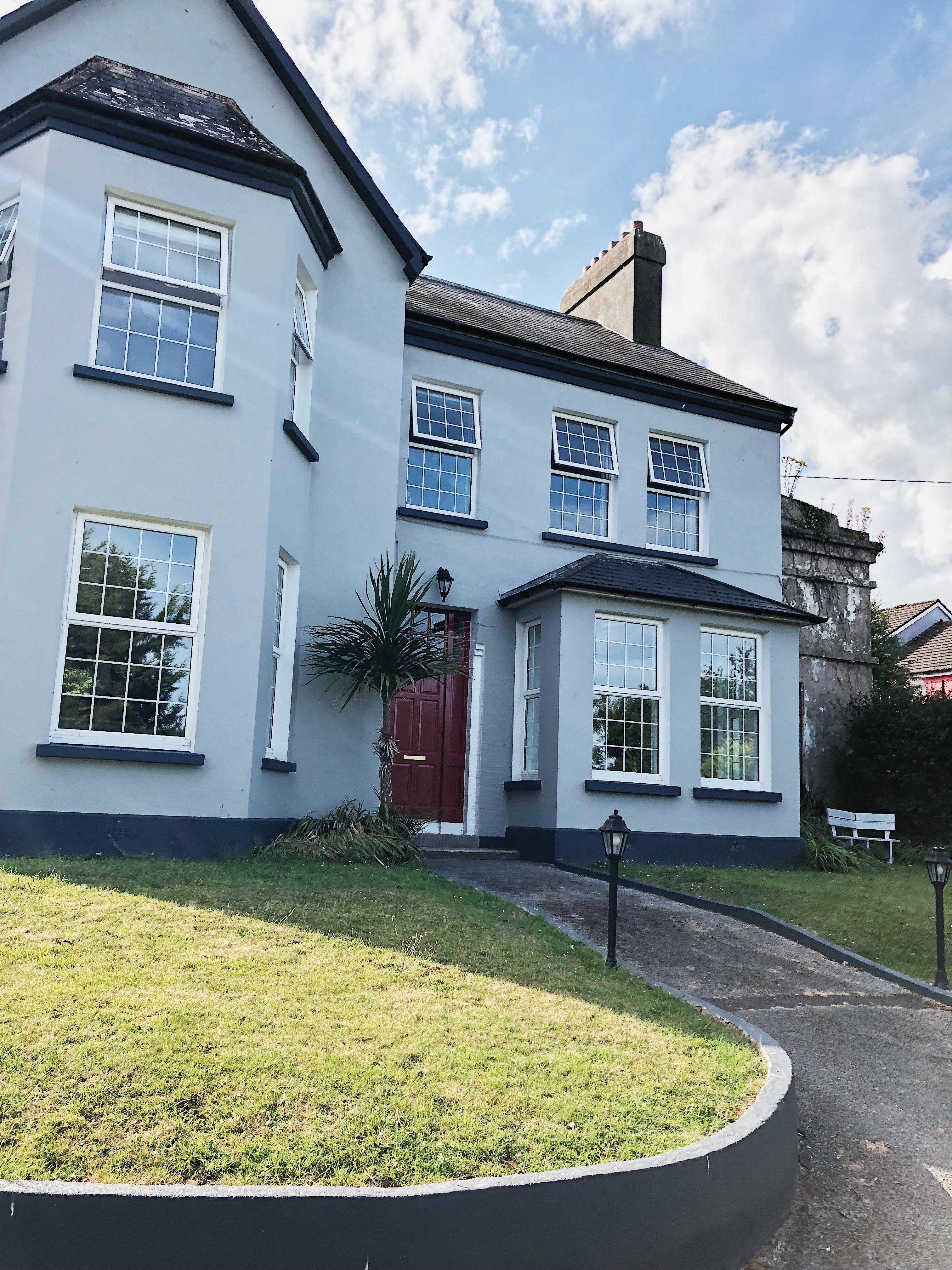
Our home away from home, Abbeyview House
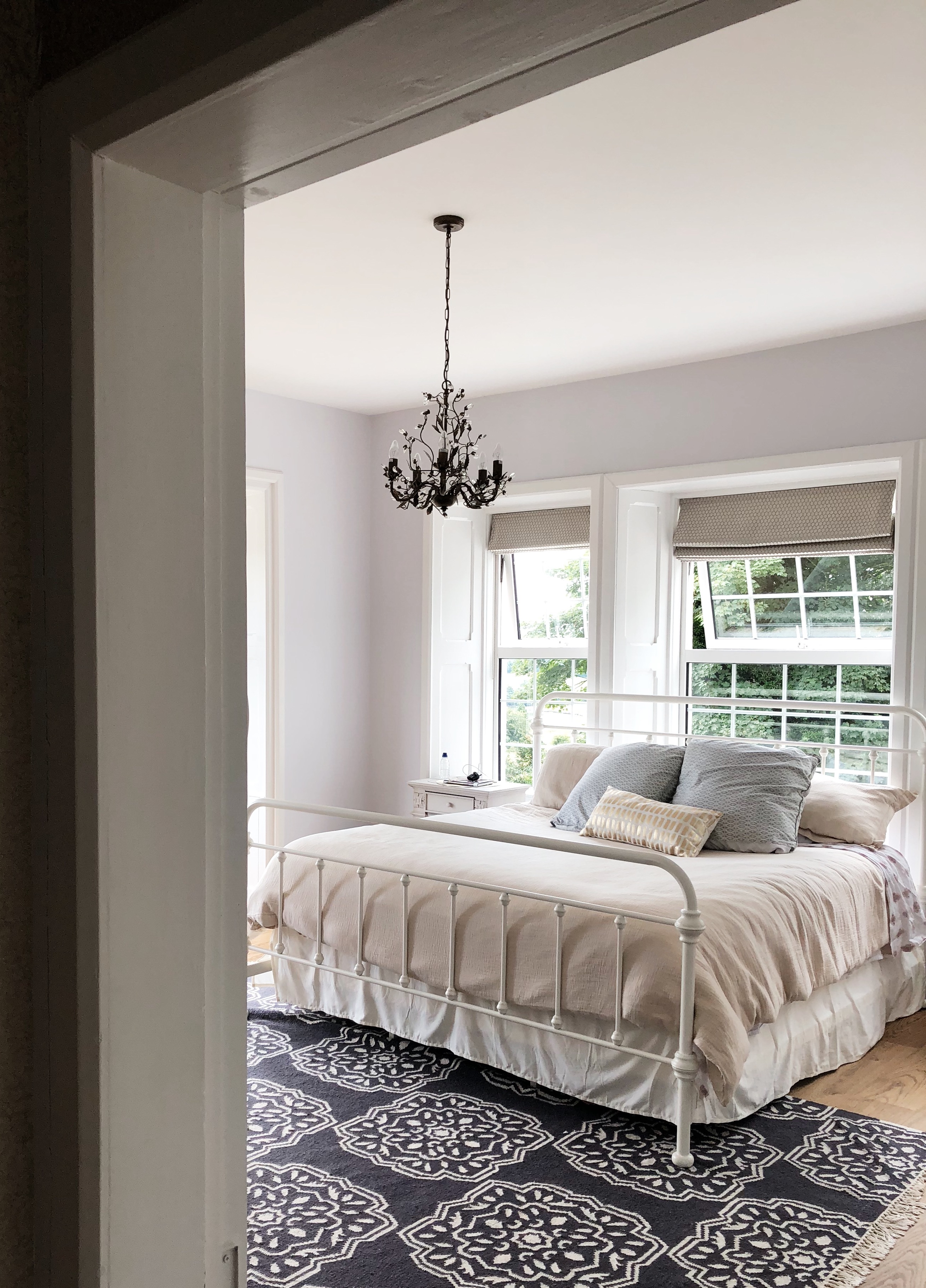
You too can enjoy staying in this gorgeous West Cork hideaway, also known as the Abbeyview House . See more and book here .
Share your love
4 thoughts on “travel like a local in ireland”.
Great review Liz! The pictures are beautiful. It sounds like you had a really good time. I’m going to bookmark this for when I plan my trip! ?
As always, you look fantastic! I gotta admit I steal some of your outfit ideas.
Pingback: The New York Stylist:Puff Sleeves and Corduroy For Fall
Pingback: The New York Stylist:2 Year Update + Toddler Favorites - The New York Stylist
Comments are closed.
Find What You Need | Press Enter to Search
Styling essentials, you need.
Subscribe to get the list of styling essentials I only give to my clients— right to your inbox.
Nomadic Matt's Travel Site
Travel Better, Cheaper, Longer
Ireland Travel Guide
Last Updated: April 1, 2024
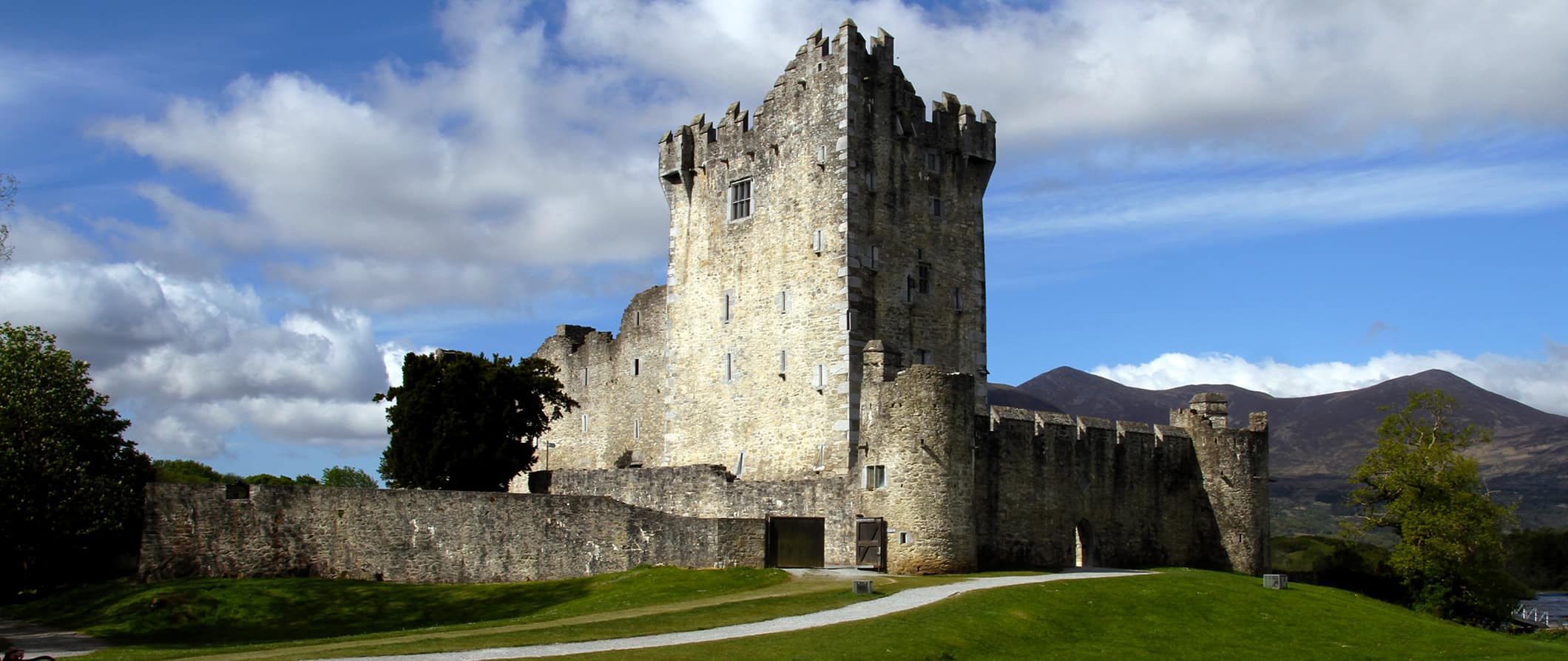
I love backpacking around Ireland for the rolling green hills, historic castles, beautiful seaside landscapes, and all the Guinness and Jameson you can drink. The Emerald Isle is an enchanting postcard-perfect destination with tons to see and do whether you’re in the Dublin for a long weekend or plan to spend several weeks backpacking across the country.
While millions of people visit Ireland each year, most of them stick to Dublin , see the main sights, drink a few pints, and head on their way.
But there is so much more to traveling here — especially if you have time to rent a car and get off the beaten path. Ireland is the perfect road trip country. Seriously. Drive around! And make plenty of stops along the way. You’ll find cool little towns and tons of ruins and castles, some of which are rumored to be haunted.
Anyone who has spent time in Ireland will agree that it’s a magical land full of wonder, history, nature and plenty of post-travel tales. No one ever leaves Ireland unhappy.
This Ireland travel guide can help you make the most out of your time on the Emerald Isle and ensure you have fun without breaking the bank.
Table of Contents
- Things to See and Do
- Typical Costs
- Suggested Budget
- Money-Saving Tips
- Where to Stay
- How to Get Around
- How to Stay Safe
- Best Places to Book Your Trip
- Related Blogs on Ireland
Click Here for City Guides
Top 5 things to see and do in ireland.

1. Have fun in Dublin
Dublin is synonymous with fun. The capital of the Republic of Ireland and its largest city, Dublin offers so much to explore . The city’s 18th century Georgian architecture is some of the best in Europe. Take a walk through history with a visit to Dublin Castle, be awe-struck by St. Patrick’s Cathedral’s medieval architecture, which was completed in 1260, tour Trinity College for a look inside one of Europe’s oldest and most prestigious educational institutions and while you’re there check out the iconic Book of Kells (an illuminated manuscript) from 800 CE. Literature lovers can stroll around the city on a self-guided literary tour. Fans of Ireland’s most famous export (Guinness) will find no shortage of pubs that claim to pour the city’s best pint but go directly to the source with a tour of the Guinness Storehouse (admission starts at 24 EUR). At night there’s bountiful live music in small pubs or larger clubs, one of the many ways to experience Irish“craic,” the nation’s word for that fun feeling you have with friends.
2. Admire the Cliffs of Moher
The Cliffs of Moher stretch for 8 kilometers (5 miles) along the Atlantic coast in County Clare. They offer some of the most incredible views in all of Ireland. On a clear day you can see as far as Aran Islands in one direction, and Galway Bay in the other. The cliff’s name comes from the Gaelic word Mothar which means “ruins of a fort” and O’Brien’s tower, which now sits atop the cliffs, was constructed using the original fort’s stone in 1835. The cliffs reach a height of 214 meters (702 feet) and are home to a wide variety of birds. If you visit in late spring, you’ll probably see a colony of colorful puffins. Save this activity for a sunny day because there isn’t much to see when the cliffs are shrouded in Ireland’s famous mist. Admission is 10 EUR. If you’re short on time, take a day tour (they usually have a few stops, including Galway). Coming from Galway, it’s about a 90-minute drive. From Dublin, it’s more than three hours by car or bus.
3. See the Giant’s Causeway
Cross the border into Northern Ireland to visit the famous Giant’s Causeway , a natural geological phenomenon composed of over 40,000 basalt pillars that look like a staircase for giants. They formed between 50 and 60 million years ago during the Paleocene Epoch due to intense volcanic activity in the area. The tallest of the columns are around 12 meters (39 feet) high and 28 meters (92 feet) thick. The name is also said to have come from an Irish legend where a giant named Finn McCool created a path across the Irish Sea face down his arch enemy, the Scottish giant Benandonner. The pillars are a UNESCO World Heritage Site and named one of the top four natural wonders in The United Kingdom. It’s a protected nature reserve, however you can walk across the rocks using one of the four marked trails. Maps are available at the visitor center. Admission is free, but if you arrive by car you need to pay for parking, though it includes a guided tour.
4. Drive along the Ring of Kerry
This is one of the most well-trodden tourist trails in Ireland for a reason. Stretching almost 200 kilometers (125 miles), the Ring of Kerry is a scenic route that loops around the Iveragh Peninsula on the west coast of Ireland. It’s the ultimate Irish road trip along winding coastal roads, lush green pastures, and rolling hills. You’ll pass by lakes, small mountains, historical forts, and an ancient druid stone circle. Stop for a few of the highlights along the route. Ross Castle, built in the 15th century is open to guided tours. Lough Leane consists of a series of small lakes surrounded by dense forest and ancient castle ruins scattered in the area. You could spend the whole day in Killarney National Park with its lakes, walking trails and waterfalls. Staigue stone fort is a circular stone ruin likely built in the Iron Age. Driving the entire route takes 3.5 to 4 hours nonstop, but plan for an all-day adventure with stops. If you don’t have a vehicle you can take a day tour from Killarney . And if you want to challenge yourself, trek the 215-kilometer (135-mile) Kerry Way on foot!
5. Wander Galway
Other things to see and do in ireland, 1. spend time in cork.
Cork is a buzzing city nestled on Ireland’s southern coast. Originally a maritime hub, Cork is now a cosmopolitan university city filled with cheap eats and a lively nightlife. Head to the English Market in the morning for baked goods or fresh produce – it’s one of the oldest covered markets in Europe. Joind the hundreds of thousands of people that come here each year to kiss the Blarney Stone for good luck. There’s plenty of opportunity to hike around Gougane Barra, and to enjoy the coastal landscape around Mizen Head where you’ll find a suspension bridge with views of towering cliffs and the Atlantic. Surfing and whale watching are also popular here as minke whales, fin whales, and humpback whales are commonly seen along the coast (expect to pay around 55 EUR for a whale watching tour).
2. Party on St. Patrick’s Day
St. Patrick is Ireland’s patron saint. As the legend goes, he drove all the snakes out of the country. Whether you believe the legend or not, this is the biggest party of the year in which everyone is Irish. The biggest parade takes place in Dublin. It’s one of the biggest parties in the world so be sure to book your stay in advance as everything sells out quickly!
3. Kiss the Blarney Stone
Blarney Castle sits just outside Cork. Built in the 15th century, visitors flock here to see the Stone, which is made of Carboniferous limestone and is built into the castle itself. The stone was set in 1446 and it is said to bestow eloquence on all those who kiss it (“blarney” has come to mean “flattering speech”). Expect a long line during summer months or other peak travel times. Admission is 18 EUR (16 EUR if you buy your ticket online).
4. See historic castles
Ireland is steeped in history and the entire country is covered in castles (there are some 30,000 castles and castle ruins here). For fans of ruins, don’t miss the crumbling charm of Dunluce Castle or the majestic half-standing Rock of Cashel with soaring archways. The impeccably preserved Cahir Castle in Tipperary is also one of the largest. If it’s within your budget, attend a medieval banquet at the Bunratty Castle in Clare or book a room at the beautifully restored Ashford Castle in County Mayo. If you’re just on a quick trip to Dublin, take the 30-minute train outside the city to Malahide Castle. If you plan on visiting a lot of castles, get the Heritage Card. It’s 40 EUR and provides free entry into tons of Ireland’s castles and will save you a ton.
5. Hike in Connemara
This national park in County Galway covers more than 30 square kilometers (12 square miles), offering scenic views and great hiking. Most people come here for hiking and forest bike riding, though there are a few castles within the park as well as an old mining area and a heritage and history center. There are also tons of wildlife to spot, such as rabbits, foxes, stoats, hawks, falcons, and herds of Connemara ponies. There are several trails that range from short loops on flat land, to more strenuous mixed-terrain paths that offer elevated views. Admission is free and day tours are available . There are no campsites, but wild camping is allowed – just come prepared with all the necessary gear.
6. Wander the John F. Kennedy Arboretum
Located in County Wexford 30 minutes west of Waterford, this garden is home to over 4,500 species of trees and shrubs. There are several tea rooms, a visitors’ center, and a picnic area here too. The arboretum gets its name from the fact that JFK’s great-grandfather was born nearby, and the President visited in 1963. The arboretum opened five years later in his honor, paid for by donations from Irish Americans. Admission is free.
7. Explore the Aran Islands
Located in Galway Bay, only 1,200 people call these islands home. Here, Irish is the primary language (though many also speak English). You can get around by bus, bike, or carriage as you see the various heritage sights, ruins, castles, and scenic landscapes. Tobar Einne and O’Brien’s Castle are two of the most popular attractions. On Inis More (Inishmore) you can visit Dun Aengus, a Bronze Age and Iron Age fort hugging the coast, and the Seven Churches ruins featuring a large complex of partially-preserved structures and graveyards with traditional Irish Cross stones. Inis Mor is the largest of the islands and the most accessible. You can take a bus from Galway and hop on the ferry from Rossaveal (30 EUR).
8. Go back in time at Ulster Museum
Head into Northern Ireland for a day trip and visit the Ulster Museum. It has a vast and diverse collection of all kinds of artifacts and artwork, ranging from rare paintings, archeology and local history to wildlife and dinosaurs to relics from the Spanish Armada and Egyptian mummies. The museum is located within a large botanical garden. It’s the biggest museum in Northern Ireland. Admission is free. You can reach Belfast from Dublin in less than two hours by car.
9. See Newgrange
Located 45 minutes north of Dublin by car, Newgrange is a prehistoric burial mound that dates back over 5,200 years (which makes it older than both Stonehenge and the Great Pyramids). Human remains, as well as other artifacts, were found in the massive tomb, which is composed of a ring of stone topped by earth. Inside are several burial chambers and passageways. Every year on the Winter Solstice, a beam of light streams down the perfectly aligned entrance passage to illuminate the interior chamber. Admission is 10 EUR.
10. Visit Killarney
Killarney is one of Ireland’s most popular tourist destinations thanks to its undeniable medieval charm. Located in the southwest of the country, you can visit Muckross Abbey (a 15th-century Franciscan friary on rolling green hills inside Killarney National Park), Ross Castle (which also dates to the 15th century), or wander around the town itself, which looks like a quaint village with small shops and colorful buildings. Some of the other best things to do in Killarney include renting a bike to cycle around Killarney National Park or relaxing at one of the nearby lakes. This is also the traditional starting point for exploring the Ring of Kerry.
11. Learn about (and sample some) whiskey
If you’re a whiskey fan, take a tour of the Jameson Distillery in Cork and see how Irish whiskey is made. Jameson is one of the oldest whiskey companies in Ireland and is the best-selling Irish whiskey in the world. On a tour, you’ll visit the main buildings and learn how their whiskey is made, what sets Irish whiskey apart from other types, and how the company got started as a small family distillery. There are several different tours, but the Jameson Distillery Experience tour is the best value at 23 EUR. It’s 75-minutes and includes a whiskey sample
For more information on specific cities in Ireland, check out these guides:
- Cork Travel Guide
- Dublin Travel Guide
- Galway Travel Guide
Ireland Travel Costs
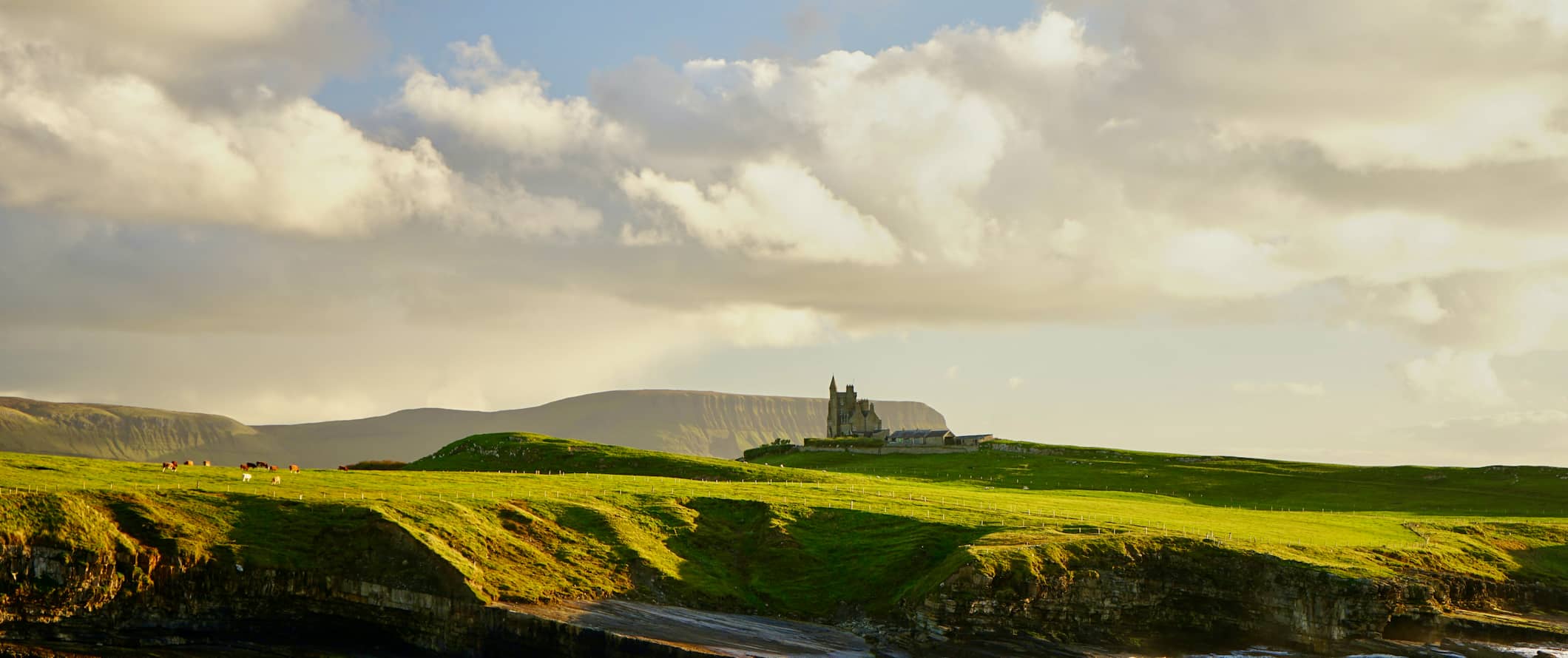
Accommodation – There’s no shortage of choices on where to stay in Ireland. Hostels are common across the country, especially in cities, and you’ll find privately run cozy hostels and larger chains. For those biking or backpacking across the country, you’re in luck. There are a number of hostels and budget hotels in rural areas that see a lot of active travelers on foot or bike. There’s also a wide variety of mid-price chains across Ireland if you’d like to upgrade for a few nights. Summer is peak season, so book ahead.
Prices average 28-40 EUR per night for a hostel dorm room with 4-8 beds. You can find private rooms that sleep two ranging from 60-100 EUR. Free Wi-Fi is standard and most hostels also include self-catering facilities.
For those traveling with a tent, a basic plot for two people without electricity can be found for around 12-15 EUR per night.
Budget hotels average 90-130 EUR. Free Wi-Fi is standard and some also include an Irish breakfast (toast, eggs, sausage, and beans).
Airbnb is available all around the country with private rooms starting at 40 EUR per night. Full apartments with a kitchen average of 100 EUR per night. Expect to pay double (or more) if you don’t book in advance.
Food – Ireland is very much a “meat and potatoes” country. Potatoes have been a common staple since the 18th century, along with seafood (it’s an island after all!). Cod, salmon, and oysters are some of the most popular seafood options, with other staple dishes being shepherd’s pie, black pudding, bacon and cabbage, fish and chips, and meat stews. You’ll find plenty of budget eats and street food, especially in larger urban areas, including takeaway fish and chips and a wide range of food trucks in Dublin. Vegan meals are bit harder to find. There are a few choices for budget to moderately-priced restaurants that offer vegan and vegetarian fare in Dublin, Cork, and Galway. There are also more modern Irish restaurants popping up, especially in Dublin, but expect to pay up.
A traditional meal costs around 15 EUR. For a multi-course meal with a drink, expect to pay at least 30 EUR. Fast food (think McDonald’s) starts at 9 EUR for a combo meal.
Pizza costs 7-10 EUR for a medium while Chinese food costs around 9-12 EUR for a main dish. Fish and chips can be found for as little as 6 EUR.
Beer is around 5 EUR while a latte/cappuccino is 3.50 EUR. Bottled water is 1.50 EUR.
If you want to cook your meals, expect to pay 40-60 EUR per week for groceries that include basic staples like pasta, rice, produce, and some meat.
Backpacking Ireland Suggested Budgets
On a backpacking budget of 65 EUR per day, you can stay in a hostel dorm, cook all your meals, limit your drinking, take public transportation, and do free and cheap activities like free walking tours or visiting castles. If you plan on drinking, add 5-15 EUR per day to your budget.
On a mid-range budget of 140 EUR per day, you can stay in a private hostel room or Airbnb, eat out for most meals at cheap fast food places, enjoy a couple of drinks, take the occasional taxi, and do more paid activities like visiting the Cliffs of Moher.
On a “luxury” budget of at least 240 EUR per day, you can stay in a hotel, eat out anywhere you want, drink more, rent a car for day trips, and do as many tours and excursions as you want. This is just the ground floor for luxury though. The sky is the limit!
You can use the chart below to get some idea of how much you need to budget daily, depending on your travel style. Keep in mind these are daily averages — some days you’ll spend more, some days you’ll spend less (you might spend less every day). We just want to give you a general idea of how to make your budget. Prices are in EUR.
Ireland Travel Guide: Money-Saving Tips
It’s easy to break the bank in Ireland as all those pub visits can add up fast. To help you save without sacrificing your trip, here are some money-saving tips for Ireland:
- Ask for student discounts – A valid student ID can get you discounts of up to 50% on many attractions, museums, and buses throughout the country. If you have a valid student ID, always ask for discounts. Take note, these discounts most often apply to anyone under 26 with a student ID.
- Drink less – Ireland’s strong pub culture can hit your wallet hard. Temper the cost by visiting happy hours, drinking at home, or skipping drinks altogether.
- Eat the pub food – Eat at the pubs for hearty local Irish food that won’t destroy your wallet. It’s not healthy, but it’s affordable.
- Get an OPW Heritage Card – If you love to tour heritage sites, pick up this card. It provides free access to most of the castles throughout the country. The card is 40 EUR.
- Stay with a local – Couchsurfing connects you with locals who can give you a free place and show you around their city. You not only get to save money but you make a new friend in the process!
- Eat early – Many restaurants have budget dinner options if you eat early (usually before 6pm). You won’t have as much variety since it’s a set menu, but it will be much cheaper!
- Cook your meals – Staying in a hostel will help you make new travel buddies, and they’ll likely have a kitchen. The biggest grocery chain is Tesco, which has large super stores and smaller city shops for basics. Don’t snooze on Aldi or Lidl. These discount grocers carry everything you’d need for a meal, and have aisles with deeply-discounted merch.
- Take free walking tour – Some of the bigger cities in Ireland (like Dublin and Galway) have free walking tours available. They’re the best way to see the main highlights on a budget. Just remember to tip your guide at the end!
- Bring a water bottle – The tap water here is safe to drink so bring a reusable water bottle to save money and reduce your plastic use. LifeStraw is my go-to brand as their bottles have built-in filters to ensure your water is always clean and safe.
Where to Stay in Ireland
Ireland has plenty of fun, social hostels. Here are my suggested places to stay if you’re on a budget:
- Generator Hostel (Dublin)
- Jacobs Inn (Dublin)
- Galway City Hostel (Galway)
- The Nest Boutique Hostel (Galway)
- Sheilas Cork Hostel (Cork)
- An Oige Youth Hostel (Killarney)
- The Hideout Hostel (Dingle)
How to Get Around Ireland
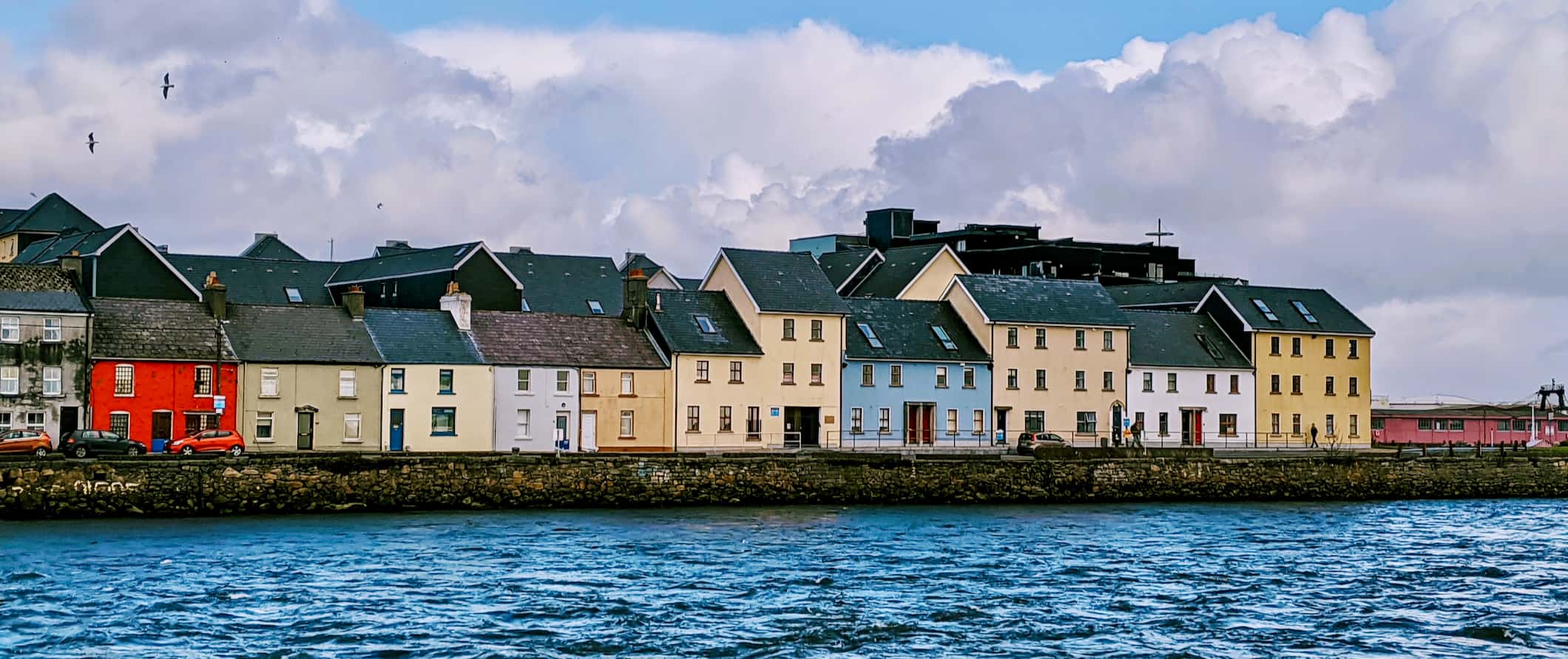
Public transportation – Public transportation in Ireland is clean, safe, and reliable. Bus trips around Dublin cost about 3 EUR while Galway tickets are 2.20 EUR and tickets in Belfast are 1.60 GBP if you head into Northern Ireland.
With a LEAP card (a card you can top up to use on the country’s public transportation), you can use all public transportation options for reduced prices (up to 31% off compared to cash tickets). You can even use it for DublinBikes self-service bicycle rentals.
A day pass on public transportation costs 8-10 EUR.
Bus – Ireland is a small island so you won’t find too many routes that are longer than a few hours. That means that prices are pretty reasonable. The 2.5-hour trip from Dublin to Belfast in Northern Ireland costs around 20 EUR. A bus from Dublin to Galway takes about 2.5 hours and costs between 12-25 EUR.
Bus Éireann is the main coach service, while Translink serves the North (and includes Ulsterbus and Goldline). You can search their website for the best deals and for route schedules. If you book early, you’ll get the lowest ticket prices.
There’s a really handy journey planning website that can help you plan your route (but you can’t buy tickets there).
Train – Irish Rail is the main train service provider in Ireland. While the train is more expensive than the bus, it’s still quite affordable. Cork to Dublin takes around 2.5 hours and costs 20-30 EUR while Galway to Dublin costs 17-25 EUR and takes about the same amount of time.
Bus & train passes – Ireland has several rail and bus passes that might make sense for you depending on your itinerary and budget:
- Irish Explorer – Five days of unlimited Irish Rail travel within 15 consecutive days for 128 EUR.
- Sunday Day Tracker – This deal is for one day of unlimited travel (Sundays only) on Translink buses and trains in the North. It costs 3.50 EUR
- Trekker Four Day – Unlimited travel on Irish Rail within a four-day period for 88 EUR.
Car Rental – Renting a car in Ireland is affordable, with prices starting around 25 EUR per day for a multi-day rental. Renting a car is the best way to get around the country too. Renters need to be at least 21 years old. Just keep in mind that most rentals are manuals and that they drive on the left.
When to Go to Ireland
Ireland’s temperate climate makes it a good destination to visit year-round, keeping in mind that you’re guaranteed to encounter rain no matter when you visit.
The summer months (June-August) are the warmest and the sunniest so this is when the country is at its liveliest. Keep in mind that this is peak season so you’ll compete for accommodation in the larger cities. And lines will be longer for attractions like museums or castles. Prices are a little inflated too. Average temperatures hover between 13-20°C (56-68°F) but can climb to 25°C (77°F) or more. Be warned, if you go for a swim at one of the beaches, the water will be cold. Ocean temperatures won’t be over 18°C (65°F) on a warm day! They’ll likely be a little cooler.
Winters can be drizzly with short daylight hours, but temperatures rarely fall below freezing. Dress warmly and be prepared for lots of indoor activities if you visit during this time. If you visit around Christmas, the festive lights and Christmas markets make for a warmer atmosphere. The pubs will be more celebratory, too.
Saint Patrick’s Day in March is huge all around the country. During this time, hostels and hotels fill up quickly, and prices spike. Temperatures are still mild and Ireland is just as beautiful as ever but you’ll need to book your accommodation in advance.
Overall, the shoulder seasons (March-May and September-October) are my favorite times to visit. Aside from St. Patrick’s Day, you’ll find prices to be a little lower and the country to be less busy. The weather is decent enough for exploring too. Just bring an umbrella! September is an especially fun time to see Ireland. The weather is still warm-ish but the larger crowds, especially those traveling with children, have cleared out. You might feel like you’re the only tourist at a castle or on a hike.
How to Stay Safe in Ireland
Ireland is very safe and the risk of experiencing violent crime here is low. That said, scams and pick-pocketing can occur in high-traffic areas, especially around tourist attractions like Temple Bar in Dublin. Always keep your valuables secure and out of reach just to be safe.
If you rent a car, don’t leave valuables inside the vehicle overnight. Break-ins are rare but it’s always better to be safe than sorry.
Be alert when driving, especially on twisty country roads or roundabouts (traffic circles). Most roads are paved and in good condition, but if you are used to driving on the other side (they drive on the left in Ireland) a steep curve may surprise you.
Solo female travelers should generally feel safe here, however, the standard precautions apply (never leave your drink unattended at the bar, don’t walk home alone intoxicated, or venture into unknown areas after dark, etc.). For tips, use one of the many solo female travel blogs on the web as they’ll be able to provide better advice than I can.
When camping, understand designated sites from wild spots. Wild camping is generally accepted, but keep in mind that much of the remote land you see is probably private property. Camp sites are well kept, but when opting for parks or remote areas, you may not have cell service.
Scams here are rare, but if you’re worried about getting ripped off you can read about common travel scams to avoid here .
If you do experience an emergency, dial 112 or 999 for assistance.
The most important piece of advice I can offer is to purchase good travel insurance. Travel insurance will protect you against illness, injury, theft, and cancellations. It’s comprehensive protection in case anything goes wrong. I never go on a trip without it as I’ve had to use it many times in the past. You can use the widget below to find the policy right for you:
Ireland Travel Guide: The Best Booking Resources
These are my favorite companies to use when I travel. They consistently have the best deals, offer world-class customer service and great value, and overall, are better than their competitors. They are the companies I use the most and are always the starting point in my search for travel deals.
- Skyscanner – Skyscanner is my favorite flight search engine. They search small websites and budget airlines that larger search sites tend to miss. They are hands down the number one place to start.
- Hostelworld – This is the best hostel accommodation site out there with the largest inventory, best search interface, and widest availability.
- Booking.com – The best all around booking site that constantly provides the cheapest and lowest rates. They have the widest selection of budget accommodation. In all my tests, they’ve always had the cheapest rates out of all the booking websites.
- HostelPass – This new card gives you up to 20% off hostels throughout Europe. It’s a great way to save money. They’re constantly adding new hostels too. I’ve always wanted something like this and glad it finallt exists.
- Get Your Guide – Get Your Guide is a huge online marketplace for tours and excursions. They have tons of tour options available in cities all around the world, including everything from cooking classes, walking tours, street art lessons, and more!
- The Man in Seat 61 – This website is the ultimate guide to train travel anywhere in the world. They have the most comprehensive information on routes, times, prices, and train conditions. If you are planning a long train journey or some epic train trip, consult this site.
- Rome2Rio – This website allows you to see how to get from point A to point B the best and cheapest way possible. It will give you all the bus, train, plane, or boat routes that can get you there as well as how much they cost.
- FlixBus – Flixbus has routes between 20 European countries with prices starting as low 5 EUR! Their buses include WiFi, electrical outlets, a free checked bag.
- SafetyWing – Safety Wing offers convenient and affordable plans tailored to digital nomads and long-term travelers. They have cheap monthly plans, great customer service, and an easy-to-use claims process that makes it perfect for those on the road.
- LifeStraw – My go-to company for reusable water bottles with built-in filters so you can ensure your drinking water is always clean and safe.
- Unbound Merino – They make lightweight, durable, easy-to-clean travel clothing.
- Top Travel Credit Cards – Points are the best way to cut down travel expenses. Here’s my favorite point earning credit cards so you can get free travel!
Ireland Travel Guide: Related Articles
Want more info? Check out all the articles I’ve written on backpacking/traveling Ireland and continue planning your trip:
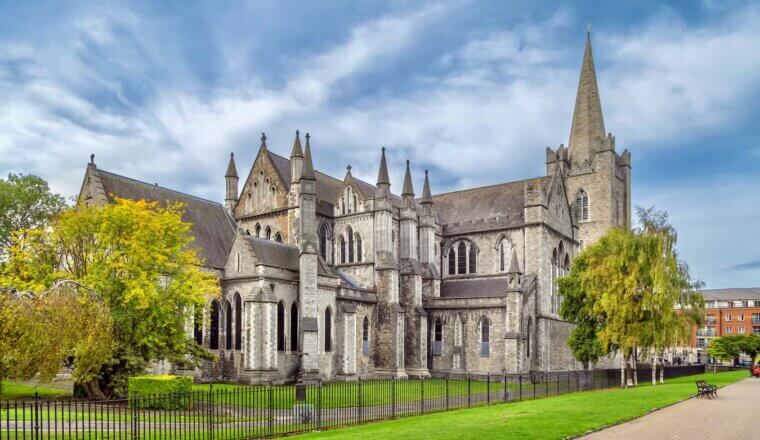
The 7 Best Hotels in Dublin
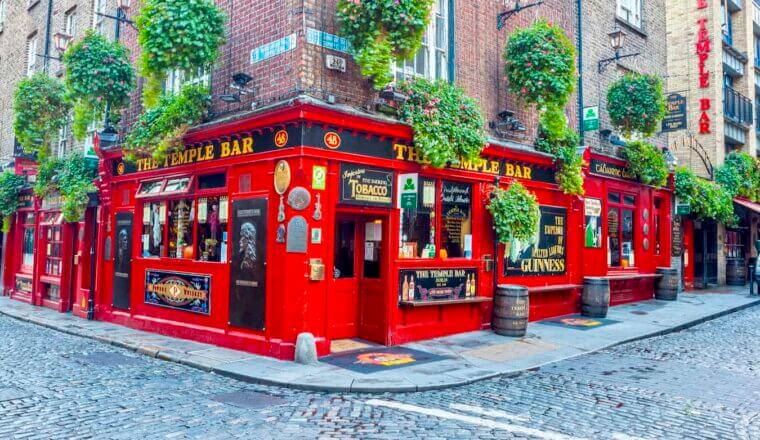
The Best Walking Tours in Dublin
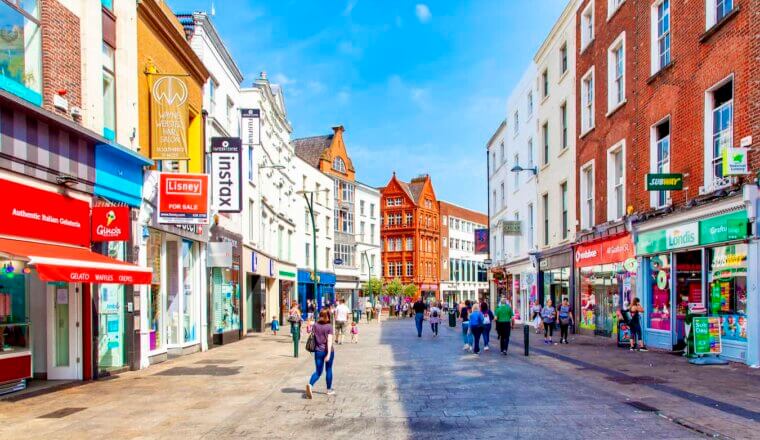
The 5 Best Hostels in Dublin
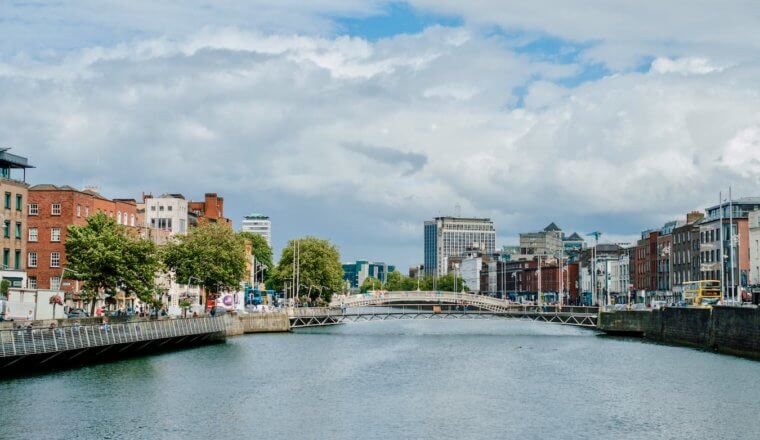
Where to Stay in Dublin: The Best Neighborhoods for Your Visit
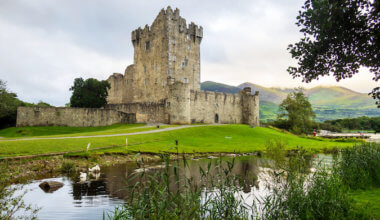
The Best Tour Companies in Ireland
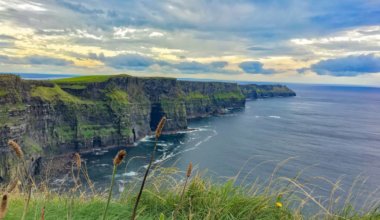
My Love Note to the Irish
Get my best stuff sent straight to you, pin it on pinterest.
- Where To Stay
- Transportation
- Booking Resources
- Related Blogs

- +353 (0)85 110 8969
- [email protected]
Rachel’s Blog
More about Ireland, Travel & Adventures
The best way to travel Ireland
- December 20, 2021
Q&A to help you find the best way to travel around Ireland in 2022
A lot of people ask me: What is the best way to travel around Ireland? As an Irish tour guide and enthusiastic explorer, I can tell you: There is no one way fits all! You could drive yourself, hire a local guide or join a tour on a set date. Your way of travelling around Ireland in 2022 will depend on your character, interests and budget.
Ireland might be a small island in size but it’s certainly not short on adventures, experiences or places of interest. The good news is you can travel Ireland in any way you can think of. You just have to decide what style of travelling will suit you best.
The following Q&A can help you to decide what style of travel you like or what type of tour to choose. Once that decision is made, it’s easy to put together the perfect route and itinerary for an unforgettable Ireland adventure.
Looking to travel Ireland ‘off the beaten path’? Check out some recommendation on places to visit in my blog The ultimate Ireland bucket list (for all who hate bucket lists)
What’s the best way to get around in Ireland?
Ireland is renowned for its natural beauty; therefore, most visitors want to explore areas outside of Irish cities. Since a lot of these places are not accessible by public transport, motorised vehicle is still the best way to travel around Ireland.
At the same time this doesn’t mean you have to drive yourself. You can hop onto a tour bus, hire your own driver or guide for a private tour.
Which is the best Ireland tour?
Irish tour companies offer anything from self-drive tours to fully guided private tours. Which is the best Ireland tour for you will depend on your interests and budget.
Should I book a guided tour around Ireland?
Do you want to take the hassle out of booking accommodation and planning out your itinerary on your own? Are you anxious about driving in a foreign country and have a fear of missing out and getting lost? If so, then a guided tour is for you! Now what is important is deciding what type of guided tour suits you.
Are coach tours around Ireland happening in 2022?
If you have very limited time, a tight budget and you want to cross Ireland’s biggest tourist attractions off your bucket list, a coach tour around Ireland might suit you. Although you shouldn’t mind sharing a small space with lots of other tourists and sticking to a strict time schedule. Since the pandemic coach tours have experienced less demand and a lot of companies have tried to divert to offering tours for smaller groups. It’s difficult to say what exactly the Covid19 restrictions will look like in the summer season 2022, but be aware that tour cancellations are possible because of restrictions or low numbers.
Where do coach tours around Ireland start from?
Bus tours usually leave serval times a day from the cities whether that be for a day trip or multi-day journey. Coach tour packages can easily be picked out and bought on the internet. They are usually specialised in ticking as many boxes as possible in the shortest time frame possible. I’ve talked to people who’ve been to Dublin, Belfast, the cliffs of Moher and the ring of Kerry in under 2 days. This means though you spend 90% of the day stuck in a 52 seater bus.
What are small group tours?
Another option is purchasing a small group tour that leaves on a set date. In this case you usually join a group of up to 16 people. This is a good option if you have found an itinerary that fits your needs. The theme of a tour might fit a certain interest of yours for example photography, hiking or trail running. It is ideal for solo travellers who want to meet more people and share the experience with others.
Why should I book a private tour of Ireland?
Are you looking for personalised & flexible adventure? Then a private tour of Ireland might be for you. To create your own Ireland itinerary, you get in touch with a local reputable guide or tour company. Firstly, you communicate with them about what you would like to see and do, tell them about you travel style and talk about your budget. The experts then put together a travel itinerary that meets your need. As a result, all you must do is show up at the airport, your guide will be waiting for you, and everything will be organised.
What’s the advantage of a private Ireland tour?
The huge advantage of a private tour is that you create a trip that suits your personal pace and interests. Plus, you don’t have to worry about a thing once you arrive in Ireland – your guide will take care of the logistics. From the moment you arrive at the airport until you are dropped off at the airport, you can relax and enjoy your adventure!
Should I hire a local tour guide?
The best deals (value and money) can usually be found with smaller local tour companies. As a local Irish guide I can highly recommend to try getting in contact with the person who will be guiding you directly. After all you will be spending a lot of time with them. This way, you can make sure you like you guide, and you can prevent misunderstandings. Ultimately, this will add immense value to your experience and you can save money by cutting out the middleman.
Is a private tour the best way to travel Ireland?
If you choose to go on a private tour with a local guide you will have a truly immersive experience. This means getting a locals insight into the Irish lifestyle and passion for their country. Since your guide knows the area inside out, you will be getting the chance to be spontaneous and have a new discovery around every corner. The goal is to not feel like a tourist but rather a part of the local communities. Your guide will become your friend and this is how you really get off the beaten track. Let your local guide show you to their favourite Irish coffee places and help you find the countries hidden gems. In many cases you will end up meeting their family and friends.
The part that I personally love most about guiding is to bring groups back to my Mam’s Bed & Breakfast, showing them where I grew up and having my new friends join Mam in the kitchen to learn how to bake Irish soda bread and hear about the old Irish baking traditions.
Can I plan a trip to Ireland myself?
If you want to plan, organise & navigate your Ireland vacation yourself, without the help of a tour company or local guide, you firstly must decide how you want to get around. Do you want to drive yourself? Or do you want to use public transport? Many tourists choose a mixed travel style like self-driving but joining guided day-tours. Ultimately, planning your Ireland trip yourself requires time for research before, and an independent and adventurous mindset once you are in Ireland.
Is a road trip the best way to travel Ireland?
One option to travel Ireland is to book a flight, rent a car from the airport (or take your own over on the ferry) and figure out the rest once you are there. You can go on a freestyle trip, with only a rough route idea, for example just following the Wild Atlantic Way, or book your accommodation and draw out a daily route itinerary. Road tripping in Ireland is popular amongst adventurous people of all ages. You just want to follow the roads looking for adventures? On the emerald isle you can find amazing surprises while getting lost on little backroads. Hence, this style of travel is ideal for people who are independent and have lots of time to explore.
Things to know before planning a road trip around Ireland
There are a few things you should be aware of before you start planning a road trip around Ireland.
Ireland is bigger than you think!
At the first glance the island of Ireland might seem small but traveling on the beautiful Irish country roads can take a lot longer than you think. Mizen & Malin, Ireland’s most southerly & northerly points, are both discovery points along the Wild Atlantic Way. As the crow flies they are only 466km apart, but because the Irish west coast is rugged and has lots of peninsulas, the Wild Atlantic Way is more than 2,500km long.
Irish roads are seldomly a motorway
Therefore, you can expect to be driving slowly. Along the Wild Atlantic Way an average of 50km/h. Also remember that you will want to stop a lot. Sometimes to take a picture from the roadside, but often you’ll want to get out of the car and walk to the point of interest and the beautiful view etc. One of the most common mistakes people make when planning their Ireland road trip is trying to cover too much distance. Do you really want to spend most of your vacation in a car?
Planning time is needed
Do some research to know what you want to see and do. You won’t be able to see it all – there is simply too much. Pick less to have more time to enjoy it. Stay in places for more than 1 night and plan in car-free days too. Ireland truly has stunning natural wonders and historically important sights around every corner, still it’s not that easy to find the way sometimes. If you cruise around without an itinerary, you might miss some cool local highlights.
Accommodation fills up fast
It is advisable to book accommodation in advance, especially in the summer months, otherwise you could end up sleeping in your car (no problem in a camper van) or you will only have the option of a hotel over your budget etc.. Years ago, Ireland was full of Bed & Breakfasts and it was easy to drive along and stop at a house with a ‘vacancy’ sign. Things have changed! Most B&Bs are on booking platforms these days and their rooms are booked up weeks in advance. Since the Pandemic it has become even more difficult since a lot of B&B owners retired or switched to rent out the whole house as a self-catering.
Irish roads can be adventurous
If you are renting a car its 100% worth it to pay the extra bit for an insurance that covers everything that could possibly go wrong. You might be a good driver, but Irish roads are narrow, and sheep tend to appear out of nowhere. Small roads are mostly used by farmers, expect tractors, cattle or sheep traffic, or tourists that might not be used to driving on the left side of the road.
Is a road trip the right thing for me?
To sum it up: A self-planned road trip suits people with little time constraints, who don’t mind getting lost while driving on the Irish country roads. It’s perfect if you have time to do a lot of research or if you don’t have specific expectations. You can either take the time beforehand to plan your itinerary or you can just go with the flow and be amazed by randomness. The latter, it’s ideal for people traveling in a camper van since that sorts out your need for accommodation. Otherwise, pre-booking accommodation is strongly recommended, especially if you travel on a budget, even if that means less flexibility.
What’s the best road trip itinerary for Ireland?
If you are up for a road trip around Ireland without doing all the research and booking yourself, a self-drive tour might be what you are looking for.
What is a self-drive tour of Ireland?
To book a self-drive tour you get in touch with a reputable local Irish tour company and communicate with them to purchase a road-trip tour itinerary from their website. This might still involve renting a car but having the tour company co-ordinate the accommodation bookings, suggested activities, restaurants and giving you a list of hidden gems to discover.
A self-drive tour is a nice way to travel if you wish to be independent and like driving on the left side of the road on sometimes very narrow roads with lots of sheep. The tour company will take the hassle out of making bookings, will provide you with route details and ensure you don’t miss out on ticking off your bucket list.
Is a self-drive tour the best way to travel Ireland?
For many people the 2 main reasons for choosing a self-drive tour are independence and budget. Self-guided tours are a great way of exploring as a private group while enjoying the advantage of a professionally planned & organised itinerary.
Although in many cases it’s worth considering booking a private tour and a local guide instead of a self-drive tour. Especially if you are a group of 4 people or more, a private tour around Ireland can work out at a similar price as driving yourself, but you’ll enjoy a lot of additional advantages. For example, you can skip the hassle of driving in a foreign country and gain a fun travel companion with a lot off local knowledge.
What are alternatives to driving to get around Ireland?
Can you travel ireland by bike.
Yes yes yes! In my opinion, a cycling tour is a great way to travel. Cycling tours can be the ultimate way of ‘slow tourism’. In this case, ‘slow’ doesn’t solely refer to your moving pace. This alternative traveling style is also about changing your attitude towards travel and realising your impact on the environment, communities and economy of your holiday destination.
Firstly, a cycling trip around Ireland is a more sustainable way of travelling. Additionally, you can get off the beaten path and experience the wild Irish landscape and local communities up close and personal.
Why should I book a self-guided cycling tour?
A self-guided cycling tour is a great option if you want to explore Ireland on the bike. A professionally planned itinerary can spare you a lot of research time and worries. This means a tour company takes care of bookings, provides you with maps – both digital and physical – and gives you all the tips where to stop off. Usually, you can choose between bringing your belongings with you in panniers or have your luggage moved.
Can I cycle along the Wild Atlantic Way?
With Rachel’s Irish Adventures I have specialised in tailor-made cycling tours along the Wild Atlantic Way and beyond. In my opinion, the Irish west coast is one of the most beautiful places for a cycling tour you can imagine. I know the Wild Atlantic Way like the back of my hand since I cycled it in 2016 as part of the WAWA Audax and in 2020 during the TransAtlanticWay event. Besides that, I’ve spent lots of time training and touring along this spectacular route. Now, I’m delighted to use my knowledge and experience to tailor personalised itineraries for cyclists who want to explore the Wild Atlantic Way.
Do you have any other questions about traveling in Ireland?
- Cycling the Wild Atlantic Way (1)
- Rachel in the Media (8)
- Rachel's Ireland tips (7)
- Travel adventures around the world (1)
- Whiskey (3)
Most Recent Posts

Ireland packing list for your adventure

The best Irish coffee recipe

Adventures with Rachel Nolan ~ Ink & Peat podcast

2020 reviewed – Gratitude changes everything

Pinocchio Magazine: Rachel Nolan a true Irish Adventurer
Comments are closed.
Ready for a stress free travel experience?
Start planning your private guided irish tour.
Get in touch and we can start to craft an adventure vacation package to meet your needs!
- Quay Road, Coast Road, Ballina, Co. Mayo
- +353 (0) 85 110 8969
- Privacy Overview
- Strictly Necessary Cookies
This website uses cookies so that we can provide you with the best user experience possible. Cookie information is stored in your browser and performs functions such as recognising you when you return to our website and helping our team to understand which sections of the website you find most interesting and useful.
Strictly Necessary Cookie should be enabled at all times so that we can save your preferences for cookie settings.
If you disable this cookie, we will not be able to save your preferences. This means that every time you visit this website you will need to enable or disable cookies again.
22 Travel Tips For Ireland For First-Time Visitors
Categories Travel Guides
Going to Ireland for the first time? This lush green country, aptly named ‘ Emerald Isle ’ sure packs a punch when it comes to attractions.
There are diverse landscapes, ancient archeological structures, old churches and lots of castles . It’s not the biggest country in the world but daunting nonetheless.
Ireland is an easy country to get around in, the Irish are warm and accommodating, and going there looks like a huge epic adventure. Make the most of your trip by taking into consideration these travel tips for Ireland.
Things you'll find in this article
Travel Tips Before Going to Ireland
Travel tips for staying in ireland , travel tips in eating in ireland , travel tips getting around ireland, travel tips for enjoying ireland .
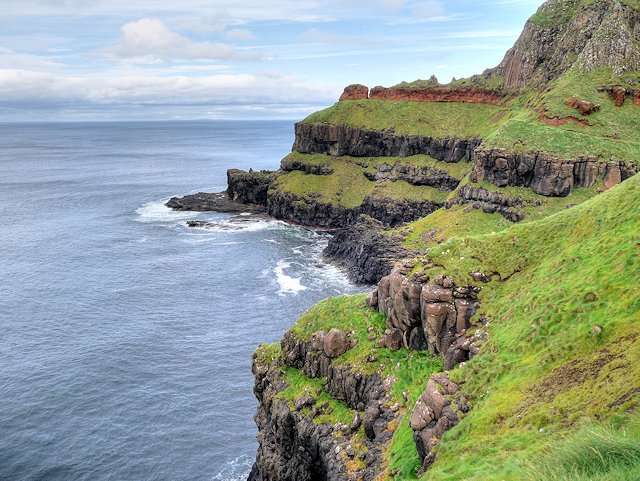
1. Ireland is a great place to visit any time of the year because of its mild, temperate climate.
However, if you want to be sure that most attractions are accessible or open, the best time to visit is during the shoulder season.
These are months that are in between the peak and low seasons. There’s March to May and September to November . During these months, temperatures are still mild, tourist sites are less congested and you’d definitely enjoy the beauty of the Emerald Isle.
2. Ireland is beautiful at any time of the year but it also has pretty unpredictable weather. Expect rain, even during summer.
It’s best to be always prepared so pack an umbrella, slip-proof shoes, a cardigan, and a waterproof jacket to stay warm and dry. Check out this packing list for Ireland for all seasons .
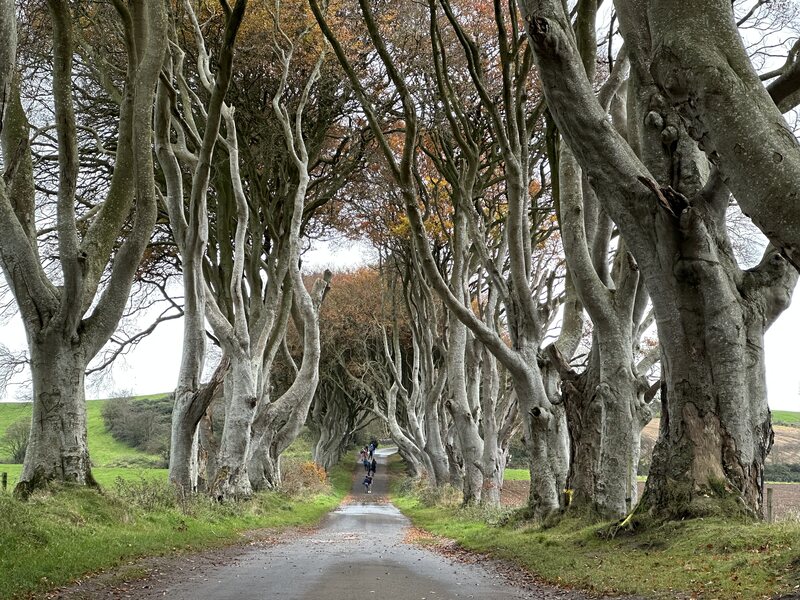
Dark Hedges, Image by Christine Rogador
3. Don’t forget to bring your adapter plug, especially if you travel with multiple electronic devices.
You would surely want to capture and document your trip so your cellphone and camera needs to be fully charged before you leave your hostel or hotel. Pack your adapter to help save time while in Ireland with a busy itinerary.
4. An essential advice not just when traveling to Ireland but to any other country is to buy travel insurance.
Good travel insurance will protect you and take care of you when you get sick or injured while traveling, as well as during theft and cancellations.
It is pretty much your very own comprehensive protection if anything goes wrong while you’re on vacation. Never go on any trip without it.
5. Make sure to check first if you need a visa to go to Ireland to avoid unnecessary inconveniences. For Philippine passport holders like me, you can check out this guide on how to apply for Ireland Tourist Visa for Filipinos.
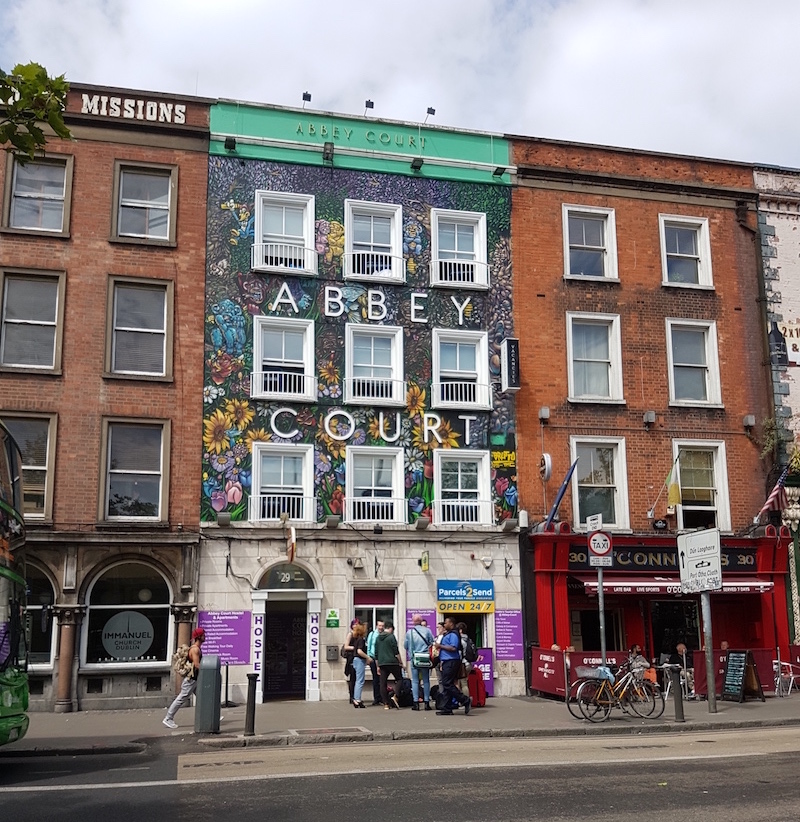
6. If you’re looking for an easy way to save some cash while in Ireland, it’s best to stay in a hostel. They’re cheap, give you access to the bare necessities and usually includes free breakfast. Check out this list of places to stay by cities .
7. However, even if it’s slightly pricier, a bed and breakfast is a great option as well. You get to stay in a homey atmosphere, and has additional opportunities to interact with locals.
Bed and breakfasts and guesthouses also often serve Irish food instead of getting them in pricier restaurants outside. These accommodations are often in old or historic houses, some are even in castles.
8. You can also combine your accommodation choices. For example, stay in a hostel when in big cities like Dublin or Belfast, then book a guesthouse then in smaller cities or towns.
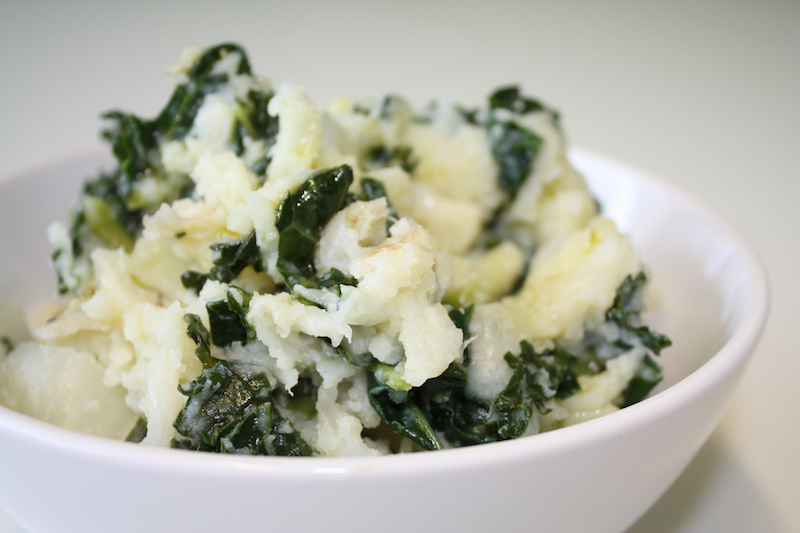
9. Take advantage of the free food, especially free breakfast in your accommodations. Be sure to eat right before going anywhere.
10. Ireland has some cool low-cost local supermarkets. Take advantage of these by buying some basic pick-me-ups like canned or bottled juice, cereal bars, digestive biscuits, and crisps.
They come in handy when you get hungry in between exploring sights or during long-distance trips to the countryside.
11. A great way to save some cash is to eat early, whether it’s lunch or dinner. Many restaurants in Ireland offer budget lunch nor dinner to the’early birds’ and they’re cheaper.
There isn’t a lot of options though as they’re usually set meals. It is another way to experience local cuisine, too!
12. Try at least any of the food and drinks that Ireland is known for. Have the traditional Irish breakfast , some stew, bangers, and mash or even fish and chips.
Have a pint of Guinness, a glass of whiskey or Irish coffee. Trying these definitely adds to the experience.
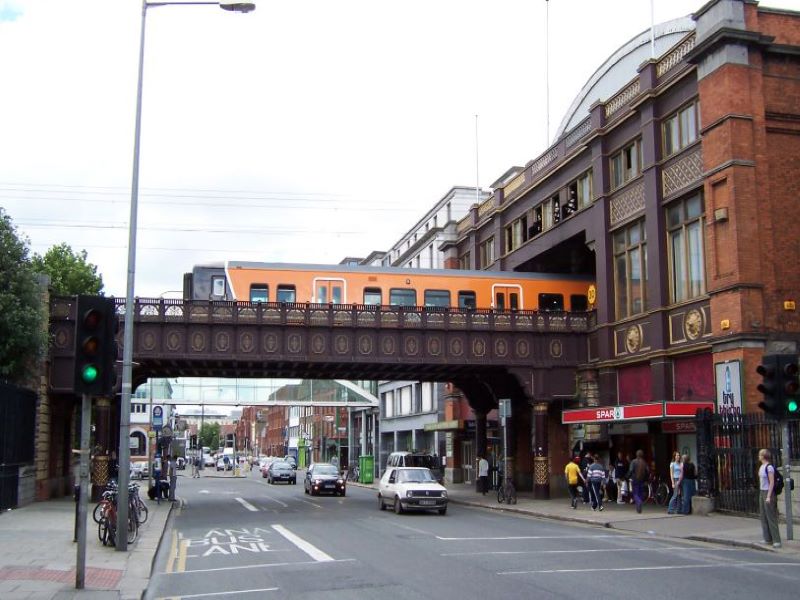
13. Ireland has excellent public transportation, so take advantage of it especially in the big cities. Most offer free wifi, have friendly drivers and are known to always arrive on time.
14. If you want to save more, get a LEAP card . This is a card you can top up to use on Ireland’s public transportation. With the card, you get discounts on fares compared to cash tickets. It’s very useful in Dublin and Belfast as well as Cork , Galway , Limerick , and Waterford .
You can also get a Dublin Pass that will give you access to over 30 attractions in Dublin for free and a hop-off and hop-on bus tour. You can get it Dublin Pass .
15. If you’d like to explore Ireland past the big cities at your own pace, it is best to rent a car. It’s quite easy to rent a car in Ireland and in the long run, it will be your cheapest option.
Renting (or hiring) a car is also a fantastic way to see most of the Emerald Isle as there’s a lot of scenic drives going from one city or town to another. If you’re unfamiliar with driving rules in Ireland, you can check out this guide for driving in Ireland .
Where to Book: Rentalcars.
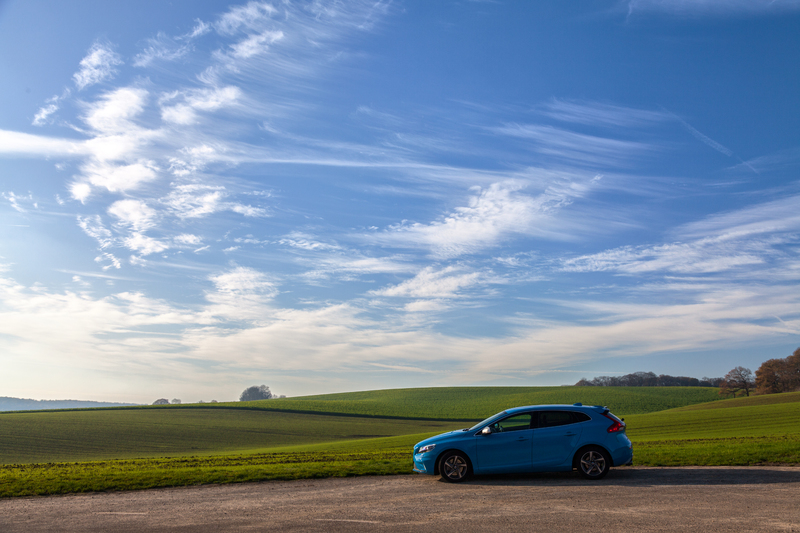
16. Try ridesharing, which is another lowcost means of transportation for visitors in Ireland.
Here, you only have to pass a small background check to get approved. The drivers who rideshare are also registered and vetted. Once approved, the driver will pick you up.
With this option, you only need to pitch in for gas. Two good ridesharing apps you can try are BlaBlaCar and CarpoolWorld
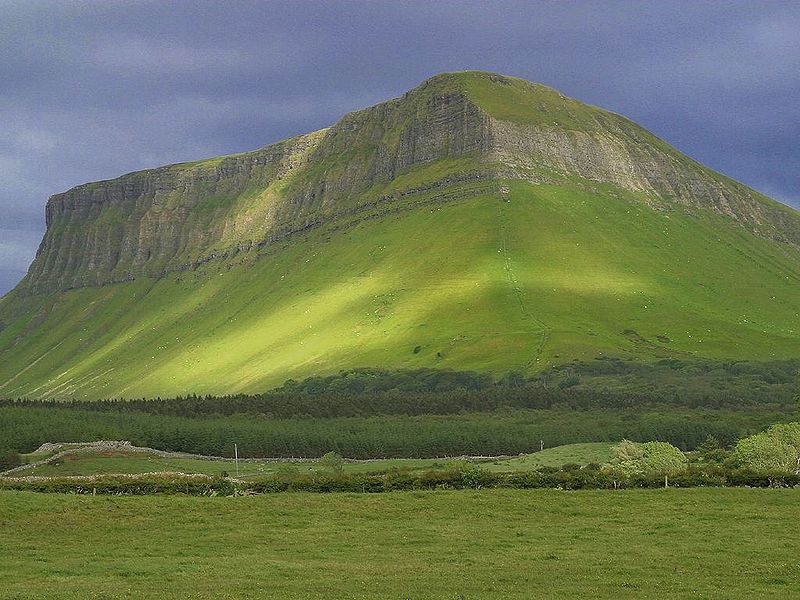
17. Be sure to get a Heritage card — it’s a card you can to up and gives you access to some of the best attractions across Ireland. Specifically, the Heritage card gives free admission to site managed by the Office of Public Works.
These include Dublin Castle , Ennis Friary, the Iveagh Gardens, Glenveagh National Park, Killarney National Park, Ross Castle , and more. This is valid for a year so you can explore as much as you want here.
18. When in cafes, restaurants or even spas, know that Ireland does not have a set culture on tipping. However, a few euros will be very much appreciated easily especially for exceptional service. Check out this tipping tips for Ireland.
19. Don’t drink too much when in a pub. If you’re trying to save but want to experience Ireland’s pub culture, go ahead and order a pint of Guinness. Pub drinks are a bit pricer, so stick to just one pint.
A fantastic way to do this is to find a pub with a great atmosphere and especially one with a band that features traditional Irish music. Then, you can order one drink and enjoy the rest of the evening
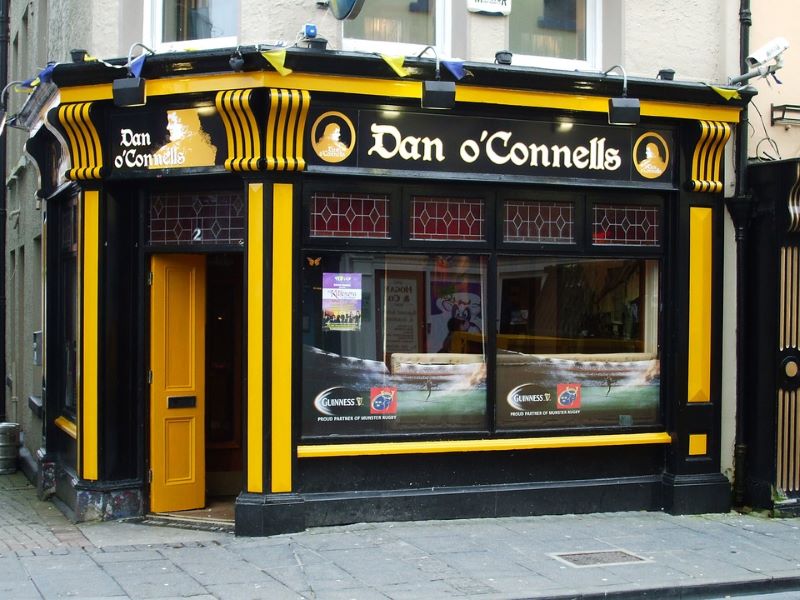
20. Talk to as many locals as possible — in your hotel or bed and breakfast, a pub or wherever you happen to be. The Irish are a friendly, accommodating lot and are happy to help out visitors to their country.
21. You should absolutely visit Northern Ireland . It’s a long drive bit truly worth it. Visit Belfast, drive along the Causeway Coastal Route or see the gorgeous town of Portrush .
22. Ireland is 32,595 square miles (84,421 square kilometers) and is packed full of sights. Pace yourself and don’t squeeze ten attractions in a single day or two.
When in Ireland, you may opt to visit just a few sights or try around two interesting activities in a day. Be sure to really enjoy and savor each place you visit.
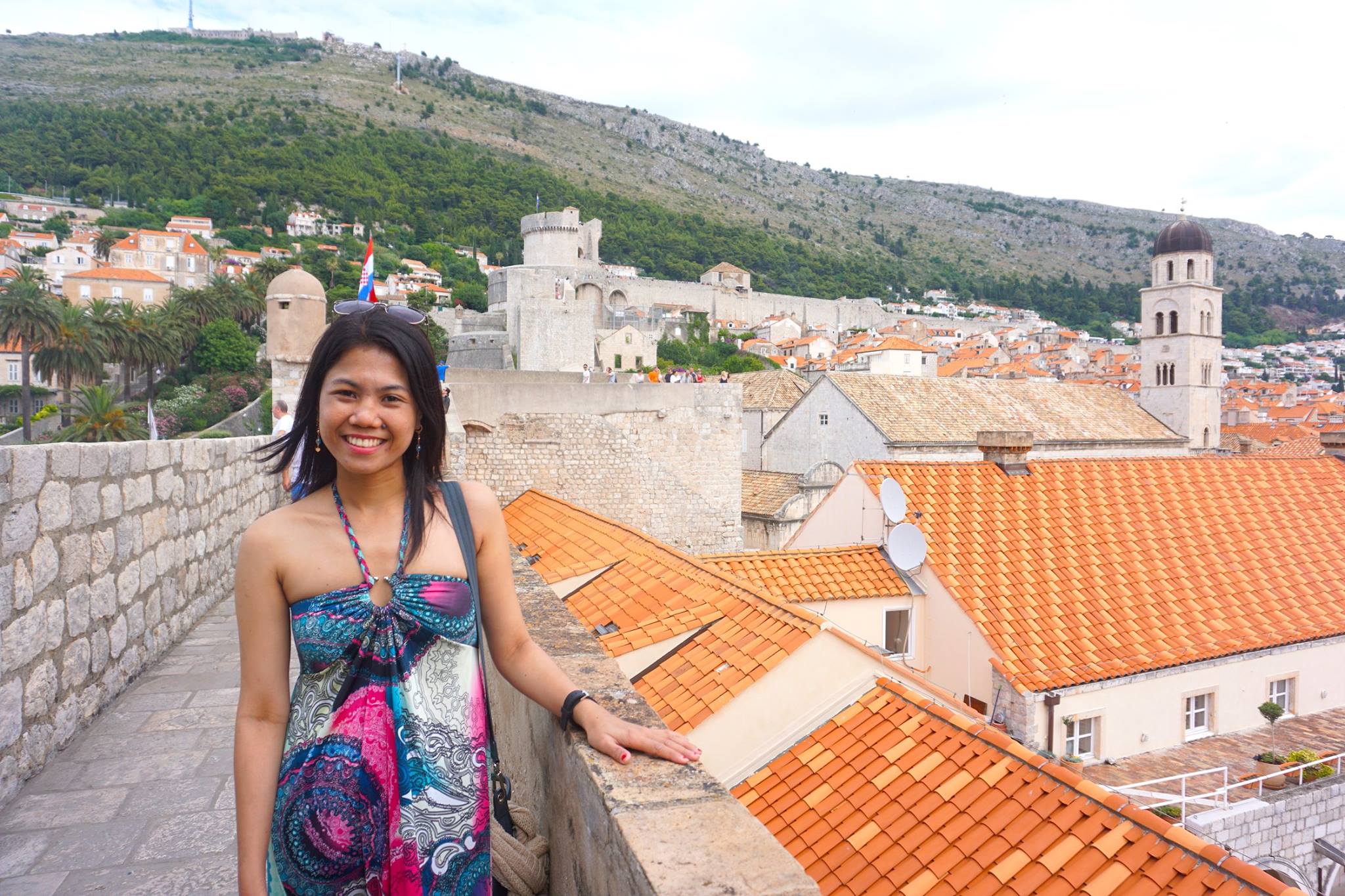
Hi, I’m Christine – a full-time traveler and career woman. Although I’m from the Philippines, my location independent career took me to over 40 countries for the past 8 years. I also lived in 3 continents – from the Caribbean, South East Asia to Africa. But despite living in several countries, my love for Ireland remains the same. A country that had been a part of my life since I was 14 because of my love for Irish music and bands. Ireland Travel Guides was born because of this passion and hopefully, in some little ways, this website will be able to help you on your next trip to Ireland.
A local's guide to ten of Galway's best-kept secrets
These are the must-see spots in galway, according to a local.
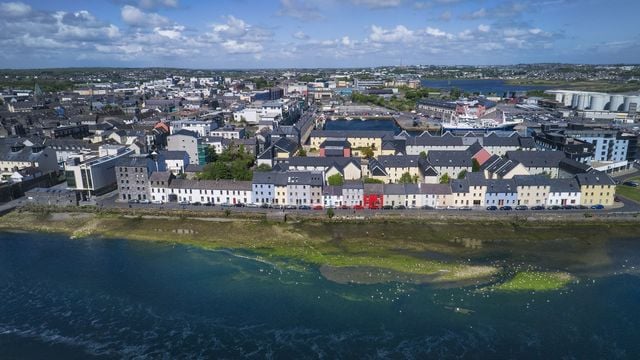
Top places to visit in Galway, according to a local! From a cup of tea to kicking walls, this is what the City of the Tribes is all about.
It’s the only city on the Wild Atlantic Way and next year it’s set to become the European Capital of Culture. Galway is a small city on the west coast of Ireland that consistently punches well above its weight and should be a “must-see” destination on any trip to the Emerald Isle.
Visitors to the City of the Tribes are consistently amazed by the sheer variety of entertainment on offer and energetic nightlife to be found in a city that has only about 80,000 inhabitants, but during the peak tourist season, it feels like so much more.
People love Galway for its bustling streets, its colorful characters, and entertainers, its thriving pub scene, but above all the friendliness of its people. It was voted the “friendliest city in the world” by a New York-based magazine two years ago – and who are we to argue!
Here, our man on the ground in Galway gives a personalized guide to ten hidden highlights of this vibrant city.
Oliver Cromwell’s forces used to roar “To Hell or to Connacht” when they ran Irish peasants out of their landholdings, but these days many people come to Galway for a week and decide that they want to stay forever!
Sign up to IrishCentral's newsletter to stay up-to-date with everything Irish!
Top places to visit in Galway City:
The smirking angel.
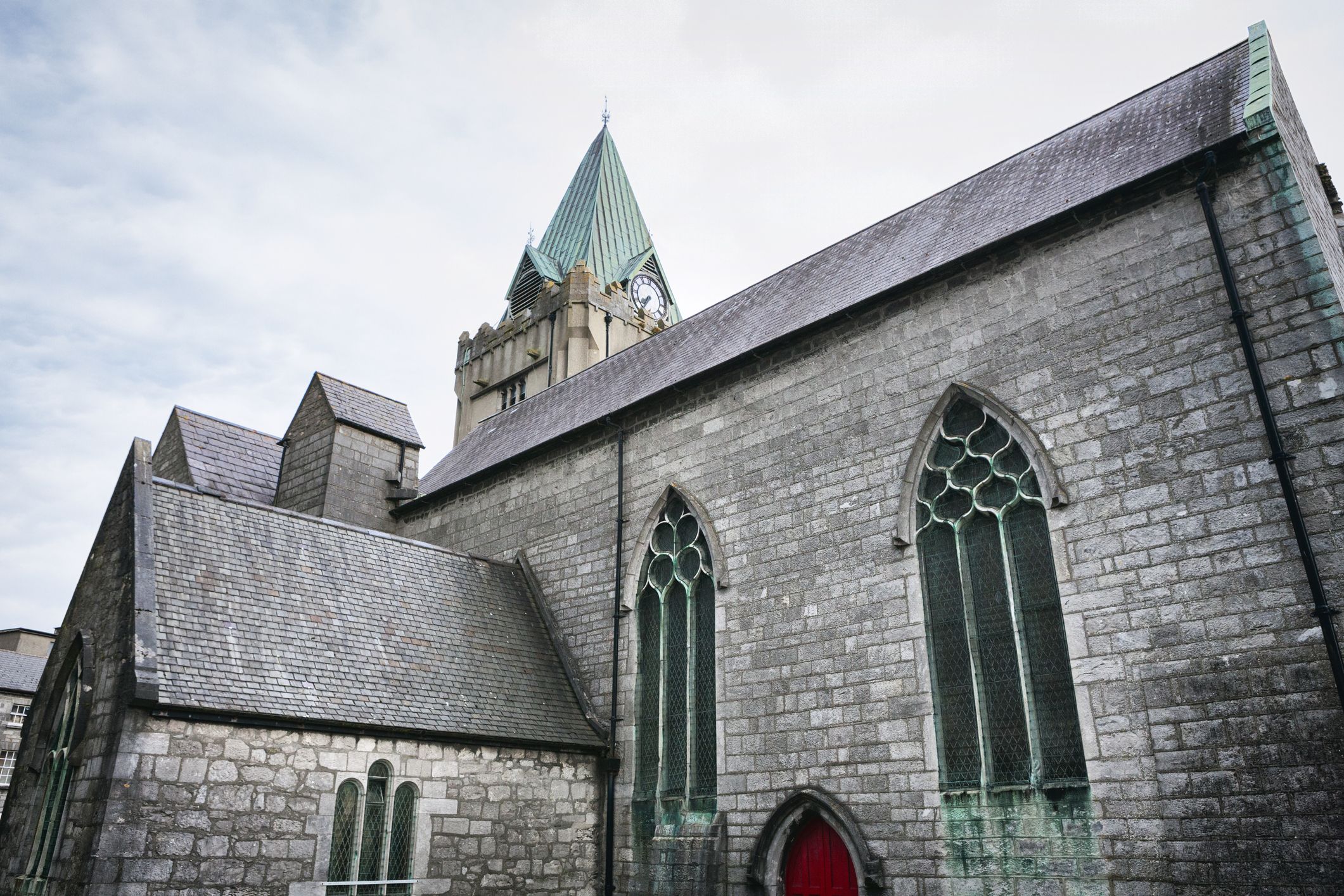
Collegiate Church of St. Nicholas in Galway, County Galway, Ireland. It is a medieval church founded in 1320 and is in regular use today. Image: Getty.
Almost every visitor to Galway gets to see the historic St Nicholas’ Collegiate Church in the heart of the city. Even if you have no interest in this beautiful 14th-century building, it’s right next to the bars, buskers, and shops on the bustling main pedestrianized thoroughfare between Eyre Square and the Spanish Arch. Famously, Christopher Columbus worshipped here in 1477, before going on to “discover” the New World. He stayed over what is now the Ti Neachtain public house on Quay Street.
But you may not know how much this Protestant Church embodies the centuries-old struggle between Britain and Ireland, Protestant and Catholic. It was not always a Protestant Church.
In 1652, after a nine-month siege, the city was seized by the hated Cromwellian forces who used the cathedral as a stable for their horses to insult the locals. Cromwell’s soldiers also disfigured the faces of all but one of the angels in the former Catholic Church. If you visit, see if you can find the only angel in the church still in possession of a face – no wonder he has a big smirk on his face!
The “forgotten” City Walls
It may be hard to believe now that the sprawling city of Galway was once surrounded by walls, to keep the native Irish out, and ruled by just 14 families who were known as the tribes. Visitors in the 21st century are surprised to discover that almost all of the city’s walls have been destroyed. But the walls belonged to the colonizers – they were built to keep the native Irish out.
Amazingly, the best-preserved part of the old Galway City wall is contained within a shopping mall. When workmen were constructing the Eyre Square Shopping Centre in the 1980s, they came across a large section of the old wall, complete with towers, which had been left derelict for so long that the natives had forgotten about it! Why not pay a visit to visualize how the colonizers used to hurl abuse (or various objects) at the pesky Irish peasants if they dared to approach their beloved town!
The scene of the first ‘Lynch mob’

Chess pieces practise lynching. Image: Getty.
One street to the west of the city’s pulsating main drag, you may be surprised to find yourself alone at a strange-looking old window which backs onto St Nicholas’ Church. It was at this exact window in 1494 that Mayor James Lynch hanged his own son, Walter, for the murder of a young man from Spain. The good citizens, in shock, assembled under the window to watch the hanging of a very popular and outgoing young man. Lynch was determined that justice was imposed without favor in his town.
Walter had killed his friend, Gomez because he was jealous of his love for a Galway girl called Agnes. Hence, the city of Galway gave the terms “lynch mob” and “lynching” to the English language from that day. Notice the skull and crossbones under the window and remember not to fall foul of the locals if you visit the city and fall in love with a beautiful Galway girl!
- Galway Bay - the mystery man who wrote the classic song
Browsin’ in Charlie Byrne’s
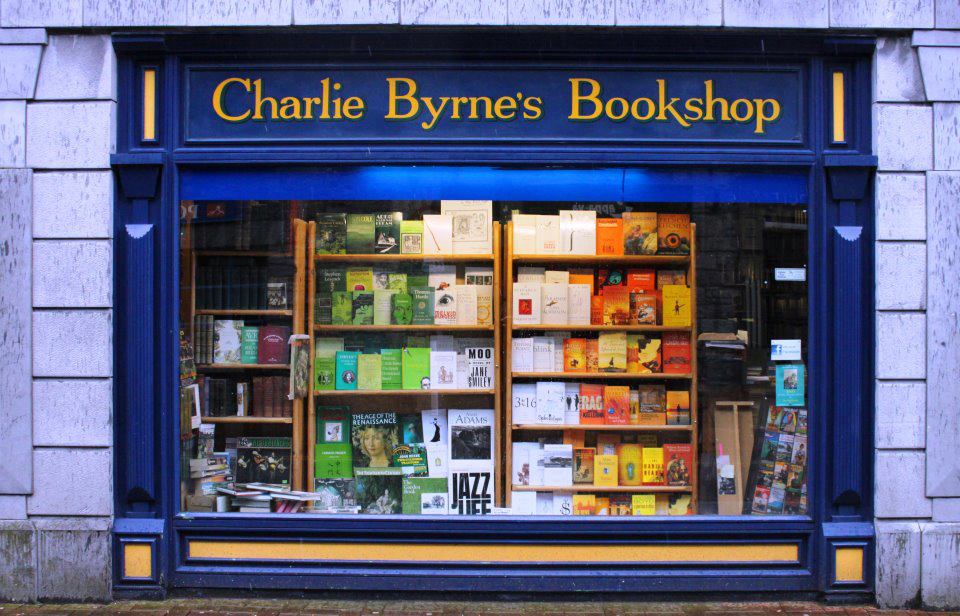
Image: Charlie Byrne's Bookshop/Facebook.
Believe it or not, it does rain sometimes in Galway. From piddling to pouring, and drizzling to lashing, the locals seem to have a term for every conceivable outpouring from the heavens.
Fear not, though, because the best independent book store on the entire island of Ireland is nestled in the heart of the city center, just one street away from the buzz of Shop Street and High Street.
At first glance, Charlie Byrne’s is not such an imposing building. But venture inside, explore its nooks and crannies, and you will soon be overwhelmed by both the sheer variety of books on offer and the infectious enthusiasm of manager Vinny Browne and his hard-working staff.
Voted the Best Independent Bookshop in Ireland earlier this year, there is no better place to pick up your holiday reading or a gift for a loved-one back home. It’s located on Middle Street.
A stroll by the riverside
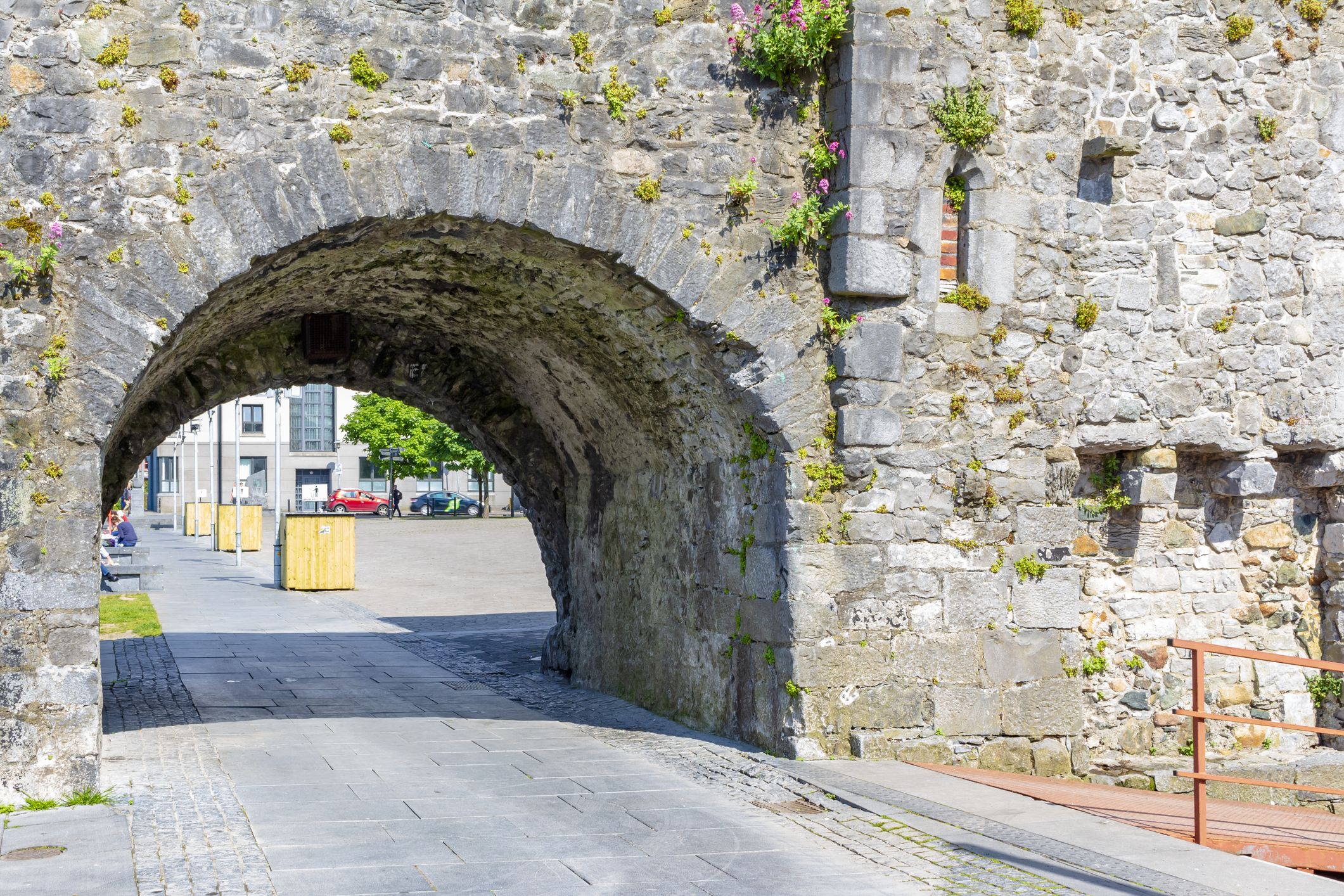
The Spanish Arch in Claddagh neighborhood of Galway, Ireland. Image: Getty.
The city was originally founded as a strategic settlement by the mouth of the River Corrib and its waterways have always been central to the life of the city. On a warm summer’s evening, you will find hundreds of young people soaking up the atmosphere by the Spanish Arch, but you can venture much further upstream to get a real taste of the city’s history.
Cross the O’Shaughnessy foot-bridge, and notice its uncanny resemblance to the iconic Golden Gate Bridge in San Francisco. That’s because it’s named after the NUI Galway graduate who emigrated to the United States and oversaw its construction in 1912.
Follow the river upstream through the sprawling NUI Galway campus to enjoy spectacular views of the historic Menlo Castle, on the opposite bank of the Corrib. You will be amazed by how peaceful the river walk at Dangan can be after leaving the bustle of the medieval city center streets.
A cup of tea at Katie’s Cottage
Hard to believe now, but the Irish-speaking fishing village of the Claddagh was outside the city for many years and its residents were forbidden from passing through the old city walls.
A sign even used to tell the “Ferocious O’Flahertys,” the most notorious clan in Connemara, that they were not wanted in the City of the Tribes.
The Claddagh once had its own king, laws, and customs. In the 1930s, just a few years after Ireland gained independence from Britain, a deadly outbreak of TB saw the new Free State Government demolish all of the stonewashed cottages which gave this fiercely proud village its unique character. Two years ago, local resident Mike Walsh lovingly built a thatched cottage which is an exact replica of those which were destroyed. He has built a little museum, shop, and tea room out the back and the Irish art of storytelling has been revived around the open fire. Call in for a cuppa’!

Are you planning a vacation in Ireland? Looking for advice or want to share some great memories? Join our Irish travel Facebook group.
Remember troubled times
If you took a walk through Galway a decade ago, you would hardly find one public acknowledgment of the terrible famine which took a million lives in the 1840s and prompted another two million to seek out new lives on the other side of the Atlantic.
The West of Ireland suffered more than any other region during those terrible times and, for the people of Galway, the memories of British colonization, injustice, and indifference were too painful to recall.
Until a man called Mark Kennedy came along. After years of campaigning, Mark opened a famine memorial park on the seafront between Salthill and the Claddagh. It honors the people who set sail from Galway Bay on a hundred ships, fleeing desperate poverty and starvation, between 1847 and 1850. It also honors a little girl called Celia who died of starvation on the streets of Galway in those terrible times.
Mark has made sure we never forget our history and you can read Celia’s harrowing story at the entrance to this park. The park reminds us that the Irish were the world’s most desperate refugees, fleeing poverty and crossing borders, less than two centuries ago.
Follow in Ed’s footsteps
Nightlife in Galway city is so infectious that you can even find a lively music session on a wet Monday night in November if you are so inclined. Many Irish visitors come for long weekends just to party in the city center bars and clubs and neglect the more sedate seaside village of Salthill during their nocturnal ramblings.
Which is a pity, because this suburb has a wonderful charm of its own. The 436 million people who have viewed Ed Sheeran’s ‘Galway Girl’ video (at the time of writing!) might like to know that the most memorable pub scenes were filmed in the family-run O’Connor’s Bar in the heart of Salthill. Go there for the traditional music, get lost in the unique décor, atmosphere, and ambiance of the place, and you won’t want to go home!
A haven of tranquillity
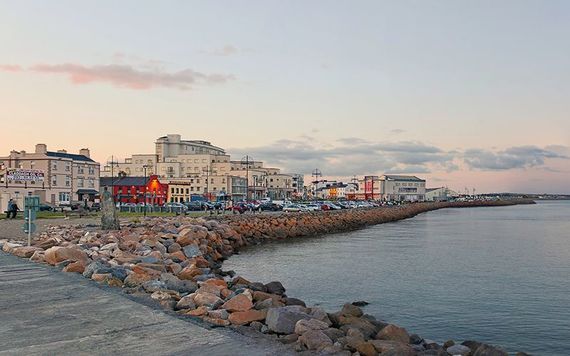
Salthill. Image: Flicker.
At least one walk along the Salthill prom, with its fantastic views of Galway Bay, should be on everyone’s bucket list. But be careful not to miss a gorgeous little park, tucked in between two of the resort’s hotels, which celebrates how the worst tragedies in life can sometimes be transformed into things of beauty.
A Galway couple, Martina and Denis Goggin, suffered every parent’s worst nightmare when their only son Eamonn was killed in a car crash in 2006. They channeled their grief into setting up the beautiful Circle of Life Park next to the promenade, which is now Ireland’s National Organ Donor Commemorative Garden.
Every year, the families of people who have donated or received organs gather in celebration. And it’s also one of the most peaceful places in Galway City, a very special haven right beside the sea.
Kick that wall!
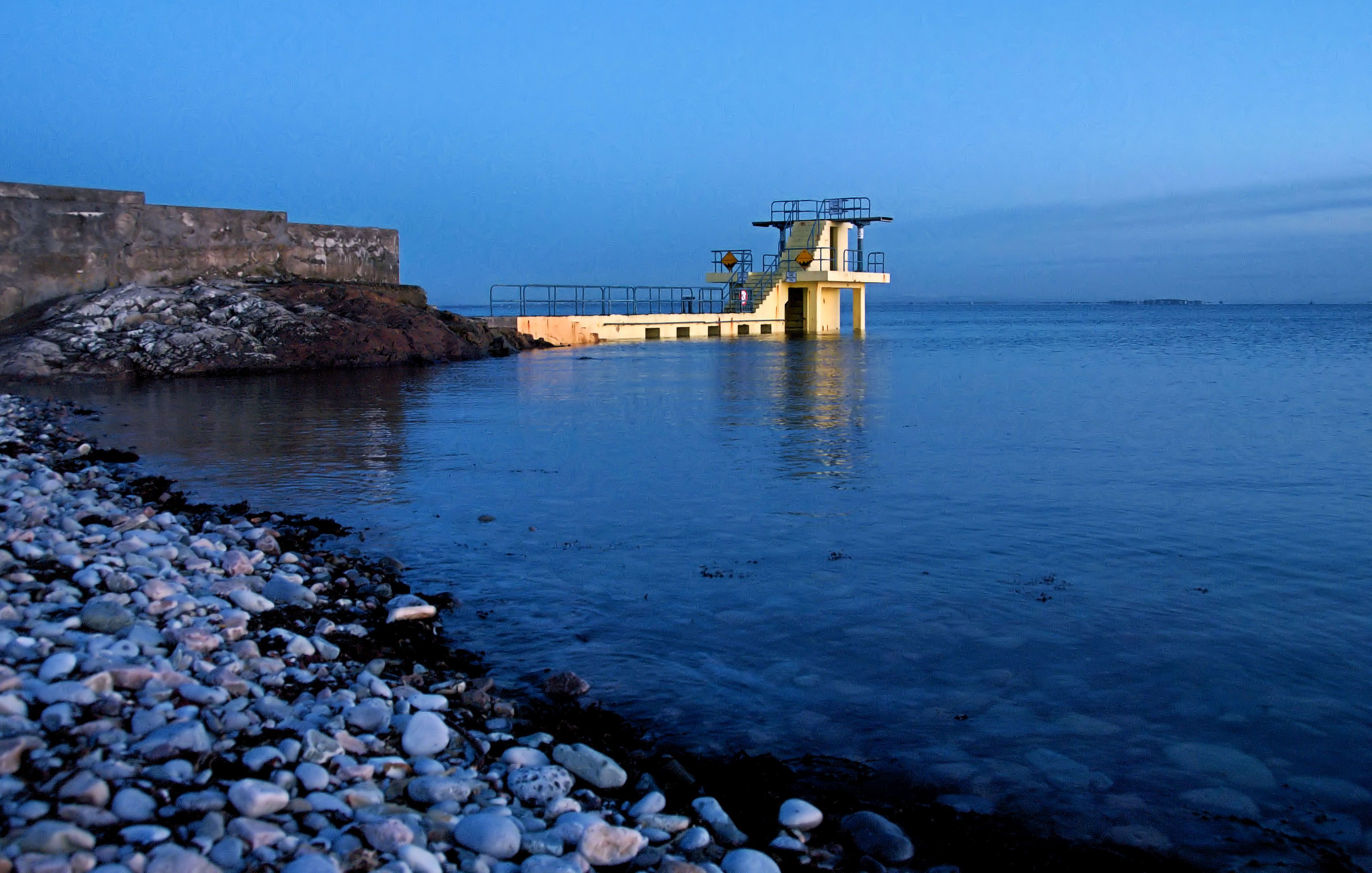
The Blackrock Diving platform at Salthill, County Galway, Ireland. Image: Getty.
You haven’t visited Galway if you haven’t walked the Salthill prom, with its views of the Clare Hills and Galway Bay, and you are not a true Galwegian unless you kick a particular stone wall near the Blackrock diving tower.
Kicking the wall at the half-way point of a walk, before turning back, is a tradition that goes back through the generations. It’s said to bring good luck. In 2012, someone came up with the bright idea of putting a collection box for charity at the “kicking wall.” You don’t have to make a donation, but you do have to give the wall a good kick if you want the locals to think you are a true Galwegian!
*Ciaran Tierney won the Irish Current Affairs and Politics Blog of the Year award at the Tramline, Dublin, in October 2018. Find him on Facebook or Twitter here. Visit his website here - CiaranTierney.com. A former newspaper journalist, he is seeking new opportunities in a digital world.
* Originally published in July 2019.
This article was submitted to the IrishCentral contributors network by a member of the global Irish community. To become an IrishCentral contributor click here .
Related: Galway City
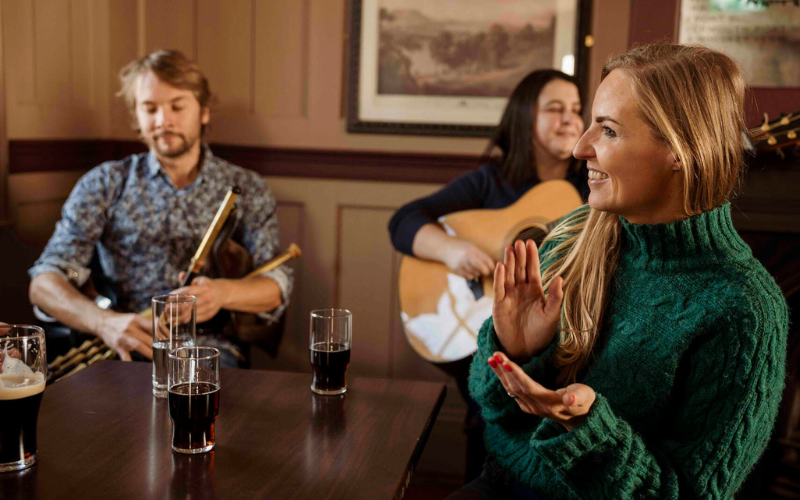
WIN a trip to Ireland: There is still time to make your Irish dreams come true
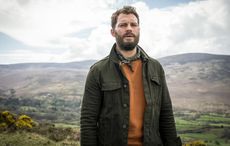
WATCH: Jamie Dornan says filming "The Tourist" in Ireland 'filled his heart'
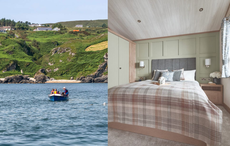
Escape to a new life in Ireland, win a dream house in Donegal

Milwaukee Irish Fest tickets now on sale, the largest Celtic festival in the world!
WWII ship where five brave Sullivan brothers died discovered on St. Patrick's Day
The intersection of Saint Patrick and paganism in Ireland
TUNE IN: St. Patrick’s Day Parade LIVE from Dublin today!
US leprechauns versus Irish fairies - a St. Patrick’s Day death match
NYC Saint Patrick's Day Parade announces line of march ahead of March 16
St Patrick's Festival is here! Your guide to the Dublin City celebrations
Sober St. Patrick’s Day to “reclaim the day” today in NYC
“Walking in the footsteps” of your Irish ancestors

Traveling With AAA podcast
Episode 19: ireland like a local.

By AAA staff
November 23, 2022
In this episode:
Travel writer Jessica Colley Clarke is married to an Irishman and considers the Emerald Isle her second home. She shares tips for travelers to fit in like a local while they experience the island’s charming towns and pubs.
Mary Herendeen:
Marvelous views by land and sea, friendly pub culture, and incredible music make this beautiful place a space at the top of my bucket list.
Welcome to Traveling with AAA . I'm your host, Mary Herendeen. Today, we are traveling to The Land of Saints and Scholars: Ireland. We are joined by Jessica Colley Clarke, a New York-based freelance writer. Her stories have appeared in The New York Times , AFAR , Condé Nast Traveler , Bon Appétit , the Financial Times , New York Magazine , and Saveur . She's married to an Irishman and considers Ireland her second home. Jessica is here to give us the insider information we need to really immerse ourselves in Irish culture and traditions, so we can travel like a local.
Jessica, thank you so much for joining us.
Jessica Colley Clarke:
Thanks for having me on, Mary. Excited to be here.
Thank you, we're excited to have you. Now, like I said, Ireland's been at the top of my bucket list, and it's just thinking about that beautiful scenery and imagining myself in one of these pubs. Ireland has a reputation for being one of the friendliest, most welcoming places in the world. When did you take your first trip and what was your first impression?
I first visited Ireland in 2007, and I remember arriving at Dublin Airport and all the people, even passport control, being so warm, humorous, and cheeky. So, for me, that first impression was really striking. I had no clue then just how deep my obsession with Ireland would run, both as a journalist and also in my personal life. As you mentioned in the intro, I met my now husband just a few days after I stepped foot in Ireland for the very first time, just walking down the street in the center of Dublin. Some people who encounter my writing assume I have Irish heritage, but I don't have any Irish background at all. There's just something about the place. It has so many layers, a soulfulness, and that just draws me back again and again.
You can really see that. It really is a beautiful place, and I imagine it feels like home when you go there if everybody is so welcoming.
It seems like everyone wants to travel like a local these days. Jessica, you have a wonderful article in the current issues of Westways and AAA Explorer magazines about pub and bookshop culture. And it really sounds like the best way to get a local experience is to visit a pub, but that seems very different than just going to a bar in some other country. Could you tell us a little bit about Ireland's pub culture and what visitors can do to fit in?
Sure, so the pub in Ireland is an extension of the Irish living room. It's an alive place. It's central to the community, and that's important because so many people who travel to Ireland may never get to go inside an actual Irish living room, but they can still have that same experience in a pub. I guess my advice if you want to fit in is to treat the pub like you would someone's home. Don't be in a rush. Be patient and be sure to ask questions. It seems simple, but talk to the barman. You might find out he's the pub owner or his family owns the pub, and he probably knows every restaurant, swimming hole, and walking trail within 100 miles.
For example, this past summer, I was in rural County Donegal and I had a couple of hours to kill so I asked the man who was sweeping up the bar in the hotel, who turned out to be the owner of the hotel, what he would do with 2 hours and he gave me step-by-step directions to this hidden pink sand beach. And it was just a stunning place that I never would've found on my own.
I'd also like to share some specific tips about fitting in at an Irish pub. I was talking about this podcast with my husband last night over dinner and his advice was, don't order a Budweiser. While it may be on the menu, be sure to order a Guinness instead. And no matter what you do, be sure to let that pint settle before picking it up for a first sip.
If you have any Irish heritage, I'd also suggest knowing the county where your family came from because that can be a great conversation starter.
One final thought on pub culture in general, as I tried to capture in my Pints & Prose story, is that when you go to an Irish pub, you won't find blaring TVs with sports or the news. People come to the pub to read or drink or talk. So, do those things and you'll fit right in.
I actually really appreciate that because I'm not such a big fan of all the TVs with different sports on and how loud it is. I enjoy just talking over a beer with a friend or a glass of wine. So, that's right up my alley. That's my jam. Pints of Guinness, shots of whiskey, do you have to drink alcohol to feel comfortable in an Irish pub, or are folks welcoming to those who aren't drinking?
This answer may surprise you, Mary, but you don't need to drink alcohol to feel comfortable in an Irish pub. The pub, especially in smaller villages, it's a community gathering place. Depending on the time of day, you might walk in and see most people drinking a pot of tea. You know, families are welcome. There might be more small bottles of Ballygowan sparkling water than glasses of whiskey on the bar. But one game changer in recent years that is worth mentioning is the introduction of alcohol-free beers, including Guinness 0. After dark, you might not see as many pots of tea on the table, but order a Guinness 0, and you'll be sure to fit right in.
One of the other things to consider is that the Irish take drunk driving very seriously. So, if someone has driven to the pub, it's very likely they won't be drinking at all and you can join them in drinking an Irish soft drink. There's a popular one called Miwadi.
Oh, tell me about that. I had no idea about this popular Irish soft drink. What's it like?
Yeah, it comes in a couple of different flavors. Orange and black currant, and it's just an Irish soft drink soda. You're likely to see them when you walk into an Irish pub.
That's interesting and really great information for those who aren't drinking on their trip.
Now, the other focus of your story is about Ireland's literary culture. Why is Ireland known as The Land of Saints and Scholars?
Oh, wow. Where to start? You walk around Dublin, and even today, a lot of people consider themselves writers or poets. It's just such a big part of their culture. Poems are plastered on bus stops, and you listen to the radio and hear people talking about books and poems, and that's something that I really connected with about Irish culture when I first visited.
Yeah, amazing. Some of the world's greatest writers have been an Irish, and pubs play a role in that as you mentioned earlier. You wrote an article about how to do a literary pub crawl. So, how exactly do you do a literary pub crawl?
The first step for a pub crawl or a literary pub crawl, according to my Irish father-in-law, is to prepare. That means that if you plan on drinking, get some ballast in your stomach, do not attempt a literary pub crawl on an empty stomach, and don't just eat a salad. Once you've had a solid lunch or early dinner, then you're ready to set out.
You have a couple options, you could join an organized pub crawl or literary tour. There are plenty of those on offer in Dublin and beyond, or you could design your own. In Dublin, you could mix in certain literary landmarks like MoLI, the Museum of Literature Ireland, between pubs mentioned in Ulysses or pubs where the poet Patty Kavanagh used to drink. But I guess the truth is that even if you don't set out on a literary pub crawl, you might be on one anyway as so many of the pubs have deep connections to writers over the centuries. For what it's worth, some of my favorite traditional pubs in Dublin include Toners, Kehoes, and Grogans. One to check out with a bit more flair in the decor is The Long Hall.
Alright, so The Long Hall has the decor and flair. Would you describe it for us?
Sure, it's sort of a Victorian pub, so some very traditional Irish pubs can feel a bit a bit spare, but The Long Hall has ornate decor and red velvet, and it feels like an over-the-top old world pub that is very welcoming and has a great atmosphere.
That sounds like fun. Now, what are some other tips you can give visitors for getting the most out of their visit to Ireland?
I'd say lean into the idea that you're a tourist and that you don't know anything. Irish people are suckers for humor, humility, self-deprecation. I think it activates their hospitality gene or something. And local knowledge is really the key to getting the most out of a visit to Ireland. Simply by slowing down and talking to people anywhere from the corner shop to the grocery store, to your taxi driver, you're likely to glean information that could define your trip. Maybe there's a local Gaelic football game you could attend, or a walk only locals know about, or somebody recently started a bakery truck and it only appears 1 day a week in town. Even a statement as simple as, “I've never been here before. Do you have any suggestions on things to do?” That's going to get an Irish person talking.
One other thought is don't be afraid to follow random signs on the roadside. I followed signs for an oyster farm, signs in Irish. The word trá, T-R-A, is the Irish word for beach. Even signs for coffee, I once stumbled on a coffee truck in Connemara, just perched high above Killary Fjord, I think it's called The Misunderstood Heron. And just by pulling over, following that coffee sign, I saw one of the most epic views I'd ever encountered in Ireland. So, basically traveling in Ireland is all about being open to serendipity.
Yeah, it sounds like don't be afraid to be curious. Awesome, that's really helpful. You also write a lot about food. Tell us about the food in Ireland. Is there anything visitors need to know?
Oh, Mary! I mean, the food in Ireland is literally in my dreams. Oysters straight from the sea, farmhouse cheeses, even the little things like the quality of the milk in your morning tea. It's all just so stellar. But there are a few tips to make sure you find the best of the best.
First, it may sound simple, but order local. Sure the avocado has made its way to Ireland, but I wouldn't recommend going in that direction. Irish food is so sublime because of the quality of local produce. I typically opt for dishes made with Irish ingredients. A bowl of vegetable soup with a thick slice of crumbly brown bread. It may just shock you how much flavor is present in such a humble lunch. Order the seafood, don't skip the chips or french fries, ask about the specials, ask what's fresh.
The second tip I'll share is that traditional isn't the only way to go. Right now, there are so many Irish chefs that are pushing boundaries with food. Chefs who gained experience cooking abroad and are bringing those sensibilities back home and marrying them with high-quality Irish ingredients. There's a restaurant called Host in the Dublin neighborhood of Ranelagh that rivals just about any restaurant I've eaten at in New York.
For the adventurous traveler looking to go off the beaten path, during my trip this summer, I had a stellar meal at a restaurant tucked away behind the Olde Glen Bar in coastal Donegal. So, that was really a meal worth traveling for.
Oh, that sounds so good. I love good food. And right now, it is pouring rain outside. I'm in California, and we don't often get a whole lot of rain where I am in Southern California, so now all I'm thinking about is a hot stew and warm bread. That sounds really good, especially for this type of weather. Would I be encountering similar weather in Ireland?
You might be. I agree with you about just how comforting that kind of food can be. The weather in Ireland is very changeable, so it may be pouring rain in the morning and then by lunchtime the sun is out. So, just because you wake up to a rainy day doesn't mean you're going be soggy all day.
That's good news. Now, how do you find good affordable places to stay?
This may be one of the best things about Ireland. Yes, the country is home to many 5-star castles and luxury hotels that are phenomenal, but that's not where your average Irish person stays. And Irish people travel, so there are plenty of good, affordable options across the country to accommodate them. I've stayed in simple bed and breakfasts that are just as comfortable as the fanciest 5-star hotel, and often the breakfast is made with maybe the eggs from the backyard chicken coop. It might be even better than the fancy hotel.
I will say that off season in Ireland is home to really attractive hotel deals. If you want a steal on those 5-star hotels, sometimes the winter and spring travel can really bring that out. But even if you want to travel in June, which I'd highly recommend because the days are so long and the light lasts until after 10 o'clock at night, you could still expect to pay maybe 125 euros a night to stay at a small independently run hotel or bed and breakfast in the countryside. Be comfortable, hospitable, and they'll probably point you to great things to do. One caveat though is not to expect great water pressure. But personally, I've made peace with weak showers in exchange for everything else those places offer.
Yeah, it doesn't sound like a bad trade off. What about traveling with young kids to Ireland? I've considered taking my little ones, I have one who will be 8 this week and a 4-year-old, and I'm just thinking about the weather, the wet, and the mud. Any tips?
Yeah, this is a question I get a lot, and I'll say that in general, Ireland is very friendly toward young kids. This is a country of big families. Many of my friends have 3 or 4 children, so the country is really built to accommodate them. Kids are welcome in pubs during the day, so if you're looking to experience the pub culture, I'd recommend a weekend lunch with the kids to soak up the atmosphere and the music.
Dublin also has great parks, but beyond the playground, what I'd really recommend is to do what the Irish do, and that's to walk. Explore the Wicklow Mountains, walk along the coast in Dublin, there's a great coastal path in Howth, or you could explore the beach at Killiney. Bring your rain jacket with the hood, bring waterproof shoes and you'll be fine. In general, Irish people love kids, so don't be surprised if bringing your kids along actually engages the Irish in conversation and opens the door to something fun.
That's really great news. I think I'm more worried about somebody else's reaction to my kids running around with the mud or whatever else. It's nice to hear that there's that welcomeness and almost a joy of seeing the kids running around. So, thank you.
Absolutely.
Now, we can't talk about Ireland without talking about music. From Enya and U2 to Inhaler or Picture This, where do you recommend people go to hear great music?
I think music is essential to the Irish experience. My single best night of music in Ireland took place in a pub called Lowry's in the village of Clifden in County Galway. Listening to a fiddler play violin there honestly brought tears to my eyes. I mentioned that pub in my Pints & Prose story.
Some other places for music include the village of Doolin in County Clare. It has one main street with lots of pubs that offer live music most nights. For something larger, the city of Galway is known for its live music, both traditional and modern. If you just go for stroll along the pedestrianized main street, you'll hear lots of music.
In Dublin, I'd recommend looking up the session schedule at pubs like O'Donoghues or The Cobblestone on the northside. These sessions are informal gatherings of local musicians, and it's just incredible to see them play together and improvise. Those sessions are usually at least weekly, if not more frequent. I'd also recommend going to the website for the National Concert Hall in Dublin and see what's on during your visit. You might catch Irish musician, Glen Hansard, or Irish fiddler, Martin Hayes, on stage and the National Concert Hall is just a gorgeous venue.
Wow, the way you're giving advice, you really are an Irish local. It really is your second home. Thank you so much for sharing that with us. Finally, before we go, Jessica, if someone is considering a trip to Ireland, what's the single most important thing that they should have in mind?
I think the single most important thing is don't overschedule yourself. Ireland is a place for serendipity, but you as a traveler have to set the stage to allow for serendipity to happen. You need to go slower than maybe you're even comfortable going. That's about the right pace for Ireland. For me, serendipity is something that’s mostly missing from my day-to-day life, so that makes it even more special to find when I travel and Ireland will definitely give that gift if you allow enough unscheduled time for it to happen.
Thank you so much for such great advice. Jessica, again, thank you for joining us today.
My pleasure. Thank you for having me.
Oh, the pleasures is all ours, I'm sure. And thank you to our listeners for being with us. If you're planning a trip, be sure to connect with a AAA travel advisor, check out aaa.com/travel , or visit your local branch. If you enjoyed this podcast, please subscribe. I'm Mary Herendeen, thank you for traveling with AAA.

Listen to more episodes of Traveling with AAA
Find hidden gems, get tips from knowledgeable travel advisors, and listen to interesting guests tell stories about their adventures.
Travel offers & deals
Hot travel deals
Get the latest offers from AAA Travel’s preferred partners.
Travel with AAA
See how we can help you plan, book, and save on your next vacation.
Entertainment savings
Save big with AAA discounts on tickets to your next adventure.
Travel with confidence
Purchase travel insurance with Allianz Global Assistance.
13 useful things to know before you visit Dublin
Apr 15, 2024 • 10 min read
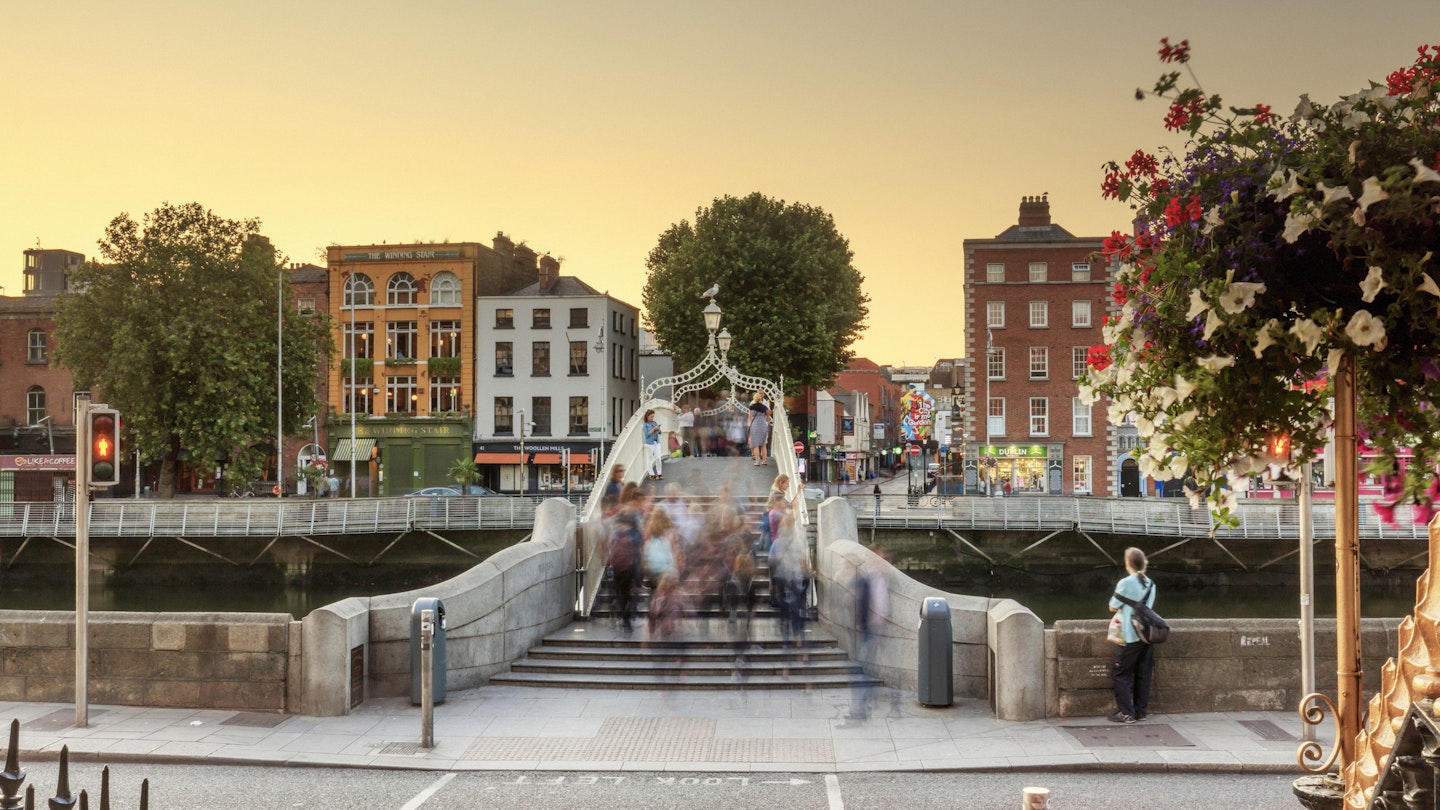
These local tips on packing, transport and etiquette can help you plan the perfect visit to Dublin © maydays / Getty Images
As a born and bred Dubliner, I’ve spent most of my life trying to make sense of my hometown.
In one way it’s a cinch to figure out: you’ll get your bearings pretty quickly and realize that you can explore most of it on foot. But it’s not just its size that makes it such a great walking city. It’s the nature of life here that makes it the ideal flaneur destination, where you amble and devote yourself to the art of observing life around you.
Spend a few days in Dublin and you’ll soon appreciate that there is much going on in this busy little town, and that to really understand the place you’ll have to move here and spend the rest of your days figuring out its wonderful idiosyncrasies and multilayered sense of humour.
In the meantime, though, here are a few local tips that will smooth your introduction to a city that has the power to grab your imagination and not let it go.
1. Plan on having at least three days in Dublin
Dublin might be a small capital city, but it’ll demand as much time from you as you’re willing to give. You’ll need at least three days to even make a dent in the place: one day to explore even just a couple of the main sights, such as Trinity College and the Guinness Storehouse . You’ll need another day to visit some of the city’s other brilliant attractions, like the Little Museum of Dublin , the Chester Beatty and just one branch of the National Museum of Ireland . And a third day to sample some whiskey and visit either of the city’s iconic cathedrals .
A couple of days more will give you a chance to stretch your legs and explore more of the city – such as the historic General Post Office and 14 Henrietta St on the northside. But you’ll have to build in some leisure time – after all there are 800 pubs in the city , a fine selection of music venues and a handful of great theatres. And what about going further afield, on a day trip to Howth , for instance, or beyond?
Planning on some beers while you're in Dublin? Here's our guide to the locals' favorite traditional pubs
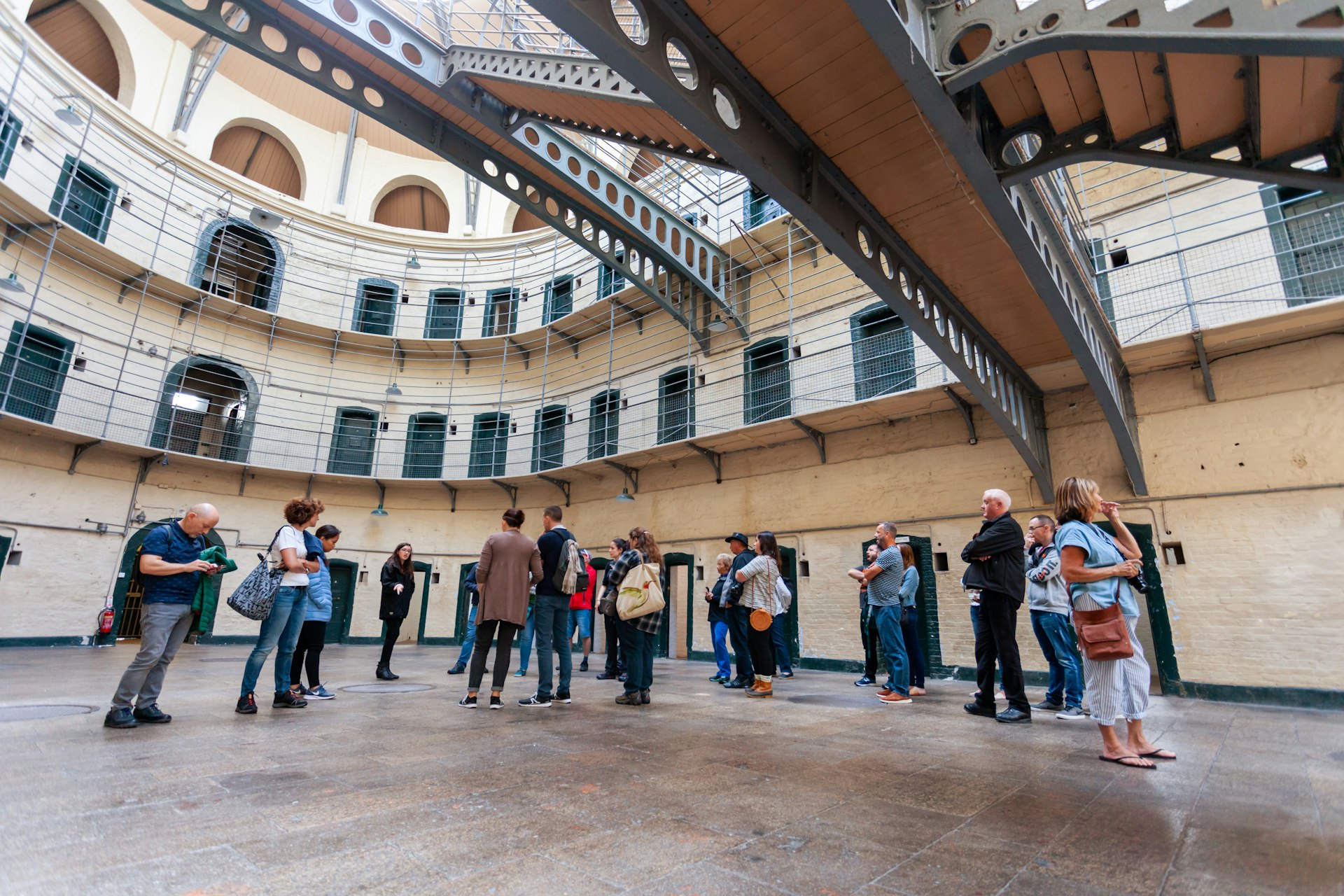
2. Dublin is a casual kind of place so pack accordingly
You can wear pretty much whatever you want in Dublin, and smart casual is the most you’ll need for fancy dinners, the theater or the concert hall. Even most work places like to keep it casual as there’s a general perception in the city that dressing up is only for that special occasion, which work rarely is.
Irish summers are warm but rarely hot, so you'll want an extra layer for when the temperatures cool, especially in the evening when the disappearing sun can make that day’s warmth feel like a distant memory.
Ultimately, the ever-changeable weather will determine your outfits, but a light waterproof jacket (preferably with a hood, unless you’re carrying an umbrella) and waterproof shoes should never be beyond reach, for the almost inevitable rain.
Plan your packing with our seasonal guide to Dublin through the year
3. Take advantage of discount cards
There is a range of discount cards that will save you money on attractions and transport. The GoCity All-Inclusive Pass (1–5 days, €79–164) gives you free entry to a bunch of top attractions, including the Guinness Storehouse, EPIC The Heritage Museum, the Jameson Distillery Bow Street, and the Big Bus Hop On, Hop Off tour. For 25% off six of those attractions, there’s the DoDublin Days Out Card (€55).
As well as the Leap Card (see below), there are good discounts to be had with the DoDublin Freedom Ticket (€48), a 72-hour travel pass that covers all public transport as well as a hop on, hop off tour.
4. Get a Leap card for use on public transport
If you’re planning on using public transport in Dublin, be sure to get a Leap Card first, as it’s cheaper and more convenient than paying for fares directly. This green plastic card is available from most newsagents and can be used on all forms of transport in the city, including buses, DART, the Luas light rail system and commuter trains throughout the county. The Leap Visitor Card (1/3/7 days, €8/€16/€32) provides unlimited travel on public transport. It can be purchased in the city and at Dublin Airport, or ordered online and delivered to your home in advance of your trip.
To use the card, just tap your card on the machine as you get on: for Luas, rail and DART services you will also need to tap off when you get off (but not for buses).
You top up the card with any amount you want (there’s a minimum of €5) at newsagents, any Luas, DART and commuter rail machines, or by downloading the Leap Top-Up App onto any NFC-enabled iPhone or Android phone: hold the card to the back of the phone and you can top up, collect pre-paid tickets and check your balance.
If you’re using a regular Leap card, rather than the Visitor Card, the TFI 90 Minute Fare applies to journeys made by Dublin Bus, Luas and most Dart trains. Any journey less than 90 minutes (including transfer times) costs €2.
Here's more useful transportation information for Dublin
5. Uber is not the best taxi option in Dublin
There are plenty of taxis in Dublin, but they can be tough to find late at night, especially at weekends when thousands of Dubliners are looking to head home to the suburbs after a night out in the city. Uber does exist in Dublin, but it’s oddly expensive; by far the most popular taxi hailing app is Freenow , which most of the city’s taxis are connected to. There are taxi ranks in the city center, but hailing them through the app is the preferred (and most convenient) option for most.
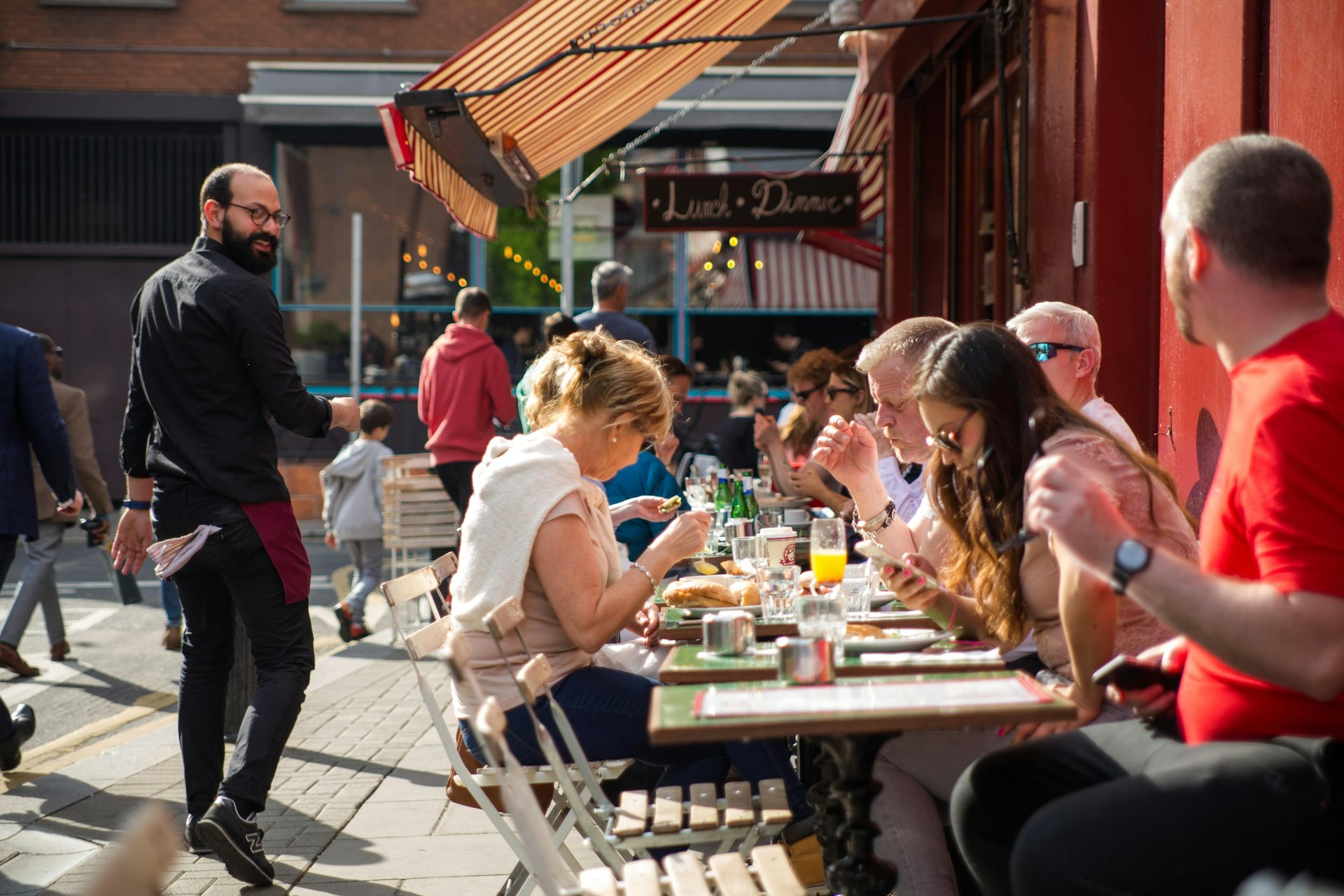
6. Get to grips with Dublin’s dining habits
Dubliners rarely eat breakfast out, so you might struggle to find a decent spot for breakfast that opens before 9am or 9:30am. The good news is that a decent cup of coffee is a non-negotiable, so there are plenty of places open by 8am to cater for caffeinated employees.
Discounted lunch specials are common, especially in the busy city center. Book tables at popular restaurants at least a few days in advance if you want to avoid disappointment or dodge the 5:30pm seating nobody else wants. For the really fancy spots including those with Michelin stars, you’ll have to plan well in advance. Some (like Restaurant Patrick Guilbaud ) will accommodate reservations no more than a month in advance, but a place like Chapter One opens its reservations list three months in advance, and then only for blocks of two months. Most tables are nabbed up pretty quickly, but if you miss out you can join the online waitlist.
7. Many of the city’s museums are free to visit
Most of the city’s larger cultural institutions are free to visit, including the three branches of the National Museum of Ireland, the National Gallery , the Chester Beatty and the Dublin City Gallery-the Hugh Lane – although there is a charge for some of the exhibitions. There are free tickets for the tours of Áras an Uachtharáin , the official residence of the Irish president in Phoenix Park and there is no charge to visit the Irish Museum of Modern Art in Kilmainham.
Smaller, privately owned museums charge a fee, but it’s rarely more than €10, and you won’t need to book your ticket in advance.
Traveling to Dublin on a budget? Here are some other free experiences to consider
8. Bottled water is a needless extravagance
In most restaurants in Dublin you’ll be offered the choice of water – still or sparkling. Unless you have a particular fondness for a specific brand of bottled water, you should always opt for tap as the city’s supply is perfectly safe, free and generally excellent. Some restaurants operate their own in-house filtration system, so for a minimal cost (usually €1–2) you have your choice of still or sparkling tap water. Same goes for filling your water bottle: tap water is fine and you don’t need to buy pricey and environmentally unfriendly plastic bottles to replenish your supply.
9. In the pub, it’s all about the rounds system
Dubliners, like the rest of the Irish, put great store in conviviality and a generous spirit. And both of these qualities are embodied in the rounds system, whereby if someone buys you a drink, you are obliged to buy them one in return. Getting sucked into the rounds system is a great way of getting to know Dubliners: strike up a conversation and, at the appropriate moment (ie when they’re just about to finish their drink), ask what they’re "having" – and before you know it you’re multiple drinks and conversations deep into a blossoming friendship.
Needless to say, you don’t have to take part in buying rounds, but if you want to understand the social glue that binds people together in Dublin, there aren't many better ways than having a few drinks with them.
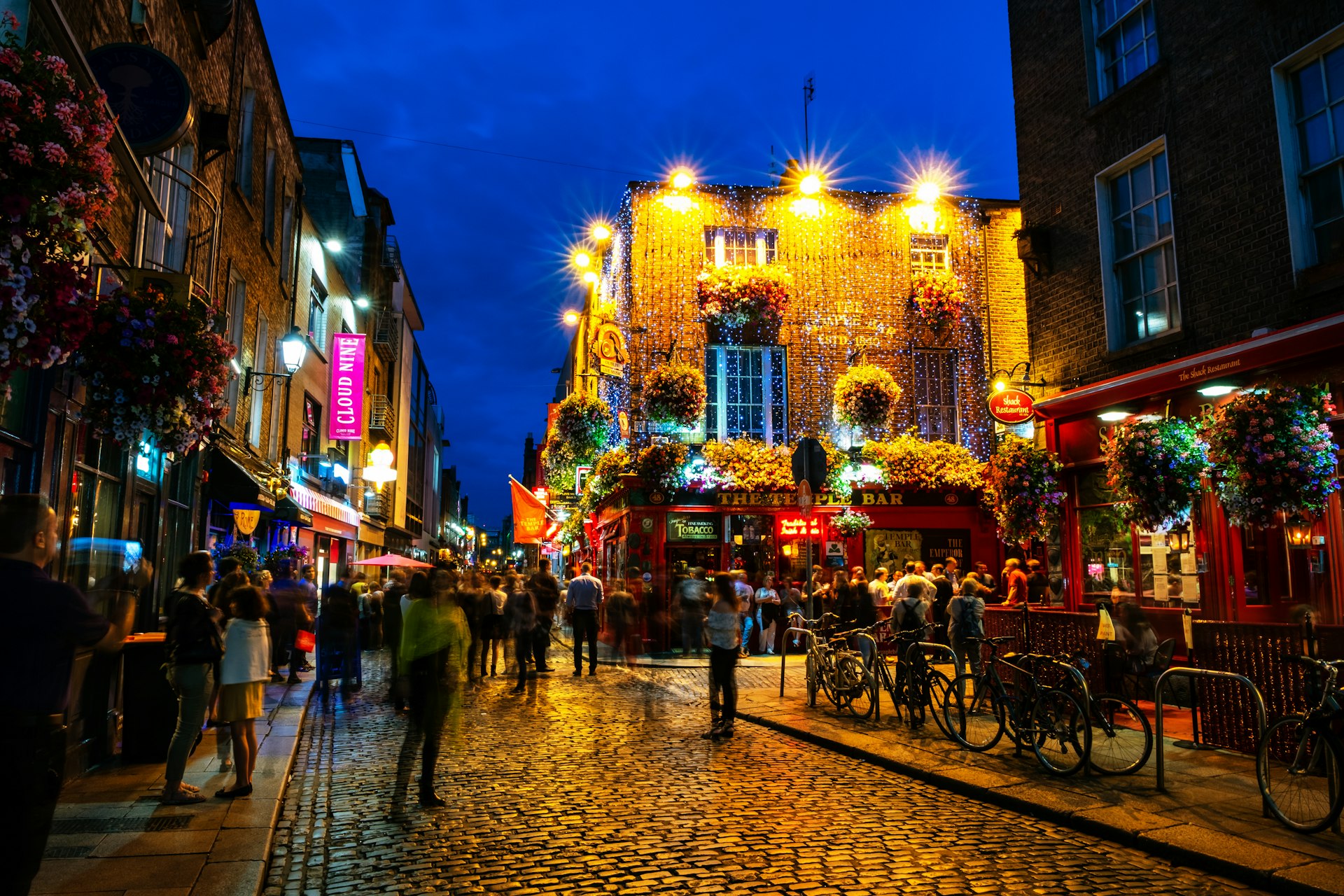
10. Dublin's nightlife is expensive
Dubliners love a good night out, but the city is a pretty expensive place to party in. The capital is notorious for the price of the pint of beer, which is higher than anywhere else in Ireland. As a result, many Dubliners will do pre-drinks at home before heading out, usually between 9 and 10pm.
Happy hour promotions are illegal in Ireland; expect to pay anything from €7–10 for a pint in the city center, but keep an eye out on pubs that sneakily raise the price of a pint later in the night, presumably when punters are too drunk to notice. It’s illegal to charge a price other than what is indicated; if it happens, your best reaction is to complain and leave.
Licensing laws are stricter in Dublin than almost any other European capital. Pubs can serve alcohol until 11:30pm Monday to Thursday, to 12:30am Friday and Saturday, and to 11pm on Sunday. Many premises apply for special exemption orders, which allows them to serve until 2:30am – usually from Thursday to Saturday nights. Nightclubs usually go until 3am, but in a lot of venues there’s barely a distinction between a huge pub that turns up the music really loudly and a dedicated club for dancing.
11. Learn to take a "slagging" among friends
Dubliners are, for the most part, an informal and easy-going lot who don't stand on excessive ceremony and generally prefer not to make too much fuss. That doesn't mean that they don't abide by certain rules, or that there isn't a preferred way of doing things in the city, though. But the transgressions of the unknowing are both forgiven and often enjoyed – the accidental faux pas is a great source of entertainment in a city that has made "slagging", or teasing, a veritable art form.
Indeed, slagging is a far more reliable indicator of the strength of friendship than virtually any kind of compliment: a fast, self-deprecating wit and an ability to take a joke in good spirits will win you plenty of friends. Mind you, even slagging has its hidden codes, and is only acceptable among friends: it wouldn't do at all to follow an introduction to someone by making fun of them!
12. LGBTIQ+ travelers are welcome in Dublin
Dublin has a pretty vibrant LGBTIQ+ scene, with some well-established bars and club nights as well as activities including hiking and sea swimming. The best-known gay bar in town is the George on South Great George’s St, followed by Pantibar , which is owned by renowned activist and drag queen Rory O’Neill, aka Panti Bliss. June’s Pride Festival is the second-biggest celebration in the city after St Patrick’s Day, a raucous festival of color and fun that runs over five days. August sees GAZE International LGBTQIA Film Festival , Ireland’s only dedicated film festival, while the International Gay Theatre Festival usually takes place in May.
13. Dublin is generally a safe city with good health care
Health and safety should not be an issue during a visit to Dublin. Pharmacies selling basic medication are easy to come by, and crime is not a major concern. Taking normal precautions (eg keeping an eye on belongings in crowds) should be sufficient. O'Connell St and the streets immediately around it can get a little shady after dark, so keep your wits about you.
Explore related stories
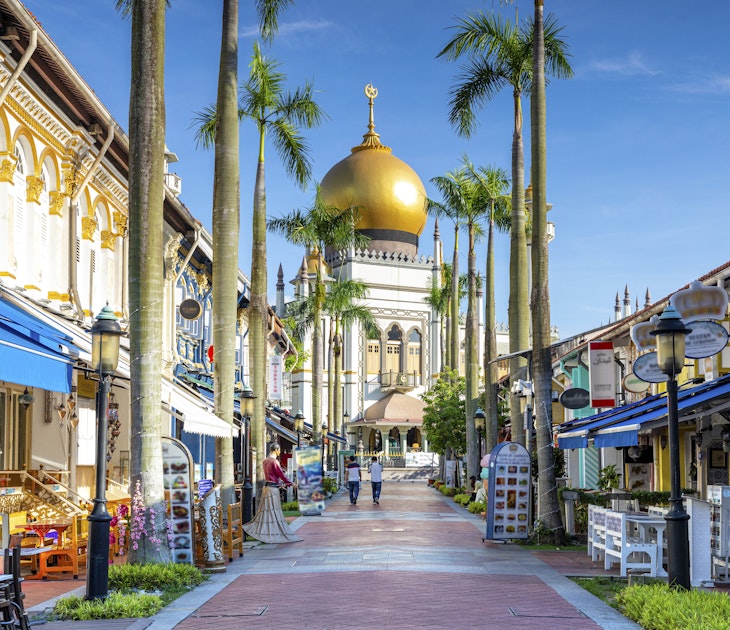
Tips & Advice
Apr 16, 2024 • 12 min read
Singapore's allure goes beyond its iconic hotels, manicured gardens and world-class airport – here are the best places to visit when you arrive.

Apr 16, 2024 • 8 min read

Apr 16, 2024 • 6 min read
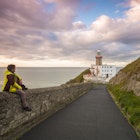
Apr 15, 2024 • 7 min read

Apr 16, 2024 • 13 min read
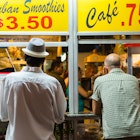
Apr 16, 2024 • 5 min read
The 16 Best Things to Do in Galway
County Galway, on Ireland’s Atlantic Way, is a land of rugged natural beauty, lively festivals, and a world-class art and music scene. From the majestic Aran Islands off Galway’s coast to the lively pubs in the city itself, here are the 16 things you have to experience on your visit to Galway.
These 16 things to do in Galway are just the tip of the iceberg. For even more amazing things to do in Ireland, connect with an Irish local . They’ll build you an awesome itinerary based on your tastes and budget, so you’ll get to see Ireland like a local—not like a tourist. Learn more .
Table of Contents
#1: tap your feet to live irish tunes, #2: befriend a hawk at ashford castle.
- #3: Step back in time at St. Nicholas' Collegiate Church
#4: Shop for cozy Connemara Wool at Galway Market
#5: nosh like a local at the pie maker.
- #6: Pose for a selfie under the Spanish Arch
#7: Absorb local history at the Galway City Museum
#8: party it up at one of galway’s festivals, #9: catch some flicks at the galway film fleadh.
- #10: Zip around the Aran Islands on bikes
#11: Stroll the idyllic Salthill Promenade
- #12: Explore the wild beauty of Connemara
#13: Enjoy Irish-language theater at An Taibhdhearc
#14: have a pint at one of galway city’s lively pubs, #15: cheer on racehorses at the galway racecourse.
- #16: Eat your way along the Burren Food Trail
The streets of Galway are alive with music— buskers play throughout the city and you’ll definitely hear music bursting at all hours from the many pubs having trad sessions (i.e. jamming to traditional Irish tunes). Galway is a music hub, and there are tons of live-music pubs to choose from—like Taaffes , Tigh Cóilí , or An Púcán . Instead of blindly trying to find a venue on your own, ask a Galway local to recommend their favorite place to listen to live music.
You’ll feel like a royal as you enter the grand stone gates of the 800-year-old Ashford Castle . Once the home of the Guinness family , the castle now houses Ireland’s School of Falconry . The School offers “Hawk Walks” where you can learn to fly one of these regal birds. Within minutes of arriving, you’ll have a new hawk best friend—and then you’re off to watch it soar through the gardens and woods of Ashford Castle.
#3: Step back in time at St. Nicholas' Collegiate Church
Visiting ancient churches is an especially awesome thing to do in Ireland (there are so many ), but Galway City’s Collegiate Church of St. Nicholas is particularly cool . It’s Ireland’s largest medieval parish church (dating back to 1320) that’s still in use. And it’s had its fair share of famous visitors.
The church is dedicated to the patron saint of children and seafarers, St. Nicholas of Myra . And seafarers like Christopher Columbus have paid respects at the church in hopes of the saint’s protection (the explorer is said to have prayed at St. Nicholas’ in 1477). Oliver Cromwell came to the church in 1652 with a less peaceful mission—during his siege of the city, locals claim that he and his soldiers attacked the church, which is why so many of the statues are missing their heads and hands.
Pro tip : If you visit St. Nicholas’ on the weekends, be sure to hit up the Galway Market right next door.
The vibrant Galway Market has been a landmark in the area for centuries. Definitely browse the stalls for Galway’s famous Connemara wool . You’ve never touched anything so sturdy and soft, and the wool socks are excellent for hiking around County Galway—not to mention a great souvenir. You’ll also find tons of local crafts, locally grown fruits and veggies, and more. Pro tip : The market is open on weekends year-round, and every day during the Galway International Arts Festival .
To eat as the locals do, head to old Galway’s historic Kirwan’s Lane and check out the Pie Maker . This small, quirky eatery is known for its ambiance and unique décor. The main attraction, however, is the pie (obviously!). Pie Maker has an unrivaled selection of savory meat pies (steak-and-Guinness, mmm), all served the Irish way—with mashed potatoes or mushy peas.
Pro tip : Have a sweet tooth? Order the Irish apple pie.
#6: Pose for a selfie under the Spanish Arch
For a visceral sense of Galway’s age, check out the incredible 16th-century Spanish Ach . The final remnants of the even older (12th-century) Norman-built wall, the arch is one of Galway’s historic gems and serves as a gateway to the Latin Quarter of Galway City . Whip out your phone to bring together past and present—and take a selfie that encapsulates Galway’s awesome, rich history.
Speaking of Galway’s rich history, definitely pay a visit to the Galway City Museum , located right behind the Spanish Arch. Free to visit, the museum leads visitors throughout Galway’s long history—from prehistoric times to the present day. Be sure to check out the museum’s “ Galway Hooker ”—a real, life-sized coastal boat, suspended from the ceiling, as well as the awesome view of the River Corrib from the museum’s top floor.
If you’re in Galway during one of its numerous festivals, you’re in for a treat! Galway’s action-packed calendar of festivals fills the city with energy—especially in the summer. Some of our favorite festivals in Galway include the Galway International Arts Festival held each July, and the Galway International Oyster Festival in September—which is billed as one of the greatest seafood festivals on the planet.
Pro tip : Connect with a local for help planning your trip around one of these amazing city-wide parties.
Speaking of Galway festivals, we have to bring special attention to one of our favorites: the Galway Film Fleadh . We aren’t alone in our utter adoration of this festival—it’s considered one of the 25 coolest film festivals in the world . For six days every July, the Galway Film Fleadh becomes the ultimate hangout for movie lovers and filmmakers alike. Come to Galway and hear moviemakers’ stories, attend a workshop, or watch classic and new movies.
#10: Zip around the Aran Islands on bikes
The gorgeous and isolated Aran Islands are a must-see day trip if you’re visiting Galway—and there’s no better way to explore the islands than by bike. Indulge in one of Ireland's most awesome things to do and rent a bike near the ferry terminal—then spend the day exploring! The rustic Arans hold many ancient secrets in their stone forts, timeworn churches, and spectacular cliffs. Be sure to check out the prehistoric stone fort of Dún Aonghasa on the island of Inishmore . And bask in the islands’ rustic feel—the Aran Islands didn’t even have electricity until 1973.
Pro tip : Discover the best biking trails by asking an Irish local to help you plan your route.
Salthill is a cute, picturesque village in Galway Bay that boasts a 2-mile-long promenade along the shores of the Atlantic Ocean. The promenade is a great place to take a relaxing stroll, offering views of the Aran Islands to the left and Galway City to the right. You can walk to Salthill from Galway in about 30 minutes. After visiting the beach, warm up (or cool down) by stopping in at one of Salthill’s many cozy cafes and pubs.
#12: Explore the wild beauty of Connemara
We love Connemara for its incredible wool, but this scenic region of County Galway offers so much more. The area is absolutely gorgeous. Although you should ask a local for the best spots to see—they can even make you a custom map—we’d recommend renting a bike and pedaling along Clifden’s Sky Road , which offers breathtaking views of the Irish coast (oh hey, your local can also help you rent that bike).
Pro tip : Other highlights of the area are the impressively grand Kylemore Abbey , scenic Killary Fjord , and Derryclare Island .
For an immersive sense of Irish culture, take in a show at An Taibhdhearc . This awesome theater in the City of Galway puts on awesome plays and performances that feature traditional Irish music, song, and dance. Although many of the shows are performed in the Irish National language (Gaelic), the theater also puts on many English-language productions. The theater is a key part of the International Arts Festival and hosts an amazing Christmas pantomime every holiday season.
We never get tired of having a pint at an Irish pub, and Galway has one of the most spirited pub scenes in all of Ireland. Obviously, you should get some pub recs from someone who actually lives in Galway , but we’d recommend starting the night at Tig Coili pub on Mainguard Street. Have a pint, chat with some locals, and enjoy one of the endless trad sessions that the pub is known for.
A highlight of Galway’s summer season happens at the Galway Racecourse . Hundreds of thousands of people converge at this Galway racecourse for a week-long binge of horse-racing and fun events like Ladies Day (a fashion show of sorts) and the Mad Hatters Competition (prizes go to the craziest and most colorful hat-wearers).
#16: Eat your way along the Burren Food Trail
Burren (which is actually in County Clare, but extends into County Galway) hosts an incredible gastronomic event that foodies adore . The Burren Food Trail is a restaurant, market, and food-shop crawl that takes you on a farm-to-fork journey every Monday from May through October.
Follow one of the 5 themed trails (seafood, meat, veggie, etc.) to uncover the path your food takes from field to table. Don’t worry about your waistline—you’ll have a chance to walk off the tasty treats at the UNESCO World Heritage Site at Burren , one of the only places on the planet where Arctic, Mediterranean, and Alpine plants grow side-by-side.
With this list of 16 things to do in Galway, you’re almost ready to explore this awesome part of Ireland. But to go beyond the guidebooks, connect with an actual Irish local . Not only will they design a unique itinerary customized to your interests and style, but they’ll let you in on Ireland’s secrets that only locals know. Why see Ireland like a tourist when you could see it like a local? Questions? Send us a message .
- Connect With a Local to Plan Your Trip
- 20 Amazing Things to Do in Cork 2024
- The Best Places to Visit in Ireland 2024
- 30 Essential Things to Do in Ireland
- The 13 Best Places to Stay in Ireland 2024
- Lovely Things to Do in Limerick, Ireland
Looking for more info?
How to travel like a local in Ireland
by Shane McDonald | Oct 5, 2022 | General Travel , Travel

Ireland is a beautiful country with an incredible culture. Make the most of your time here and get an authentic Irish experience by travelling like a local. Enjoy all the hidden gems without the bustle and rush of tourists.
Stay in a local accommodation instead of a hotel
Local accommodation can include house-swaps, renting an Airbnb , or staying in a quaint, local BnB. The advantage of staying in an accommodation that isn’t a large hotel is that you often experience more of the local culture. Locals will advise you on the best food spots or events happening. Not to mention that staying in a home or apartment feels much cosier!
Visit the Sweet Dingle Peninsula
Down in the southern-west corner of Ireland, in county Kerry , you will find the wild and wonderful Dingle peninsula. Off the beaten path and away from the main tourist attractions of Ireland, you will get a real feel of Irish culture. The area is home to incredible landscapes overlooking the Atlantic ocean. It is also known for its local pubs, which will sell you tools or a classic pint, otherwise known as hardware pubs.

Visit a local Irish pub
Apart from the famous hardware pubs down in Dingle, Ireland has a huge pub culture. Their pubs are so renowned that you can find an Irish bar in almost every city around the world! And where best to experience the local pubs and their ambiance than in Ireland itself? If you head down to your closest pub, you will surely meet many lively and welcoming locals.

Visit the town of Tramore
Tramore is a lovely seaside town on the southeast coast of Ireland, less than a 30-minute drive from Waterford. As well as being a scenic place to visit, Tramore is famous for its mini-casinos. The town has plenty of these tiny casinos where you can play your favourite games. The Atlantic Arcade is one you may want to visit for a fun night out alongside the locals. However, if you prefer to avoid the crowd, you can always have a go at some Irish slots online from the comfort of your accommodation.
Now you know the best tips to explore Ireland like a true local. Enjoy tranquil accommodations and lively pub culture, and fully immerse yourself in the Irish way of life. Who knows, you might find more secret spots recommended by locals!

#PP – How to travel like a local in Ireland – Travel Category
Follow on Social Media
- View ShaneMcDonald.ie’s profile on Facebook
- View mrshanemcdonald’s profile on Twitter
- View shanemcdonald.ie’s profile on Instagram
- View shanemcdonaldinwaterford’s profile on LinkedIn
Follow on Facebook
Politics latest: UK needs Iron Dome to protect London, MP argues; Rwanda plan dealt another Lords defeat
Rishi Sunak's smoking ban passes convincingly on second reading, despite high-profile Tory MPs voting against it - while his Rwanda bill is defeated again. Meanwhile, the PM holds a telephone call with his Israeli counterpart Benjamin Netanyahu.
Tuesday 16 April 2024 23:17, UK

- Rwanda bill suffers four defeats in Lords - teeing up crucial day
- Government wins vote on smoking ban despite opposition from ministers | Who voted against?
- UK needs Iron Dome like Israel to protect London, MP argues
- Jon Craig: PM will hope Tory rebellion doesn't mean he's at fag end of premiership
- Sunak tells Netanyahu that 'calm heads should prevail'
- Number 10 criticises 'disturbing' bid to shut down conference by Brussels police
- Farage - who addressed event - speaks out
- Darren McCaffrey: Crackdown only helps cancel culture cause
- Live reporting by Ben Bloch and (earlier) Faith Ridler
Thank you for joining us in the Politics Hub for another busy day in Westminster.
Here's what happened:
- Peers in the House of Lords inflicted another four defeats on the government over the legislation to rescue the embattled Rwanda scheme, sending the bill back to the Commons as the parliamentary "ping-pong" continues;
- Rishi Sunak's flagship bill to ban young people from ever being able to smoke passed its first major hurdle in the Commons - but not without a significant number of Tories opposing it;
- Just 178 Conservative MPs voted in favour of the bill out of 347 - barely half of the parliamentary party - and six ministers, including Business Secretary Kemi Badenoch, voted against it;
- A local mayor sent police to shut down the National Conservatism Conference where Reform UK's honorary president Nigel Farage and former home secretary Suella Braverman were speaking - but the conference continued, and the attempt to stop was condemned as "unconstitutional" by Belgium's president;
- Rishi Sunak finally spoke by phone with Israeli PM Benjamin Netanyahu following Iran's attack on Saturday, telling him this is a moment for "calm heads to prevail";
- The government unveiled plans to make the creation of sexually explicit deepfake images a criminal offence.
Join us again from 6am for the very latest political news - and for live coverage of the first session of Prime Minister's Questions in nearly a month at 12pm.
We heard a short while ago from Tory MP and former defence minister Tobias Ellwood who is suggesting that the UK needs an Iron Dome system, like the one that protected Israel from Iran's missiles ( more about the system here ).
He told Sky's The World with Yalda Hakim that the conduct of warfare is changing, which was visible with Iran using drones, cruise missiles, and ballistic missiles as part of a simultaneous attack.
"If that is the way that warfare is now being conducted - we see this not just in the Middle East with Iran's attack, but also with what's going on in Ukraine - we need to move with the times as well."
He added that the UK already has "impressive air defence assets", but says: "There is nothing protecting London, for example, in the same way that Iron Dome operates over Israel."
Asked if Britain's focus should be on properly arming itself rather than an Iron Dome system, Mr Ellwood said there "needs to be a thorough review of the threats that are emerging".
He pointed to Russia's development of low-yield tactical nuclear weapons.
"We need to perhaps wake up to the fact that we've had three to four decades of relative peace - we've now entered a new era of insecurity."
Asked how likely it is the UK will see an attack like the one Iran launched, Mr Ellwood replied: "At the moment, it's not."
He said the "biggest threat" to Europe is Russia's Vladimir Putin, and he said both the US and Europe have hesitated in providing support for Ukraine, unlike Britain.
"We need to brace ourselves for an alliance of authoritarian states working together to challenge global order," he concluded.
As we reported earlier, Business Secretary Kemi Badenoch voted against Rishi Sunak's flagship legislation to stop young people from ever being able to smoke.
It has set tongues wagging that her public opposition to the PM's bill is leadership posturing.
But she rejected such suggestions out of hand, saying it is a "shame" people are seeing it that way.
She told LBC: "We need space for people to be able to have disagreements without it being put down to ulterior motives.
"Everything we do is looked at through the prism of the worst possible intention.
"And I think that's one of the reasons why politicians feel they don't get a fair hearing, that many people decide not to do this job.
"Sometimes we have to take what people are saying at face value."
Over a year ago, Rishi Sunak made five pledges for voters to judge him on.
The prime minister met his promise to halve inflation by the end of 2023.
But with the general election approaching, how is Mr Sunak doing on delivering his other promises?
You can see the progress for yourself below:
Earlier this evening, Rishi Sunak's bill to ban young people from ever being able to smoke passed its first Commons hurdle.
The government is claiming this as a big win - but was it really?
Just 178 Conservative MPs voted in favour of the bill out of 347 - barely half of the parliamentary party.
A number of sitting ministers voted against it, including:
- Business Secretary Kemi Badenoch;
- Northern Ireland minister Steve Baker;
- Cabinet Office minister Alex Burghart;
- Science minister Andrew Griffith;
- Digital minister Julia Lopez;
- Housing minister Lee Rowley.
Much of the right of the party voted against it, including party deputy chair Jonathan Gullis, ex-PM Liz Truss, high-profile ex-minister Robert Jenrick, former cabinet minister Sir Simon Clarke and Sir Jacob Rees-Mogg, among many others.
Also notable were the abstentions, with 106 Tory MPs not casting a vote either way - including the Leader of the House Penny Mordaunt.
It was a free vote, meaning the Tory high command did not tell its MPs how to vote either way. But there is a clear split within the party.
Meanwhile, not a single one of the 201 Labour MPs went against the party's instructions to vote against the bill. But 40 did abstain, however.
"Absolutely nuts" was how former prime minister Boris Johnson described Rishi Sunak's plan to gradually phase out smoking – banning anyone born since the start of 2009 from ever being able to buy cigarettes or tobacco products like vapes.
Liz Truss, who was also briefly prime minister in between the two men, is also among some critical of the proposal – which she described as "profoundly un-conservative".
Tories were given a free vote in the Commons – allowing them to vote with their conscience, not necessarily the government.
But will the policy create a smoke-free generation? And what will it mean for Conservative Party ideology?
Niall Paterson looks at the health implications with Alice Wiseman, vice president of The Association of Directors of Public Health, and the politics of the policy with Sky's political editor Beth Rigby and Tory peer Lord Frost, who disagrees with the planned legislation.
👉 Listen above then tap here to follow the Sky News Daily wherever you get your podcasts 👈
Rishi Sunak has been badly burned by a Commons rebellion by nearly 60 Tory MPs who voted against his flagship Tobacco and Vaping Bill.
When Commons deputy speaker Dame Eleanor Laing called the vote just before 7pm, the rebels on the Conservative backbenches made a lot of noise screaming "No!"
And minutes later, it was revealed that their rebellion was not only noisy, but also a defiant show of strength by the mutinous Tory Right that will leave the PM and his allies gasping.
In an ominous but entirely predictable warning shot to the PM, the list of rebels included a roll call of the right-wing contenders for the Tory crown, both serving and former Cabinet ministers.
Topping the list of leadership candidates desperate to please those party activists was Kemi Badenoch, the business secretary, who never misses an opportunity to play to the Tory gallery.
Next was the equally ambitious Robert Jenrick, who also voted against the bill, while Penny Mordaunt, another darling of the activists, appears to have abstained.
Suella Braverman, the former home secretary, dashed back from a controversial conference of right-wingers in Brussels so she could fire her latest salvo against Mr Sunak.
But the most high-profile and public rebel during the six-hour debate was former prime minister Liz Truss, who made a speech lashing out at "virtue-signalling" and "finger-wagging, nannying control freaks".
Read Jon's analysis in full below...
After the government's bill to stop young people ever smoking passed its first hurdle in the House of Commons, Labour's shadow health secretary spoke to broadcasters with his party's view.
Wes Streeting said Labour has "led the debate on phasing out smoking in our country and making sure this generation of children and young people grow up in a smoke-free Britain".
He said: "It is thanks to the votes of Labour MPs we got this measure through the House of Commons today because of the size of the Conservative rebellion."
"Labour is proud not to play politics on the vote. We will get this bill through as quickly as possible. So let's get our skates on, get it through the Commons, get it through the Lords and get it under the statute book."
He pledged that Labour will implement the ban if it forms the next government.
Mr Streeting also said the government has been "slow to act" on the "explosion in the number of children and young people vaping", which he said will have "serious consequences" for their health, and also for their education, as "kids are skipping school to go and vape".
By Becky Johnson , communities correspondent
Immigration enforcement staff have had their leave cancelled as the government hopes its plan to send some asylum seekers to Rwanda will become law this week.
Speaking to Sky News, Lucy Moreton from the ISU, the union for borders, immigration and customs, said the staff who will be expected to arrest and remove people still know very little about how they will be expected to force people on to planes.
She said immigration enforcement officers have had all leave cancelled for six weeks, beginning the week after next.
Initially, they had been told leave was cancelled from next week but that has been delayed.
Read the full story here:
The IMF is reporting that the UK economy is going to be growing less than expected this year, and we asked Labour's Jonathan Ashworth how concerned he is about the statement of the economy.
He said growth has been "anaemic", and blamed the Conservatives for the cost of living crisis.
"And then today you've got Liz Truss parading around the studios, asking people to congratulate her for the action she took."
"But the serious point is that the Conservatives haven't learned the lesson. In Liz Truss's book, she's talking about abolishing national insurance. That's exactly the policy. Rishi Sunak has adopted."
Sophy Ridge pointed out that it is a long-term ambition, and he replied that he has not yet explained how he will fund it.
"He's got to explain how he's going to fund a £46bn commitment to get rid of National Insurance. Is it borrowing, putting pressure on mortgages? Is it cuts, the NHS, the state pension, or is it more tax for pensioners?
"Until he explains that, people can conclude he's making exactly the same mistakes that Liz Truss made."
Be the first to get Breaking News
Install the Sky News app for free


IMAGES
VIDEO
COMMENTS
Head out to sea with a local tour provider like Aquaventures, Whale Watch West Cork, Baltimore Yacht Charters, or Baltimore Sea Safari. Lough Hyne, Ireland's first maritime nature preserve, is ...
One good choice is Adare Country House. It's located in Adare, Ireland, a County Limerick village. There are many local restaurants, and it couldn't be a more charming B&B. Trip Advisor reviewers love the owners. If you want to stay in Dublin, consider Pembroke Hall. It's a townhouse that offers up an amazing breakfast.
Disadvantages. The biggest disadvantages of using a car for getting around Ireland is that it'll be expensive for solo travellers and it's likely to make the trip unnecessarily stressful for some drivers. If you're on your own, it can be expensive. If you're a nervous driving, it can make the trip stressful. 2.
Caption. Ireland is full of spectacular national parks, but Killarney is one of the most beloved by locals. The Irish Times gushed that although Killarney is well-known, it's one of Ireland's best places to spend the day.Why? Ireland's oldest national park has something for everyone—opportunities to hike and kayak, tons of animals and birds, and even a castle (Ross Castle, a 15th ...
Ireland is a country full of natural beauty, cultural heritage, and friendly people. Whether you want to explore the stunning Cliffs of Moher, the dark-sky park with Milky Way views, or the ...
Experience Ireland like a Local. Our favourite things to see and do in Ireland! ... Great news for potential travel as Ireland ranks number one on Bloomberg's Covid Resilience Report... View blog post 16 September 2021 | Irish Culture. Wild Atlantic Way Ireland. The Ultimate Guide to the Wild Atlantic Way, Ireland The ULTIMATE 'once in a ...
Letting a door slam behind you doesn't swing in Ireland. - sorry, excuse the pun I just had to. 8. Hanging Up the Phone. If you do happen to ring someone on the phone while visiting Ireland. Even if it is a restaurant to make a reservation, a tour company to book a tour or just for general chit-chat.
Ireland may be relatively small, but its dramatic coasts, country roads, and historic cities have visitors wishing for more time. To help maximize your trip, we consulted local experts, ranging ...
Explore Ireland like a local with my 7-day itinerary: uncover hidden gems and beloved spots in a thoughtful guide crafted with love for my homeland. ... I'm Isabelle, aficionado of immersive travel experiences and unique, luxurious hotels. You'll most likely find me camera in hand, or nerding out on research in advance of my next trip. A major ...
The list of things to do is long: horses, spa, fishing, river cruises, falconry…but to best explore the beauty of this massive estate I suggest you rent a bike and wander. Killary Harbour County ...
Howth, County Dublin. Almost 30 percent of Ireland's population lives in Dublin, but only a fraction of those reside in Howth. The tiny town, built around a lively harbor, is a side to Dublin that ...
Step #1: Make a bucket list. Step #2: Decide when you want to travel. Step #3: Pick a couple of cities to explore in-depth. Step #4: ...or rent a car to see them all! Step #5: Plan to explore more than Dublin. Step #6: Consider crossing the border. Step #7: Connect with an Irish local to plan your trip.
Table of Contents. #1: Stand on the majestic Cliffs of Moher. #2: Pub hop through Dublin. #3: Bike around the rustic Aran Islands. #4: Explore the haunted Leap Castle. #5: Kiss the Blarney Stone. #6: Witness the immense columns of the Giant's Causeway. #7: Eat a Full Irish Breakfast.
Spend a day at the magical fishing village of Kinsale. Take a longer day trip to see the spectacular views through the Ring of Kerry (their Pacific Coast Highway). Enjoy seeing all the cows, bulls, donkeys, sheep, etc. …and often in pastures with ocean views (lucky animals!). Eat and drink like a local. Some of the best baked goods can be ...
It costs 3.50 EUR. Trekker Four Day - Unlimited travel on Irish Rail within a four-day period for 88 EUR. Car Rental - Renting a car in Ireland is affordable, with prices starting around 25 EUR per day for a multi-day rental. Renting a car is the best way to get around the country too.
21. Don't assume waiters receive your tip in restaurants. In restaurants in Ireland, it's common practice to leave 10-15% of the bill as a tip for the waiter. Some establishments will already add this to the final bill. If this is the case, there's no need to leave a tip.
The goal is to not feel like a tourist but rather a part of the local communities. Your guide will become your friend and this is how you really get off the beaten track. ... Is a self-drive tour the best way to travel Ireland? For many people the 2 main reasons for choosing a self-drive tour are independence and budget. Self-guided tours are a ...
10. Ireland has some cool low-cost local supermarkets. Take advantage of these by buying some basic pick-me-ups like canned or bottled juice, cereal bars, digestive biscuits, and crisps. They come in handy when you get hungry in between exploring sights or during long-distance trips to the countryside. 11.
7. Collegiate Church of St. Nicholas in Galway, County Galway, Ireland. It is a medieval church founded in 1320 and is in regular use today. Image: Getty. Almost every visitor to Galway gets to ...
Episode 19: Ireland Like a Local. By AAA staff. November 23, 2022. In this episode: ... It seems like everyone wants to travel like a local these days. Jessica, you have a wonderful article in the current issues of Westways and AAA Explorer magazines about pub and bookshop culture. And it really sounds like the best way to get a local ...
6. Get to grips with Dublin's dining habits. Dubliners rarely eat breakfast out, so you might struggle to find a decent spot for breakfast that opens before 9am or 9:30am. The good news is that a decent cup of coffee is a non-negotiable, so there are plenty of places open by 8am to cater for caffeinated employees.
Table of Contents. #1: Tap your feet to live Irish tunes. #2: Befriend a hawk at Ashford Castle. #3: Step back in time at St. Nicholas' Collegiate Church. #4: Shop for cozy Connemara Wool at Galway Market. #5: Nosh like a local at The Pie Maker. #6: Pose for a selfie under the Spanish Arch.
The fictional woman who sold fish on the streets is an important figurehead of Irish culture and inspired one of Ireland's most famous tunes with the refrain: "Alive, alive, oh!". This couldn't be a better metaphor for the state of Ireland right now. It's open. it's alive, and the locals are extremely welcoming.
Make the most of your time here and get an authentic Irish experience by travelling like a local. Enjoy all the hidden gems without the bustle and rush of tourists. Stay in a local accommodation instead of a hotel. Local accommodation can include house-swaps, renting an Airbnb, or staying in a quaint, local BnB. The advantage of staying in an ...
We heard a short while ago from Tory MP and former defence minister Tobias Ellwood who is suggesting that the UK needs an Iron Dome system, like the one that protected Israel from Iran's missiles ...